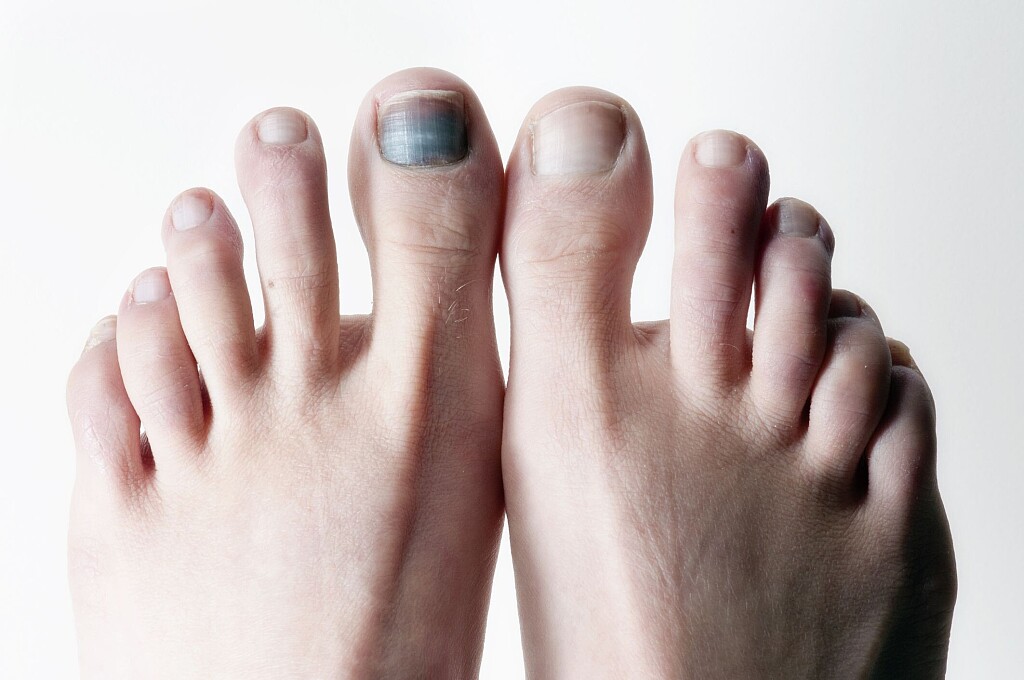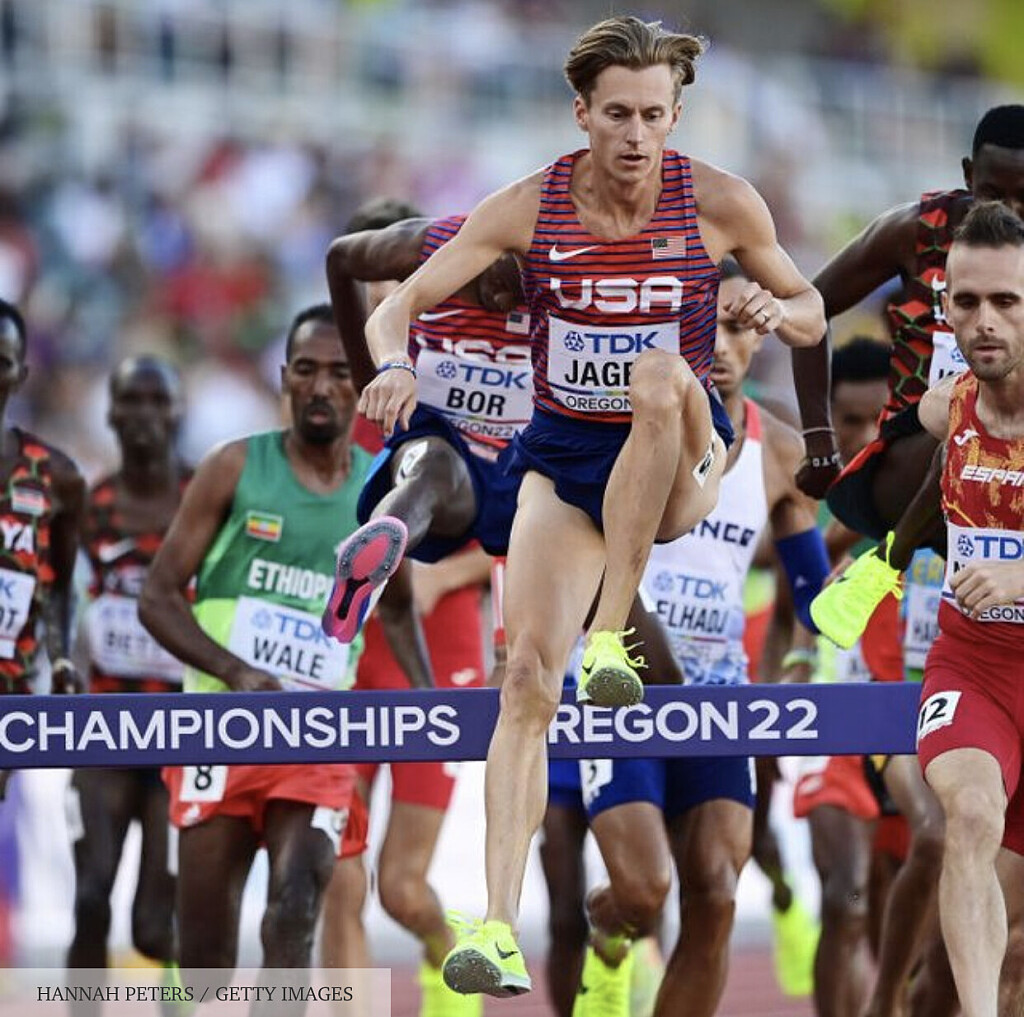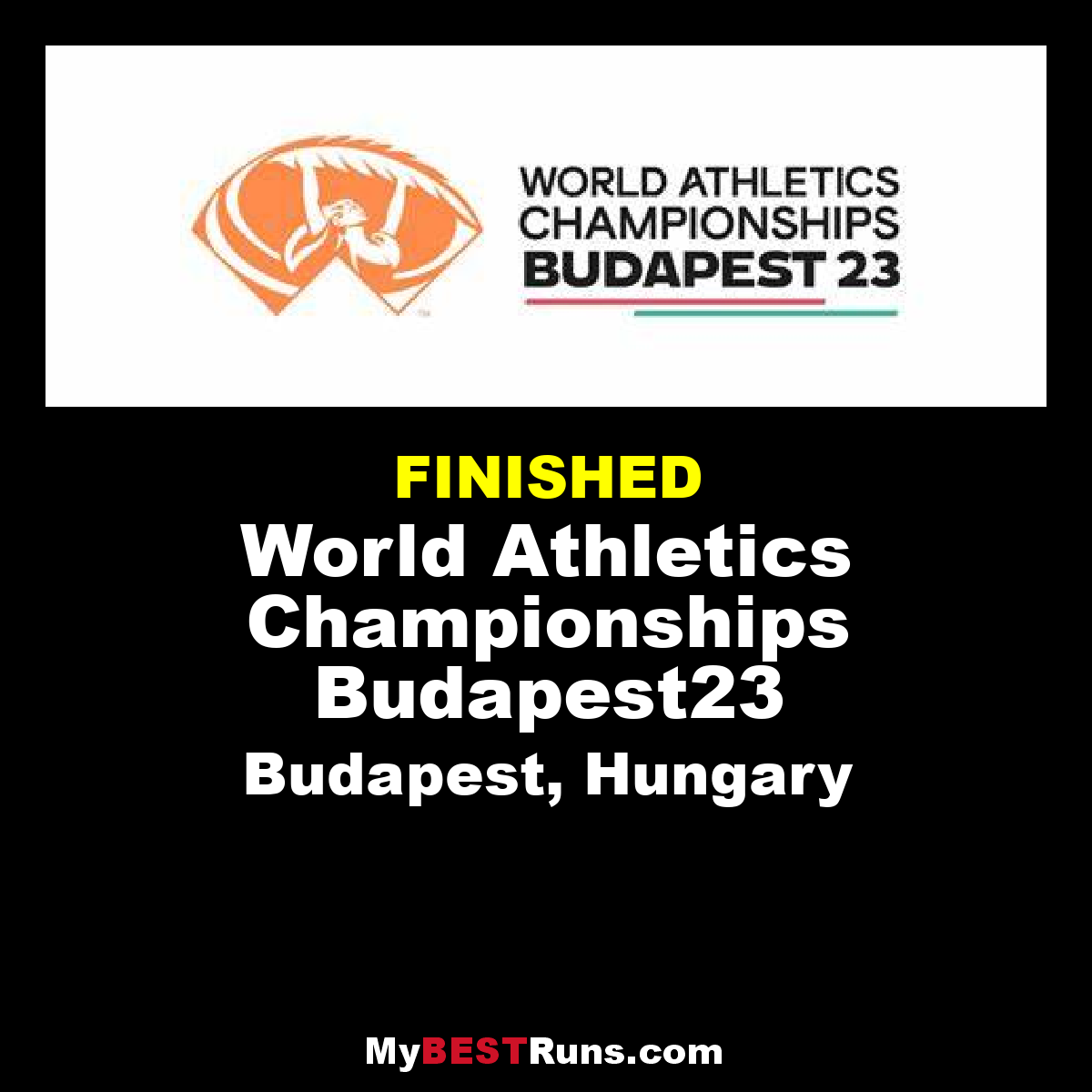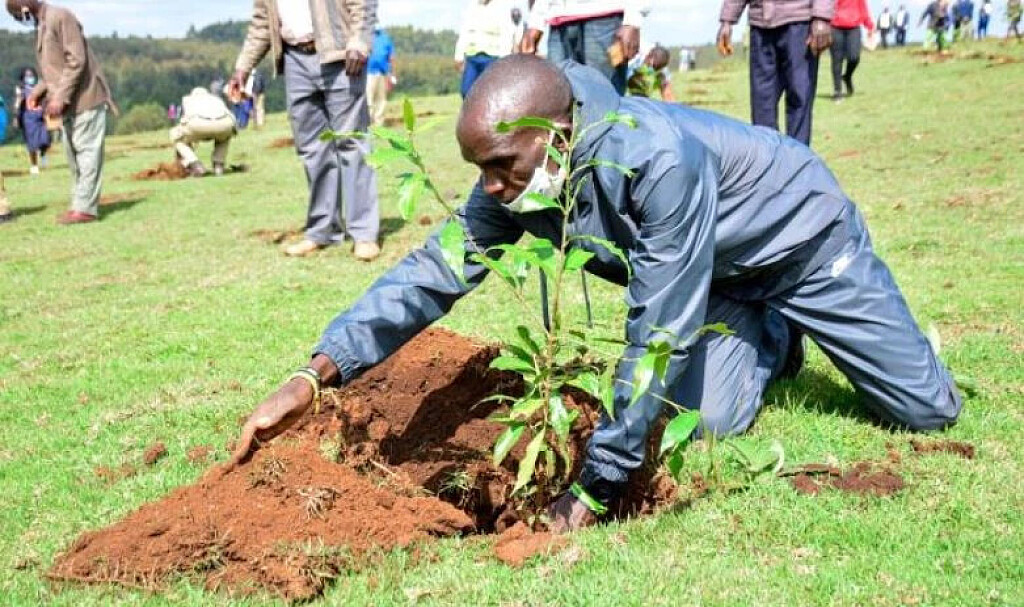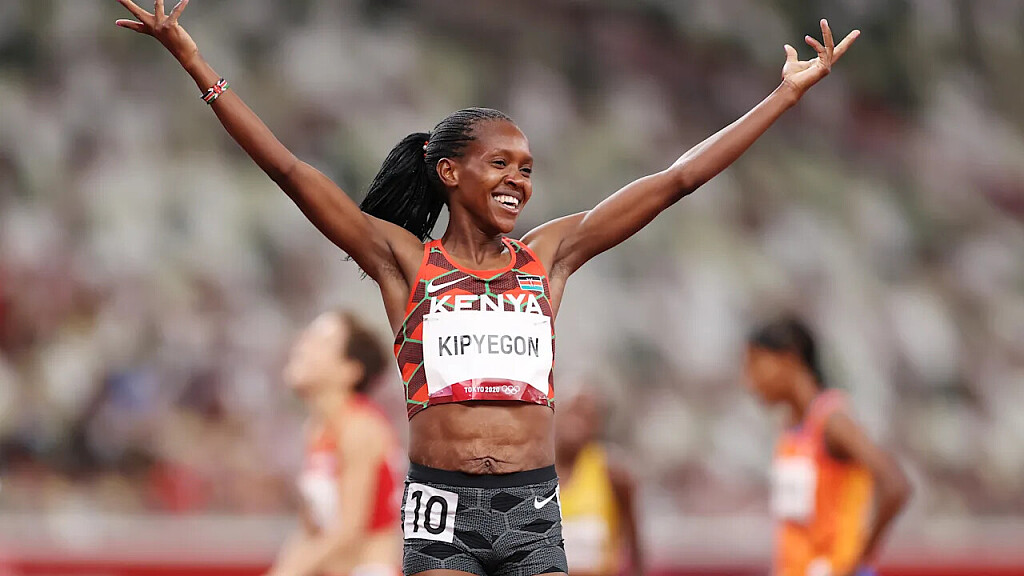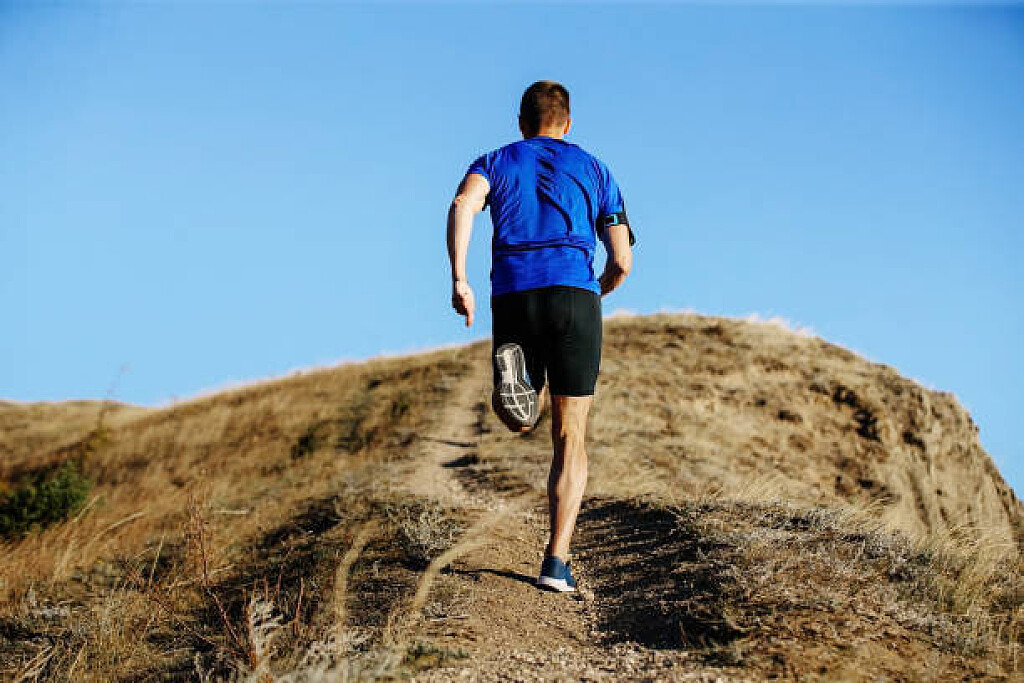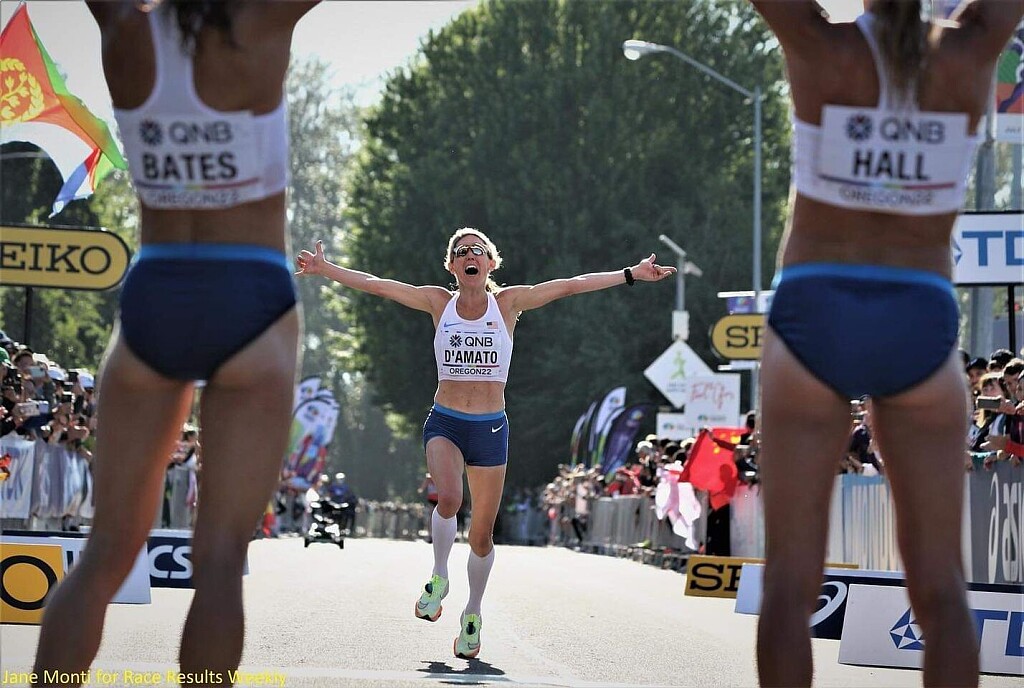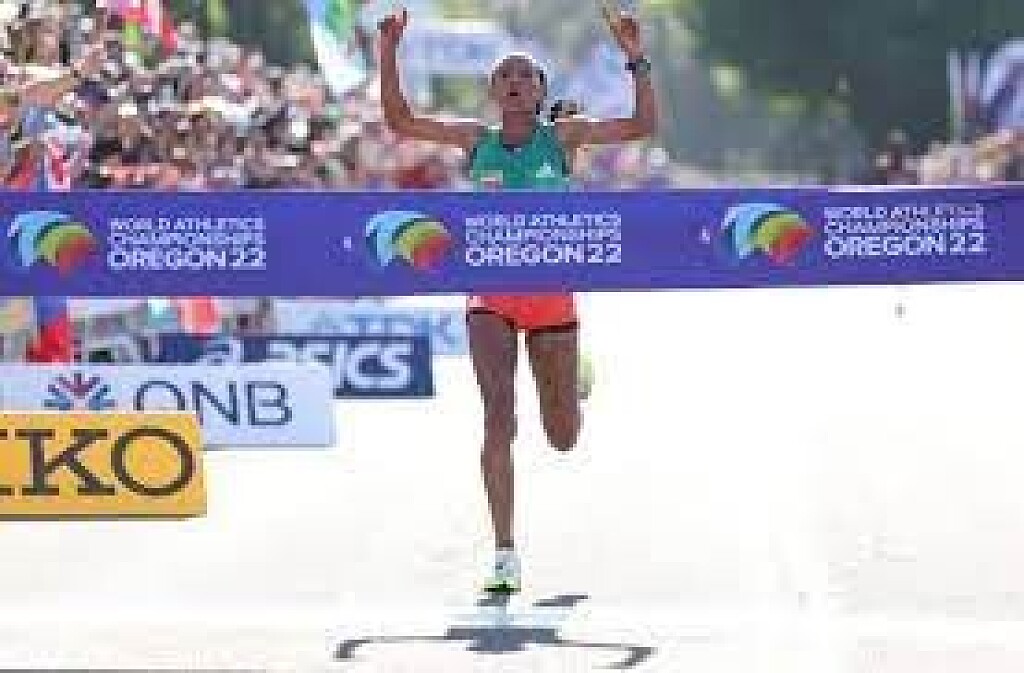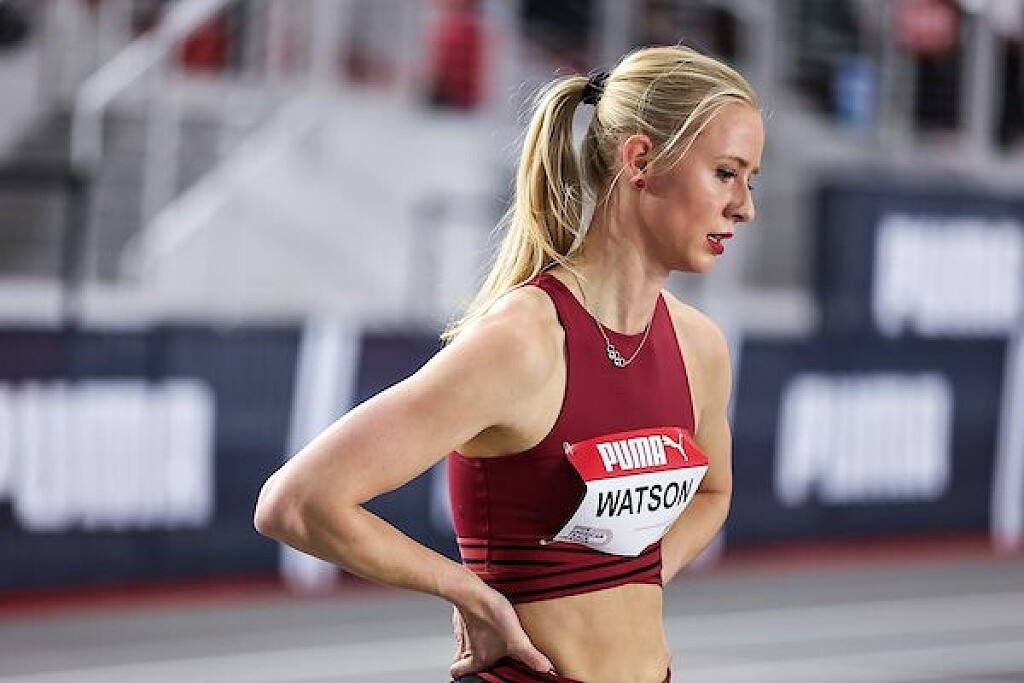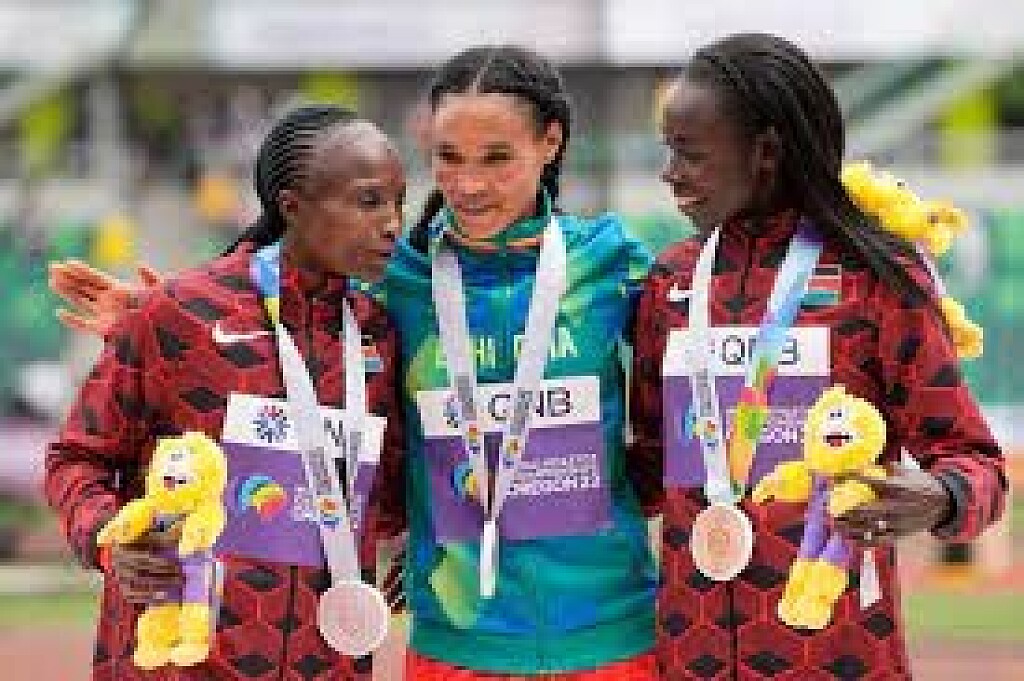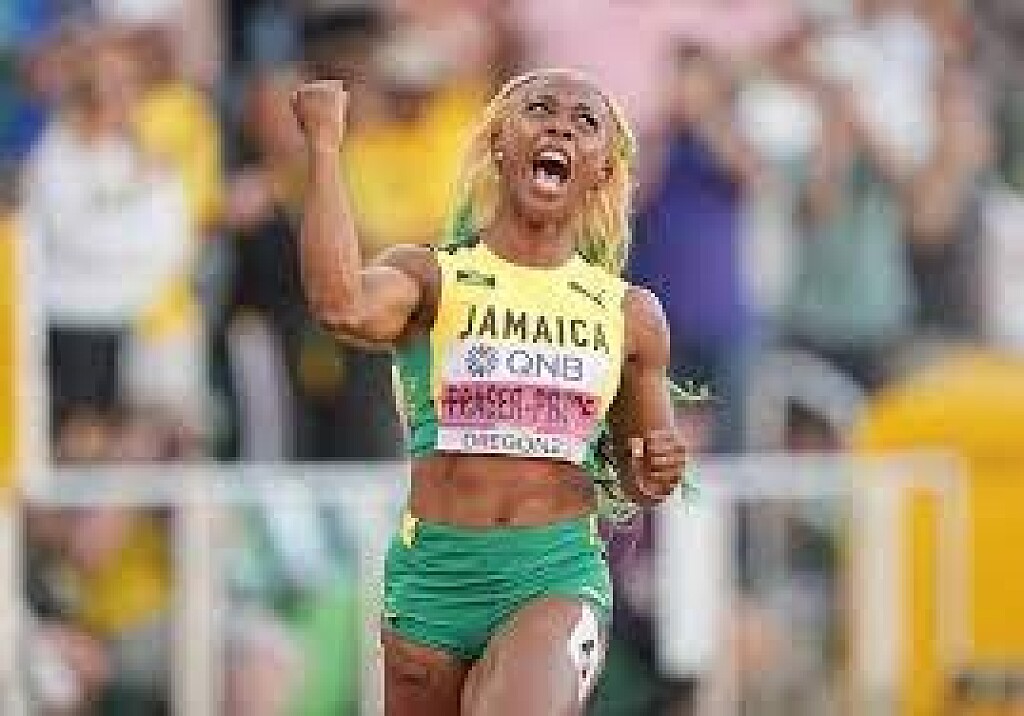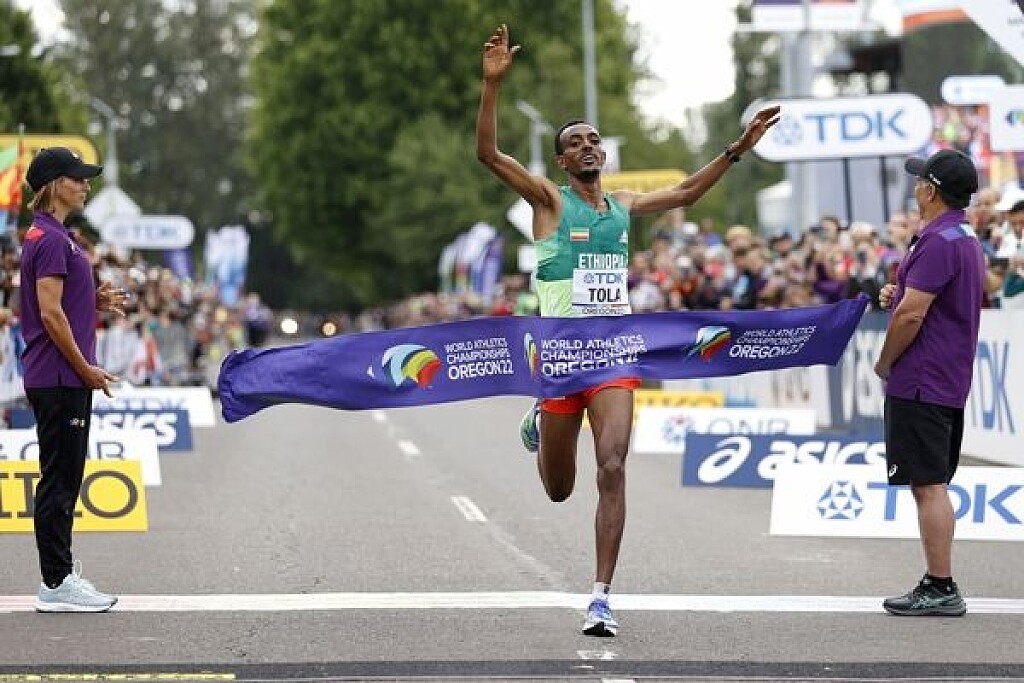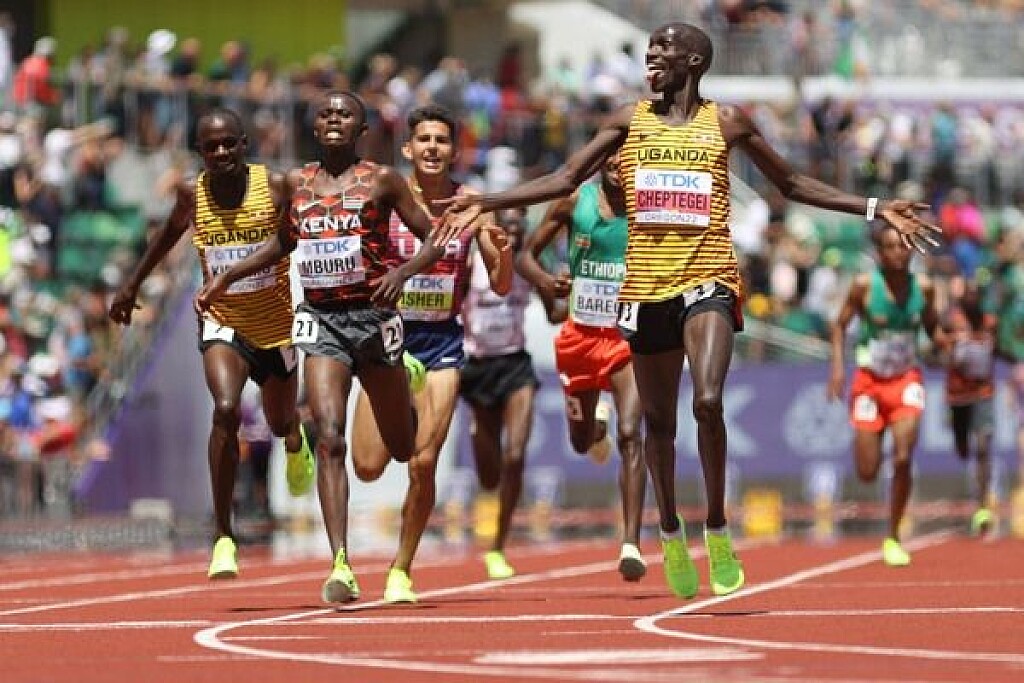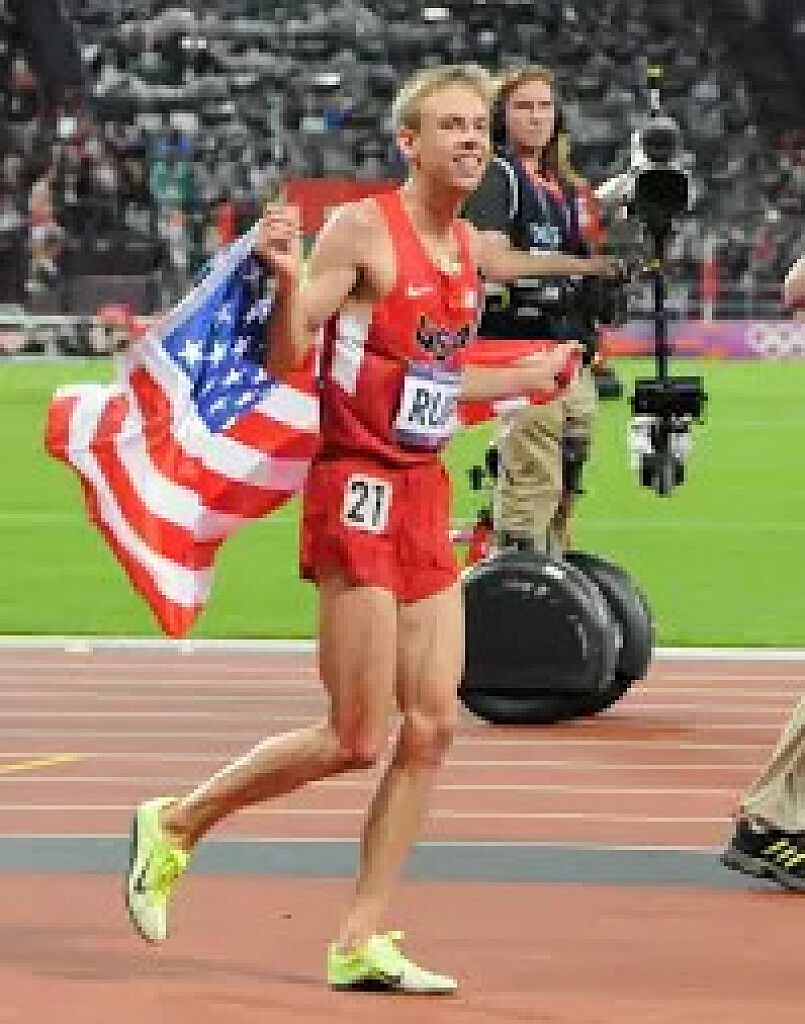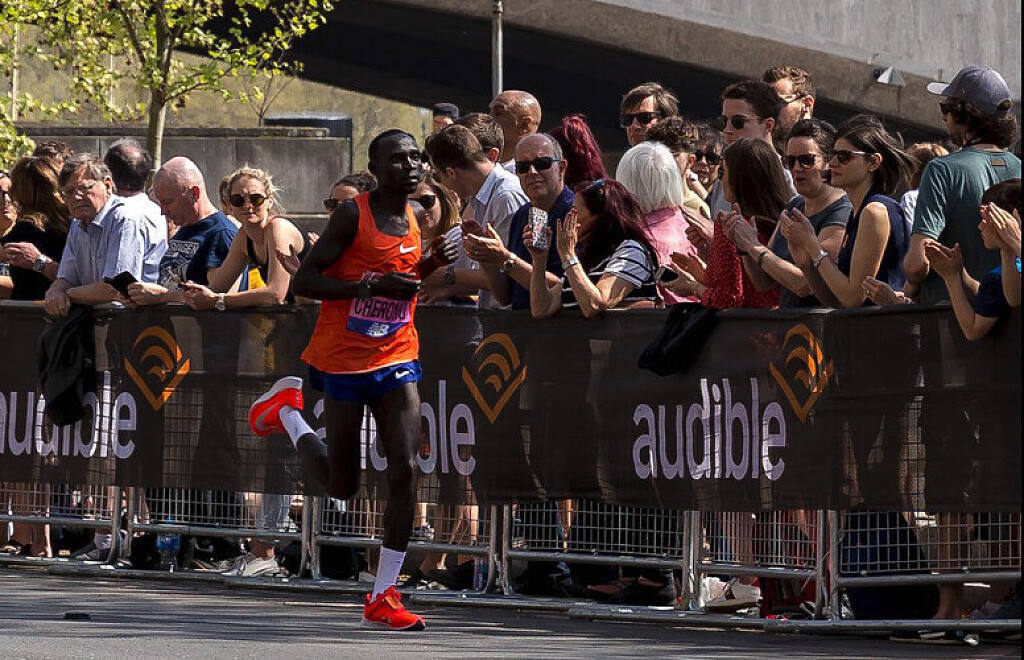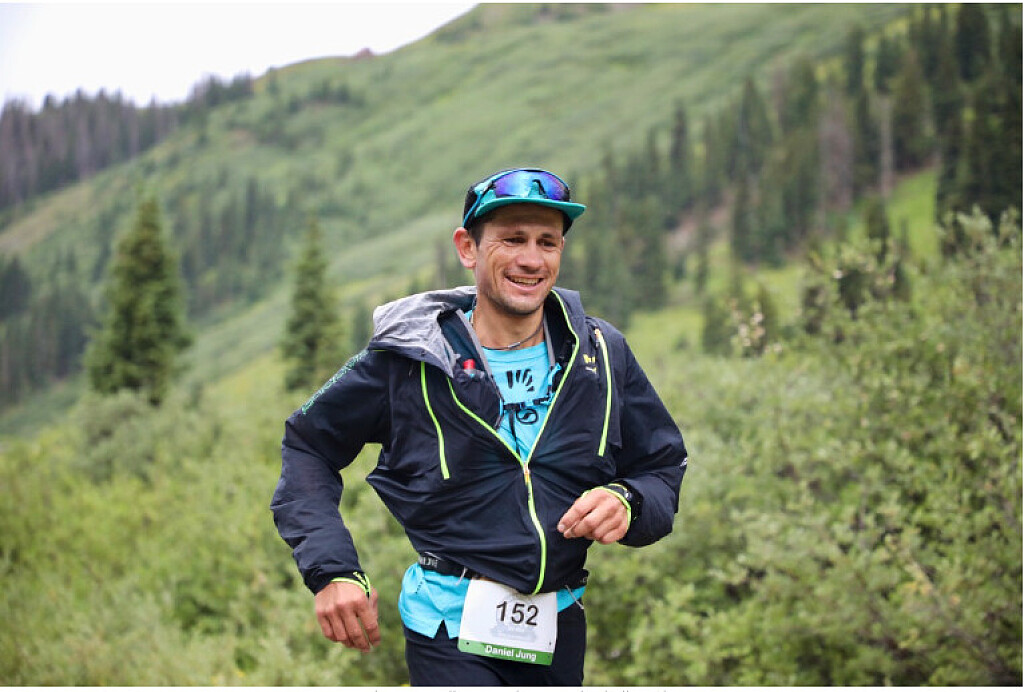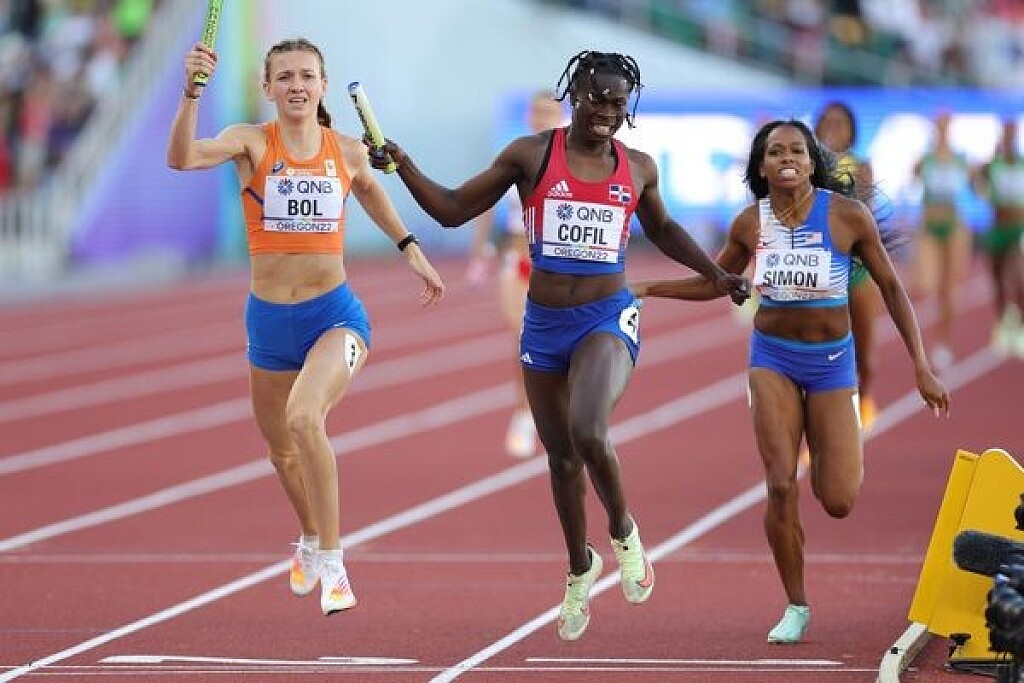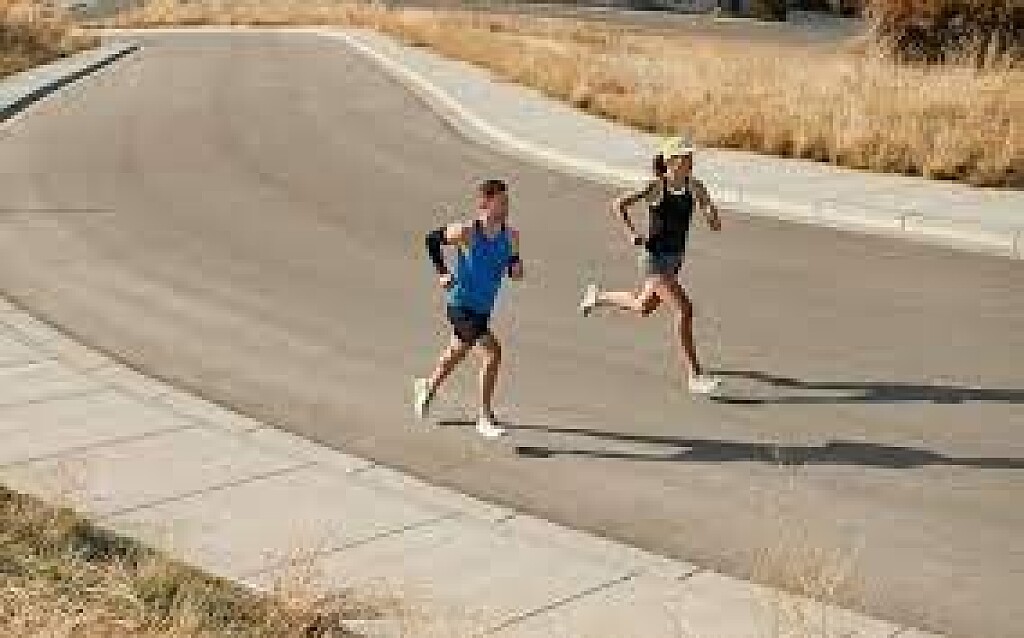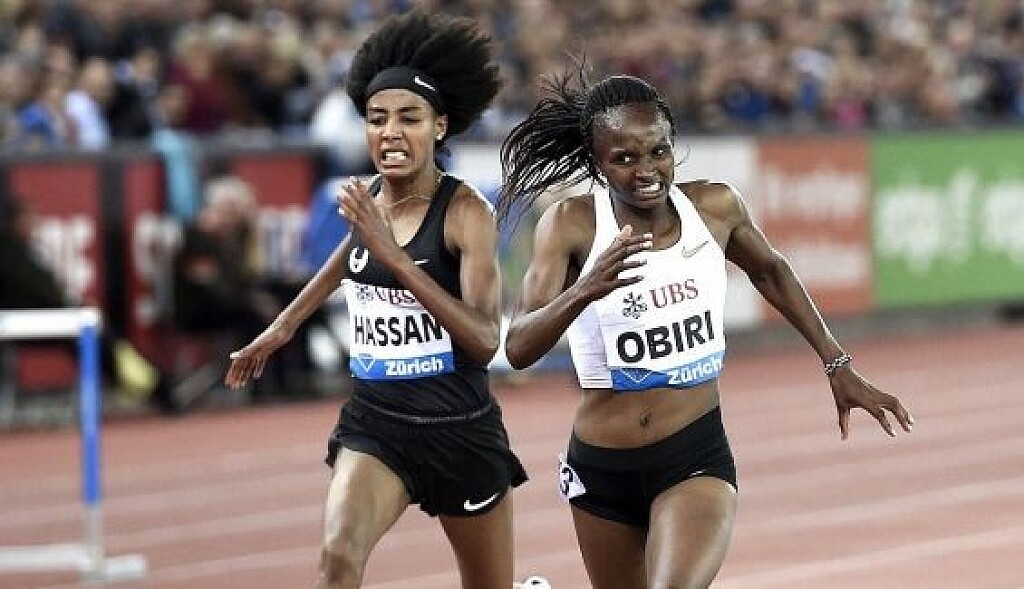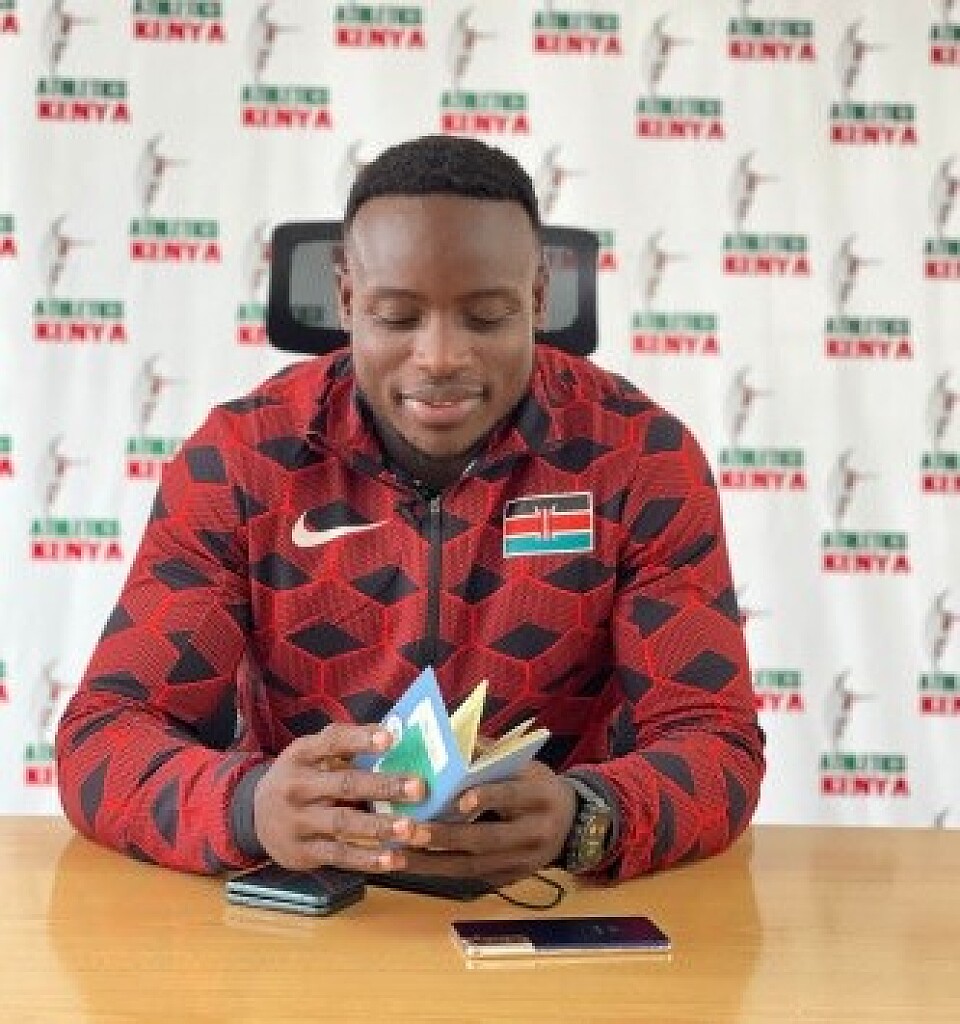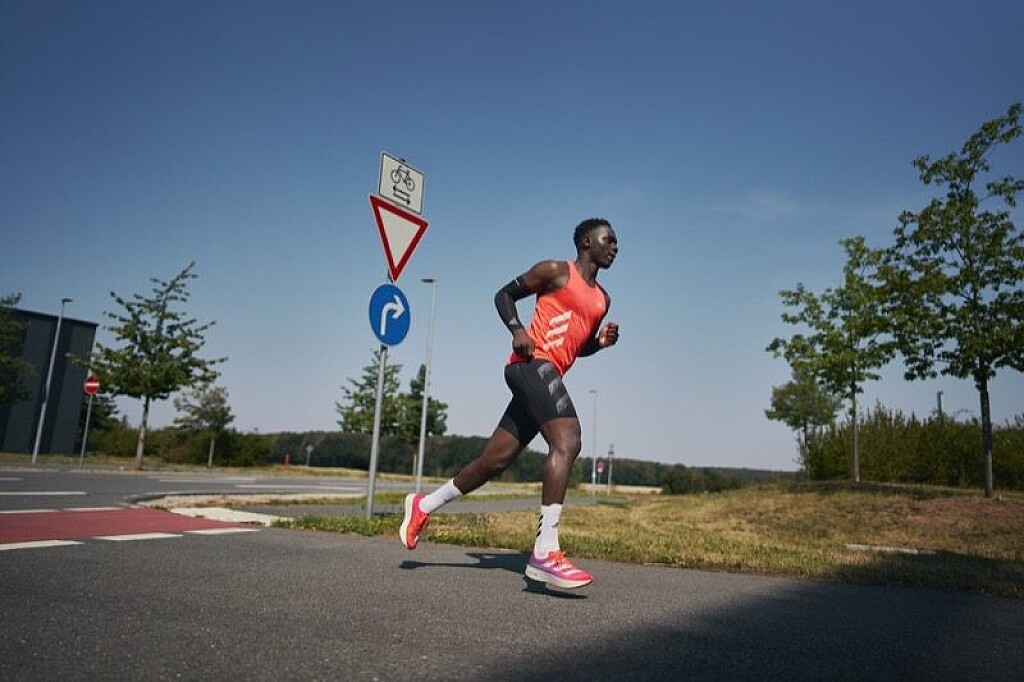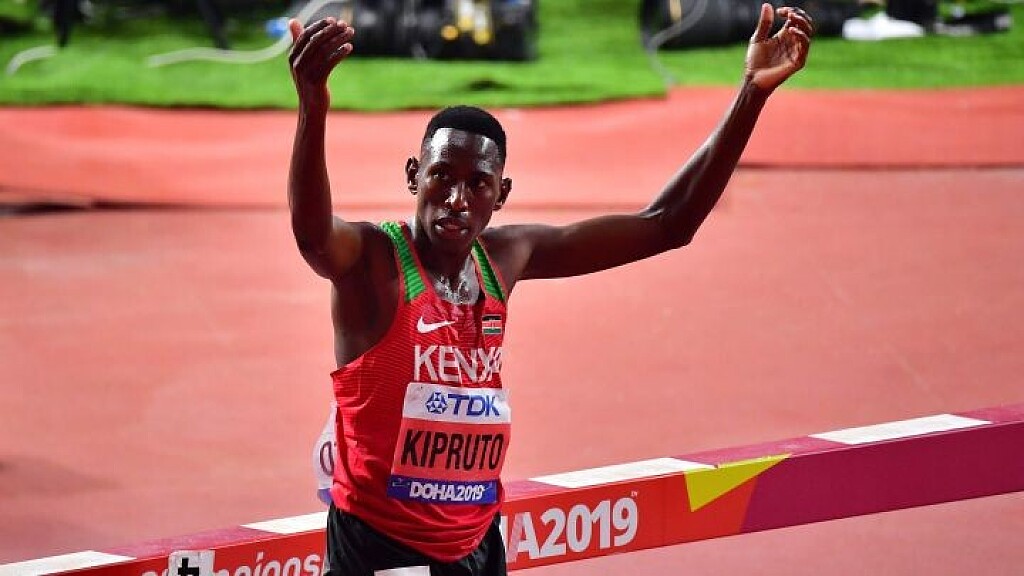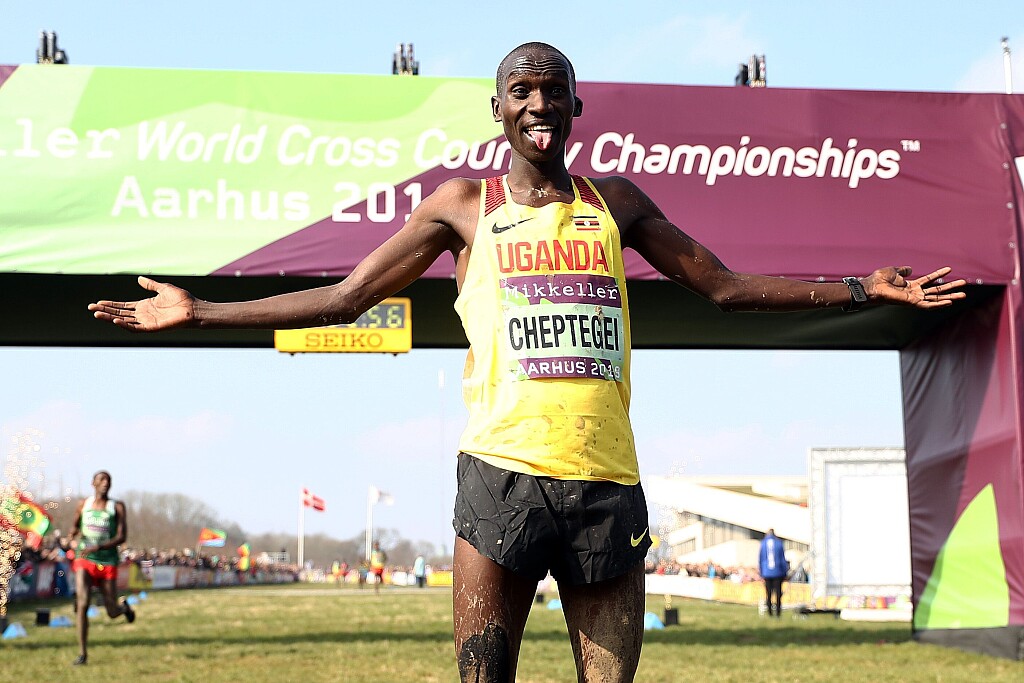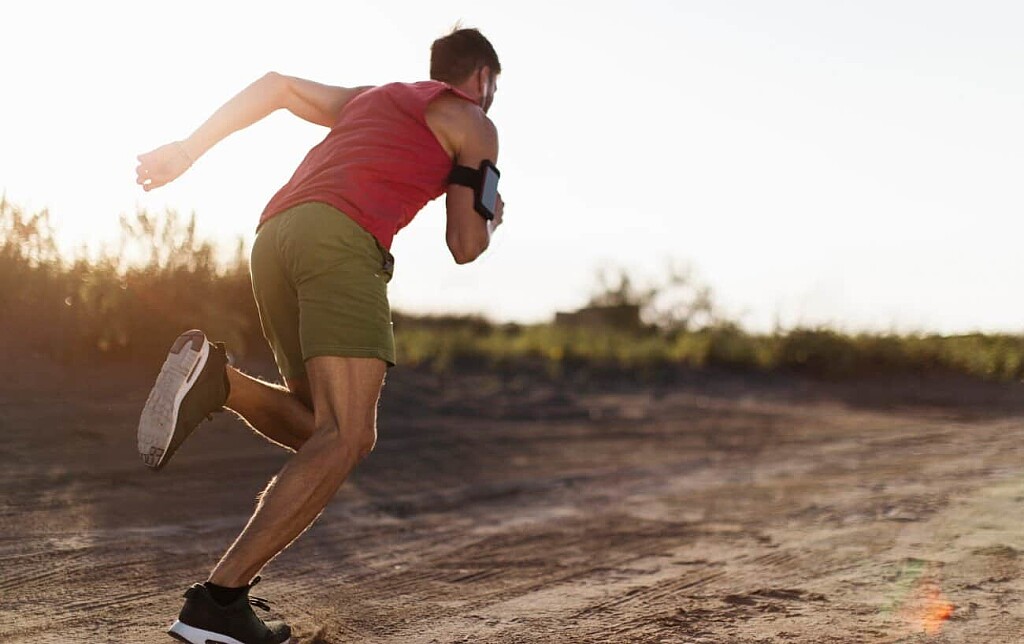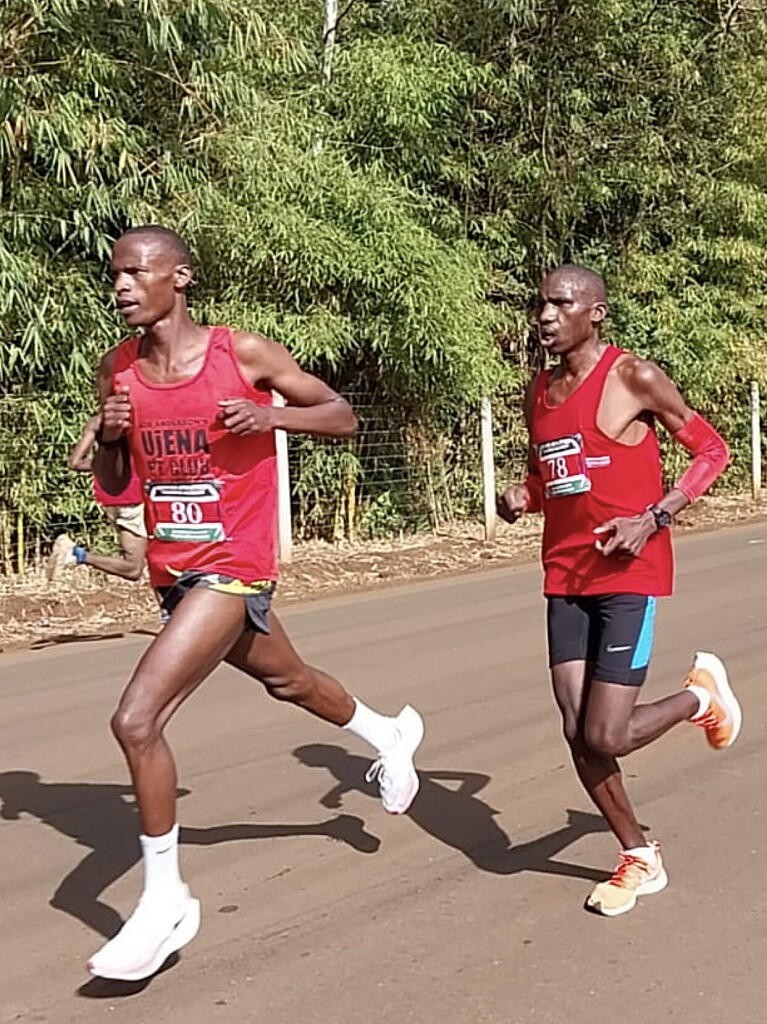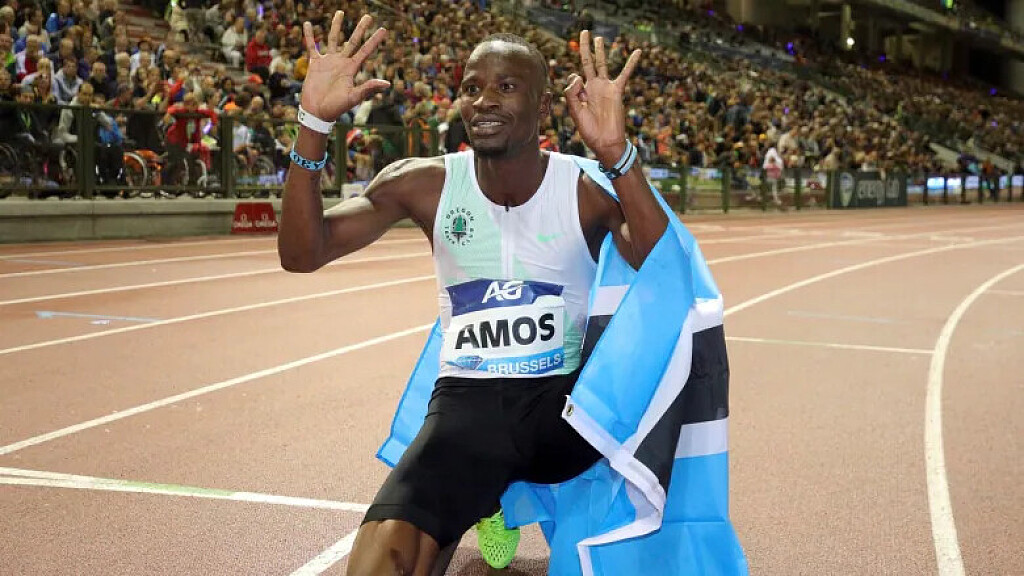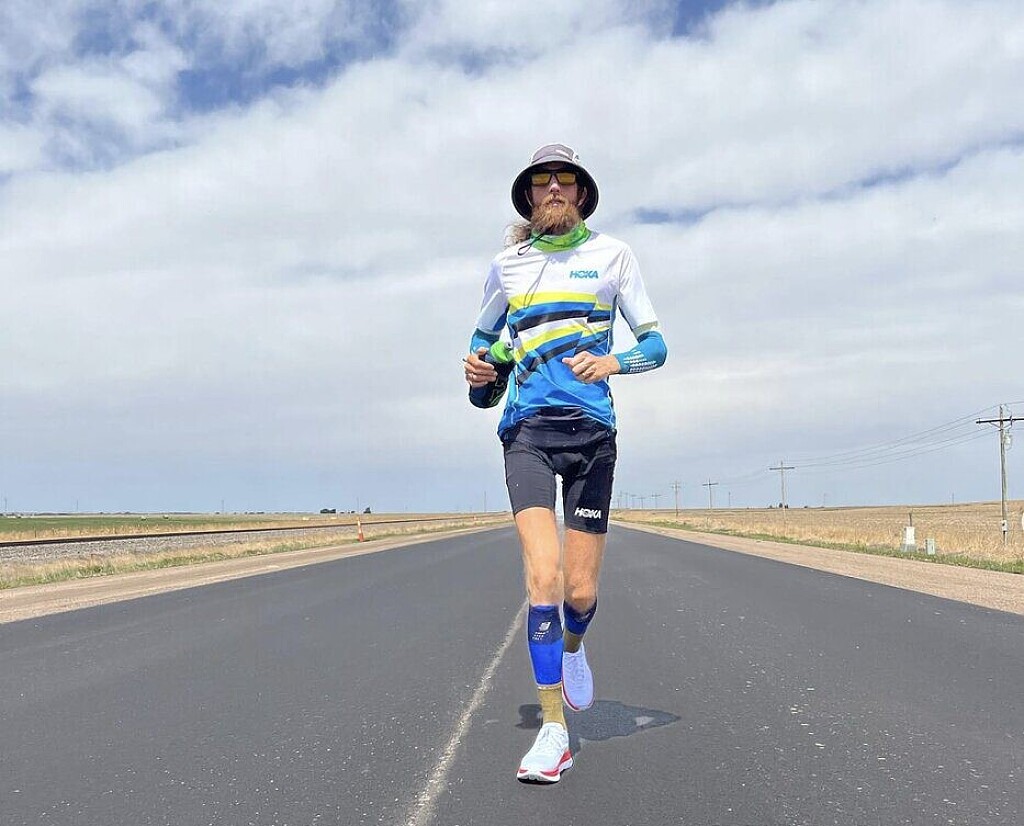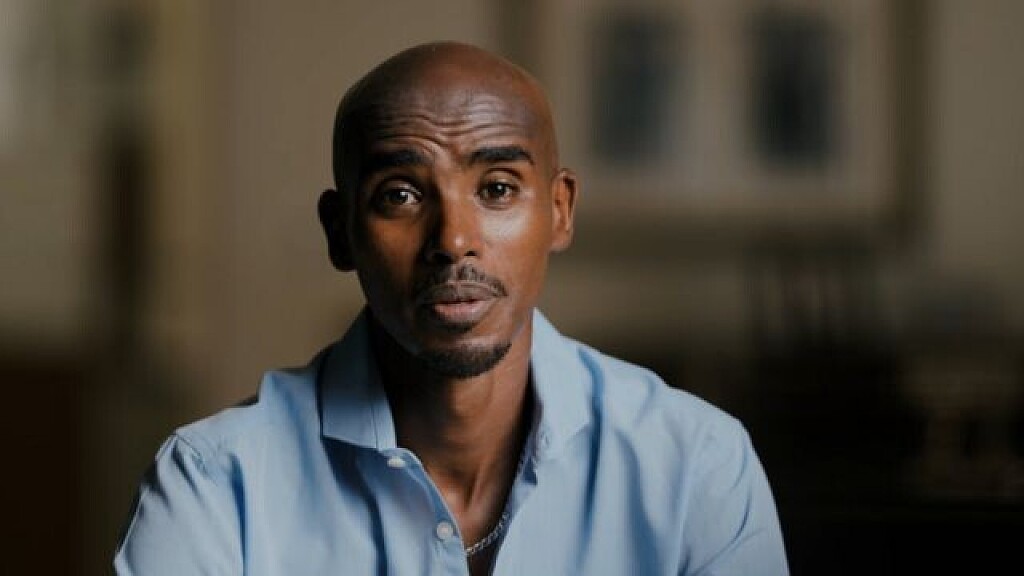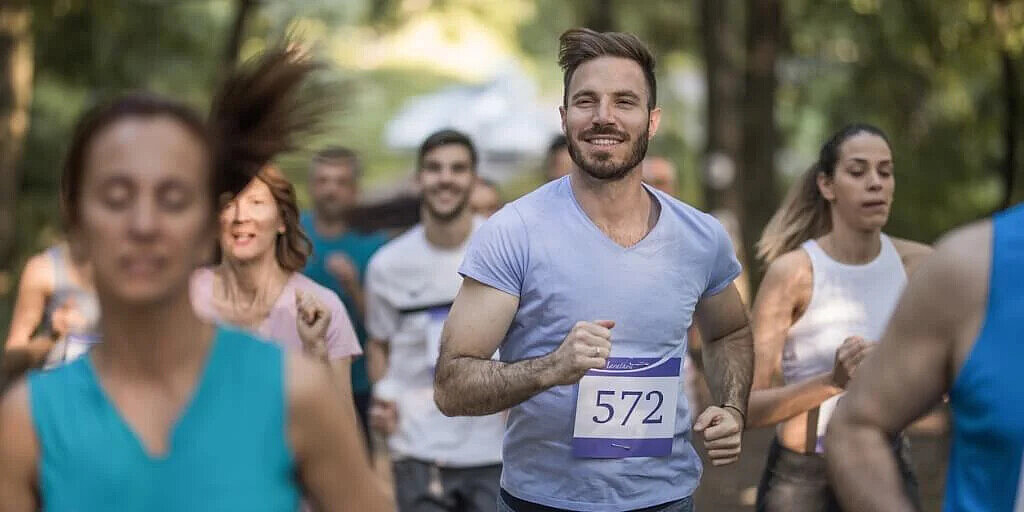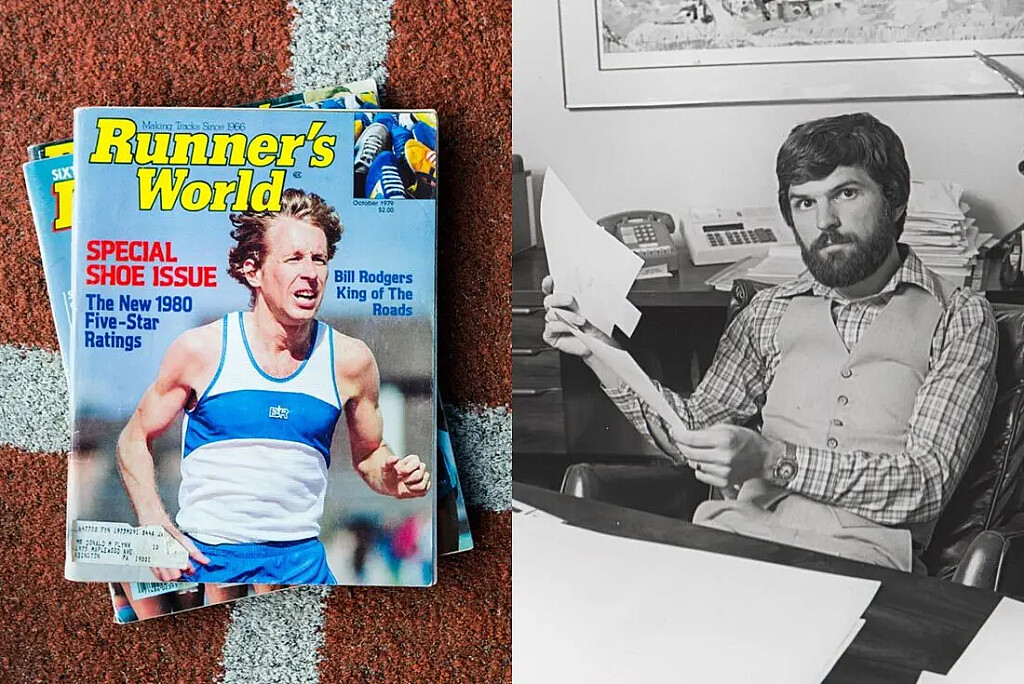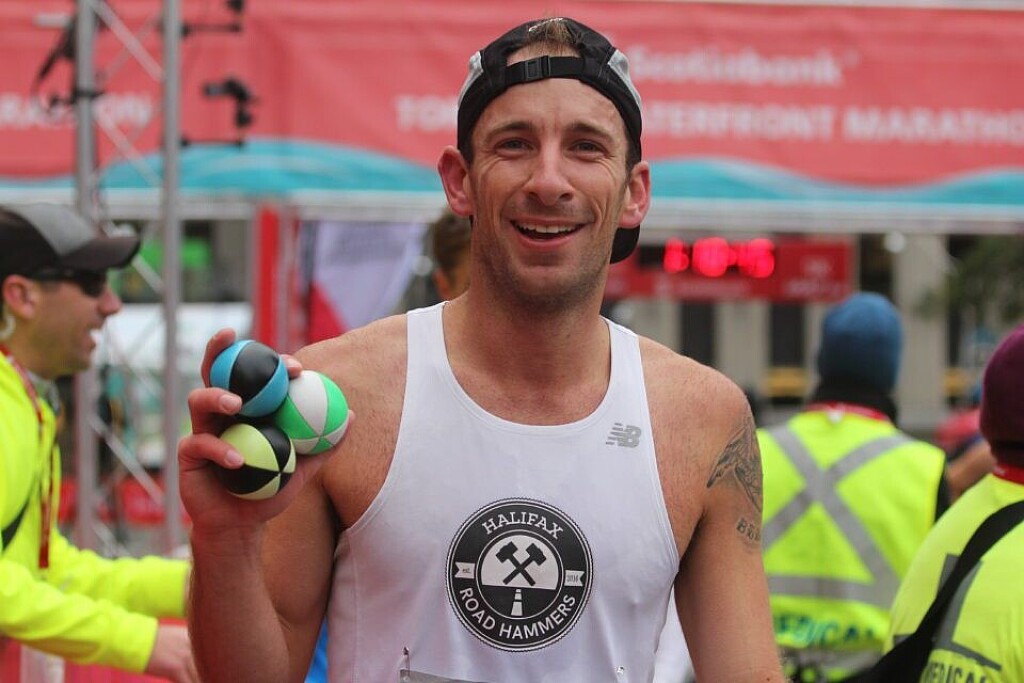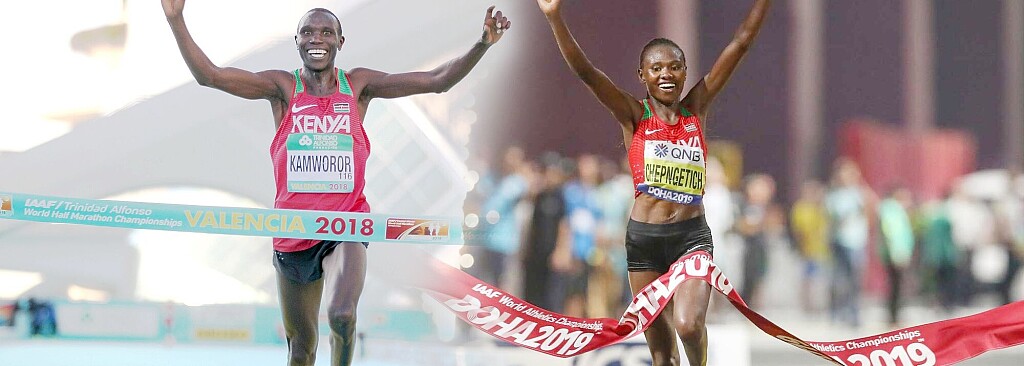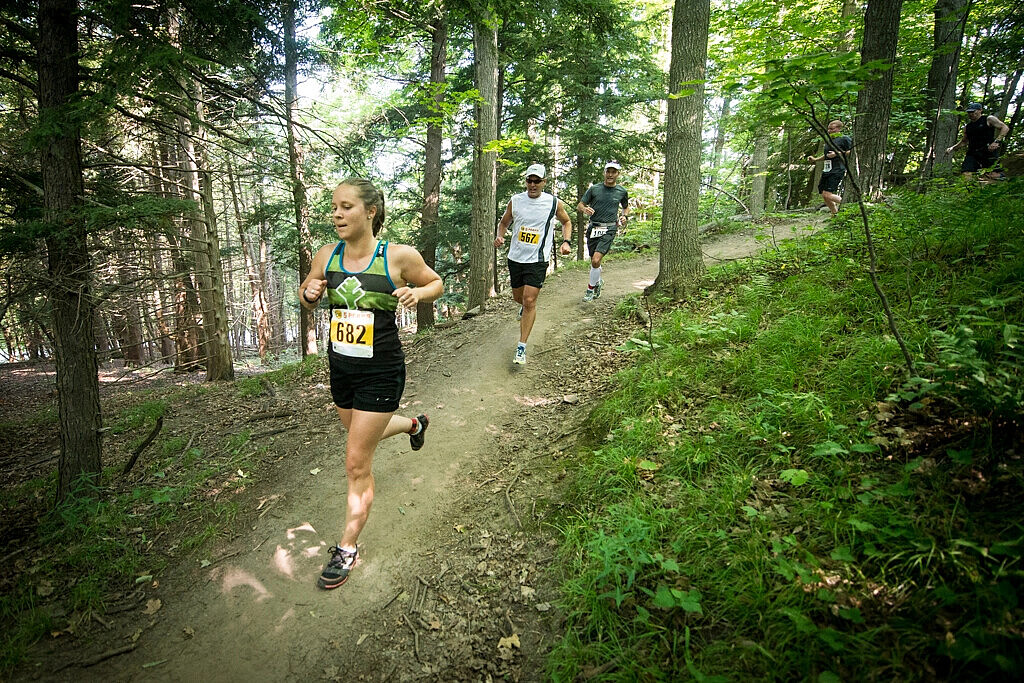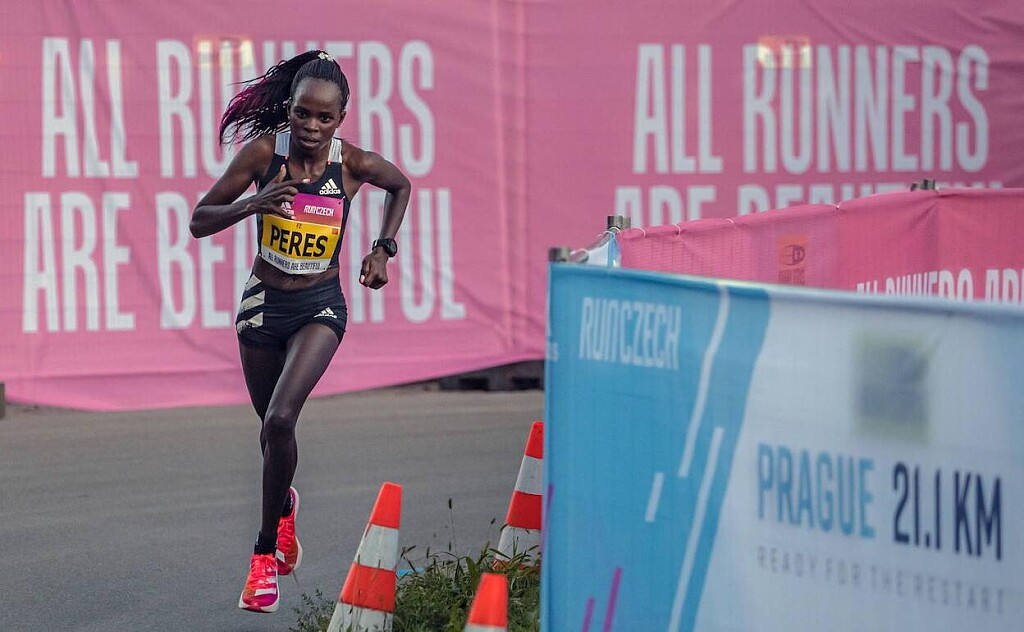Running News Daily
Running News Daily is edited by Bob Anderson in Mountain View, California USA and team in Thika Kenya, La Piedad Mexico, Bend Oregon, Chandler Arizona and Monforte da Beira Portugal. Send your news items to bob@mybestruns.com Advertising opportunities available. Over one million readers and growing. Train the Kenyan Way at KATA Running Retreat Kenya. (Kenyan Athletics Training Academy) in Thika Kenya. Opening in june 2024 KATA Running retreat Portugal. Learn more about Bob Anderson, MBR publisher and KATA director/owner, take a look at A Long Run the movie covering Bob's 50 race challenge.
Index to Daily Posts · Sign Up For Updates · Run The World Feed
Banish black toenails with these tips
If you’ve ever lost a toenail, had people look at your bare feet and visibly flinch, or struggle with keeping your feet healthy and smooth during peak training months, consider yourself a runner. Most of us have dealt with a foot issue, especially during high-volume training periods. Foot problems can be painful: I’ve heard several of the toughest ultrarunners I know actually scream when they had a blister treated.
Legendary ultrarunner Krissy Moehl (who has certainly spent some time on her feet), sums up the importance of foot care in her book Running Your First Ultra. She writes: “our feet start the chain and are the most important link is successful training and racing. From the skin to the ligaments, it’s important to give our feet detailed attention.” Here, we give you some tips to keep those feet healthy and strong all summer.
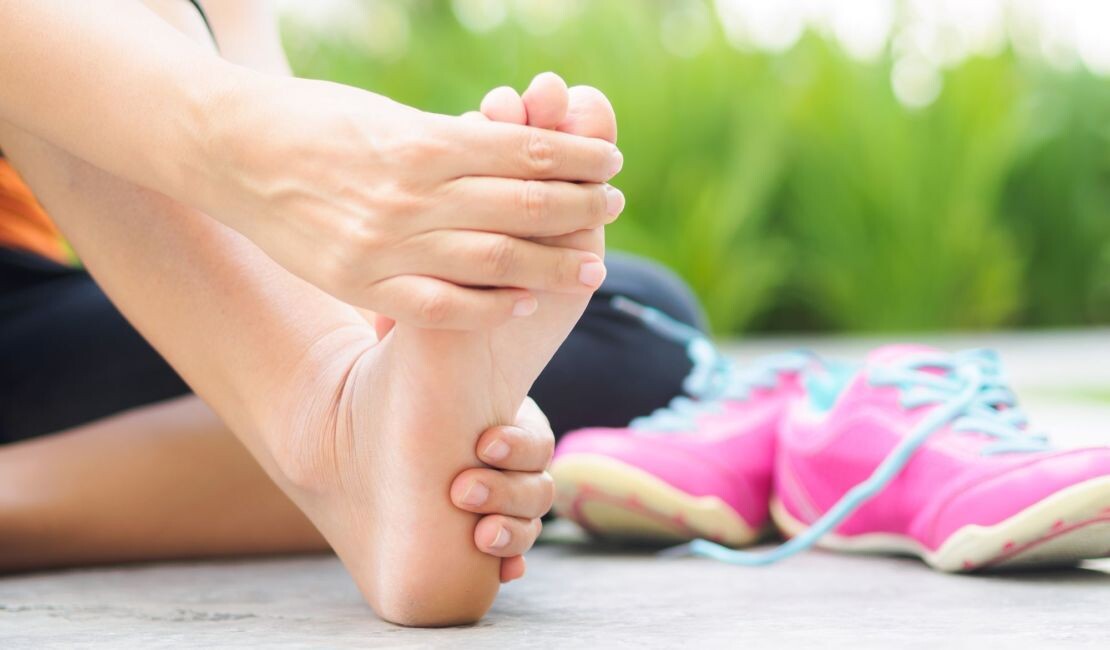
Make sure your shoes fit, and get rid of old shoes
It’s important to buy your running shoes at a store that specializes in running. The staff there will often have you put the shoes on and run in them to assess what type of shoe might be best for you, and they can properly measure you to see what size shoes you need. If you’re consistently having foot problems, it may simply be a shoe-size issue.
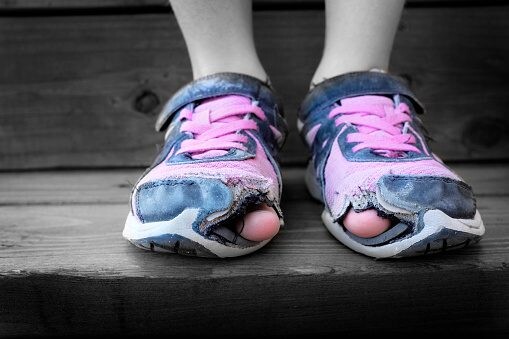
Moehl suggests lacing up the shoe as you would to run, and bending and flexing your foot through heel-strike and toe-off. Notice if there is any stitching inside the shoe or spots that have the potential to rub on your foot. Once your shoes are old and visibly worn out, stop wearing them, even around the house. Foot size changes over time and shoes actually shrink, so it’s worthwhile to visit a running store and speak to the experts. Running shoes can be expensive, so spend the time making a wise purchase.
Keep an eye on your toenails, and do at-home-pedicures to remove calluses
Ingrown toenails are a common foot problem for runners. Although they may seem like minor annoyances at first, an untreated ingrown toenail can become very painful and infected in a matter of a couple of days. You can often avoid painful ingrown or fungal toenails by keeping your nails short (but not too short), cutting them straight across, and then using a file to smooth out any sharp edges. If you have a black toenail, or your toenail starts to lift off, it can be tempting to pull the toenail right off; don’t. Pulling the nail off can cause your nailbed to tear, and your new toenail will grow in strangely. Let the nail fall off on its own, and the new one will emerge slowly.
Moehl is a firm believer in pedicures for everyone. “The soaking, scrubbing, de-callusing, moisturizing and massaging aspects of a pedicure are the most beneficial.” She adds: “Calluses are feedback relating to where the most stresses are being placed on your feet.” I had always leaned toward the belief that a callus on my foot was hard-earned, and protected my feet when I logged high mileage. When I entered a multi-day event that poured rain and soaked my feet continuously, I learned the hard way that calluses are also like sponges. The dead skin becomes saturated with water and takes days to dry out, and can cause further damage, including the dreaded foot maceration, often called trench foot. I can personally attest that running in such a condition felt like someone had scraped the bottoms of my feet off; I now make sure calluses are removed.
Moisturize, moisturize, moisturize (and lube up)
If you’re prone to dry skin, your heels crack and hurt easily. The best time to apply moisturizer to your feet is right after the shower, and you’re able to retain some of the moisture from your shower as well. If you’re prone to blisters, there’s a wide variety of skin lubricants specifically for athletes. You’ve probably seen them most often advertised to prevent chafing, but try slathering it on the areas of your feet that blister easily. You can also put skin lubricant on the outside of your sock on top of these same areas to further reduce any friction.
Like pianists’ hands, runners’ feet are invaluable. Treat them like gold, and you’ll be running pain-free all year long.
(07/20/2022) ⚡AMP
by Running Magazine
Emma Coburn’s Asian chicken salad: the perfect light summer meal
Emma Coburn and husband are always on the hunt for easy, nutritious meals. "A few high-profile athletes have shared their recipes and published cookbooks, and we’ve found some delicious, simple recipes that we want to share," says the three-time U.S. Olympian and 10-time national champion. Emma Coburn’s cookbook, The Runner’s Kitchen, is a must read.
Coburn will be competing in the 3,000m women’s steeplechase final on Wednesday evening. What better time to try out one of her recipes?

Emma’s Asian Chicken Salad
Ingredients

4 boneless, skinless chicken breasts (I often use a rotisserie chicken from the grocery store, shredded)
2 tsp salt
2 tsp freshly ground black pepper
5 cups shredded napa cabbage (I use a bag of premade coleslaw)
1 cup shredded red cabbage or radicchio
1/2 cup chopped scallions
1 cup chopped fresh cilantro (optional), plus whole leaves to garnish
1/2 cup chopped onion
1 cup diced cucumber
1 cup diced red bell pepper
1 cup toasted peanuts
For the dressing
1/2 cup vegetable oil
1/2 cup rice wine vinegar
2 tbsp sesame oil
1 tbsp granulated sugar
2 tbsp soy sauce
2 tbsp sriracha
2 tbsp freshly squeezed lemon juice
1 tsp salt
1 tsp freshly ground black pepper
Directions
Preheat the oven to 375 F (190 C) and line a baking sheet with parchment paper. Sprinkle the chicken thighs with salt and pepper. Place the chicken on the prepared baking sheet, and roast for 30-35 minutes or until the juices run clear and the chicken reaches an internal temperature of 165 F (75 C). Remove and set aside to cool.
To make the dressing, combine all dressing ingredients in a food processor or blender, and blend until fully emulsified and creamy.
Shred the cooled chicken and place it in a large bowl. Toss with the napa cabbage, red cabbage, carrots, scallions, cilantro, red onion, cucumber and red pepper. Add your desired amount of dressing, toss again, and divide evenly among serving plates. Top each serving with cilantro leaves and peanuts if desired.
(07/20/2022) ⚡AMP
by Keeley Milne
This 33-year-old steeplechase specialist had a bumpy four years until placing sixth at the World Athletics Championships on July 18
If you told Evan Jager in April that he would place sixth in the World Athletics Championships men’s 3,000-meter steeplechase in just a few months, he would have been ecstatic.
After all, the 2016 Olympic silver medalisthad only ran 8:34.89 at the Mt. SAC Relays on April 14, which is almost 13 seconds off the world’s standard time of 8:22.00. Though Jager had better steeplechase showings at the USATF Distance Classic on May 19 and the Portland Track Festival on June 10, it looked like the 33-year-old distance runner was still a far from being his former self.
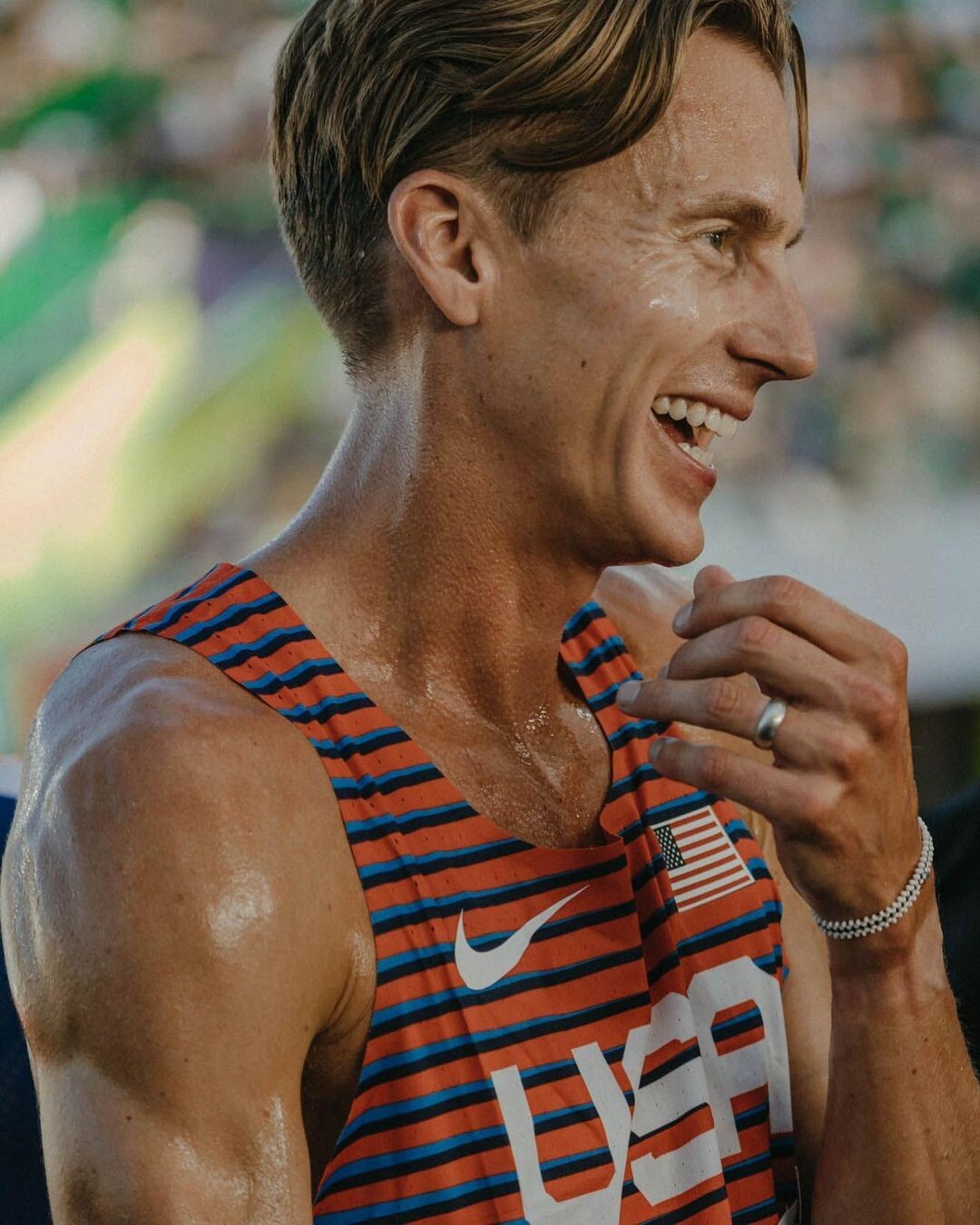
Things finally clicked at the USATF Outdoor Championships on June 25, when he ran 8:17.25 in the final to place second, earning him the world championships standard and a spot on Team USA for the World Athletics Championships at Hayward Field in Eugene, Oregon.
“Once you reach a certain point, you’ve got to set the bar higher,” Jager told Runner’s World.“I probably didn’t start thinking about realistically making the World Championship final until the prelim at USAs, I felt really good coming off of that.”
With momentum on his side, Jager’s expectations grew. The Bowerman Track Club athlete looked strong in his world championships preliminary heat, qualifying automatically for the final with his second-place finish. But in a tactical and physical final, Jager couldn’t keep up with defending Olympic champion Soufiane El Bakkali, Olympic silver medalist Lamecha Girma, and defending world champion Conseslus Kipruto over the final lap.
“After the prelim, I felt like my fitness was up there with just about anyone besides El Bakkali and Girma if it was a hard race from the get-go,” Jager said. “Team USA was having such an unbelievable and magical meet that I was letting myself believe that I could let the home crowd carry me to a magical performance. I think I probably would have fared better in a faster race.”
Regardless, the achievement is impressive for a runner who has been absent from the track & field circuit for the last four years. A lot has changed, especially with his training group. In 2018, Jager and Canadian 5,000- and 10,000-meter runner Mo Ahmed were the top dogs on the Bowerman Track Club, challenging the best in the world for medals. But Jager got hurt that year, and spent most of 2019 trying to get fit again while dealing with other injuries. When Jager returned to training, the team dynamic changed completely. Olympic gold medalist Matthew Centrowitz joined the group, who along with Woody Kincaid and Lopez Lomong all ran around 13 minutes in the 5,000 meters that summer. Then, NCAA champions Sean McGorty and Grant Fisher trickled in after using up their eligibility.
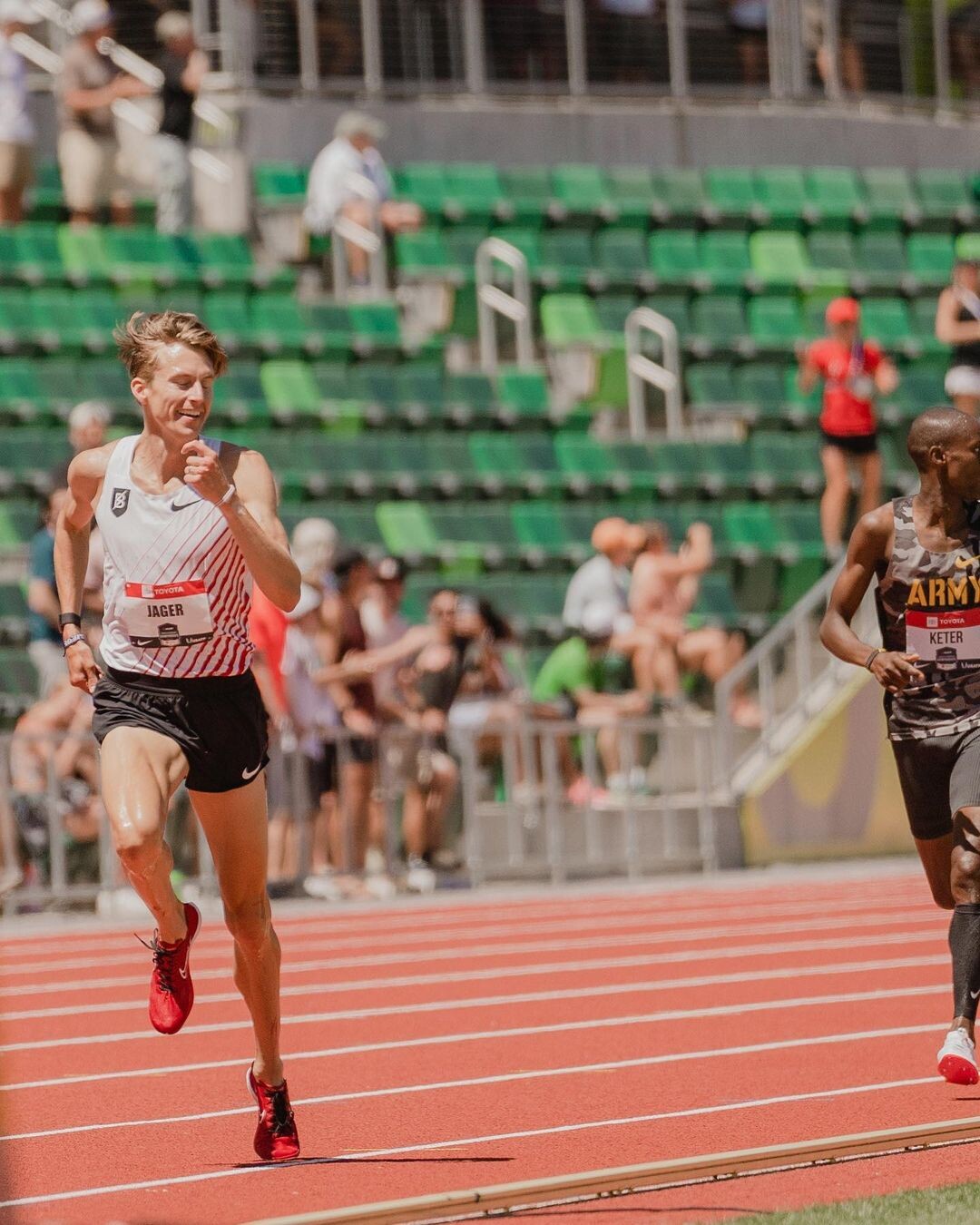
“I went from being on top … to being literally the worst guy on the team,” said Jager. “Every day was a grind.” Jager tried to keep up with the new members while also battling injuries, but had a hard time getting through even half of team workouts. “They were just on another level. I never felt like I was within myself in training for three and a half years up until this spring.”
So what changed in those three and a half years? Jager credits the team physical therapist, Colleen Little, who started working with Bowerman in January 2021. His problem wasn’t simply one big injury, like the stress fracture in his foot that ended his 2018 season. It was a snowball effect of one injury leading to overcompensation and imbalances in other parts of his body. So Jager and Little saw each other once or twice a week, every week, to manage the different aches and pains.
Next year will bring even more changes for Jager. His coach, Jerry Schumacher, is moving to Eugene to take the helm of the University of Oregon track & field program. The Bowerman Track Club’s athletes will relocate from their current base in Portland.
“I think it’s an incredible move for the group,” Jager said. “Change is always good. I’ve been in Portland for 14 years now, so it’s probably a good thing for me.”
Besides that, Jager said being stubborn kept him in the game. “I could have done a lot better being positive and working on mental health [the last few years],” he said. “I just believed that if I got healthy, I would get back here. If I can get to the final off of feeling healthy for four months, then I’m excited for next year.”
(07/19/2022) ⚡AMPby Runner’s World
World Athletics Championships Budapest23
Budapest is a true capital of sports, which is one of the reasons why the World Athletics Championships Budapest 2023 is in the right place here. Here are some of the most important world athletics events and venues where we have witnessed moments of sporting history. Throughout the 125-year history of Hungarian athletics, the country and Budapest have hosted numerous...
more...Cam Levins shattered his own Canadian record in the marathon
It was a morning to remember for Canadian distance running at Alton Baker Park in Eugene on Sunday July 17. Cam Levins shattered his own Canadian record in the marathon at the World Championships, running 2:07:10 for fourth overall behind winner Tamirat Tola in 2:05:35 and Mosinet Geremew (2:06:43), both of Ethiopia, and Bashir Abdi of Belgium (2:06:48). Levins beat his previous record of 2:09.25, which he set at the 2018 Toronto Waterfront Marathon.
Cam Levins outkicked Kenya’s Geoffrey Kamworor for fourth in the men’s marathon in a new national record time of 2:07:10.
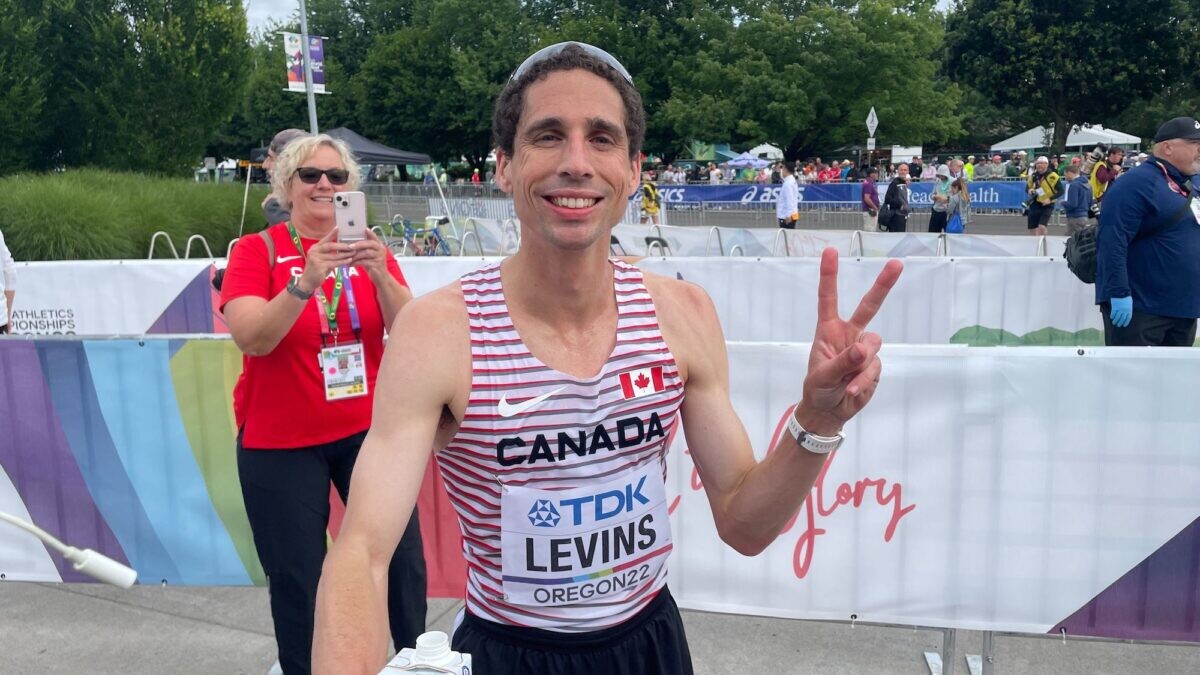
After the race, an elated Levins said he realized after the Olympics that he “needed to be better in every way, across the board,” and that he had worked hard to improve his training in every way–and we all witnessed the results on the course. (In Sapporo last year, Levins faded in the extreme humidity, finishing 72nd in 2:28:43).
After a very sedate first 30 km, with runners still in a large pack, Levins could be seen near the front, though never leading. When Tola, the eventual winner, kicked hard after an hour and 40 minutes, no one went with him–but Levins continued to look comfortable in the chase pack of five or six runners, only becoming separated from Geremew and Abdi in the last few kilometres.
This is the best-ever performance in a world championship marathon by a Canadian male; Peter Maher’s 10th-place finish at the 1993 World Championships in Stuttgart, Germany was the previous best.
(07/19/2022) ⚡AMPWorld Athletics Championships Budapest23
Budapest is a true capital of sports, which is one of the reasons why the World Athletics Championships Budapest 2023 is in the right place here. Here are some of the most important world athletics events and venues where we have witnessed moments of sporting history. Throughout the 125-year history of Hungarian athletics, the country and Budapest have hosted numerous...
more...Soufiane El Bakkali is the king of the steeplechase after claiming world title
Morocco's Soufiane El Bakkali believes he is the "king of steeplechase" after adding the world title to his Olympic Games gold.
The 26-year-old put on a tactical masterclass over the 3,000m course in Eugene to end Kenya's 15-year reign in the discipline at the World Athletics Championships.
In a repeat performance of his Olympic success in Tokyo last year, he stayed near the back of the leading pack for much of the race before making the decisive move in the last 200m to claim gold in a time of eight minutes 25.13 seconds.
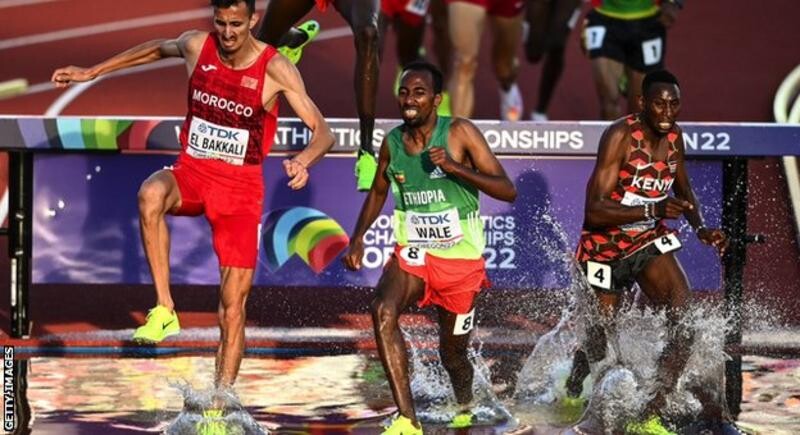
"I am the king of steeplechase because I have gained confidence on the track. That's why I am the Olympic champion and now the world champion," El Bakkali told BBC Sport Africa.
Ethiopia's Lamecha Girma had to settle for silver once again, having finished second in Tokyo and in Doha three years ago, while Kenya's Conseslus Kipruto, the 2019 champion, ended with bronze.
Kenyan runners had won men's steeplechase gold in every edition of the World Championships since Brimin Kipruto's success in Osaka in 2007 and El Bakkali said his finishing speed had been the key to victory in Oregon.
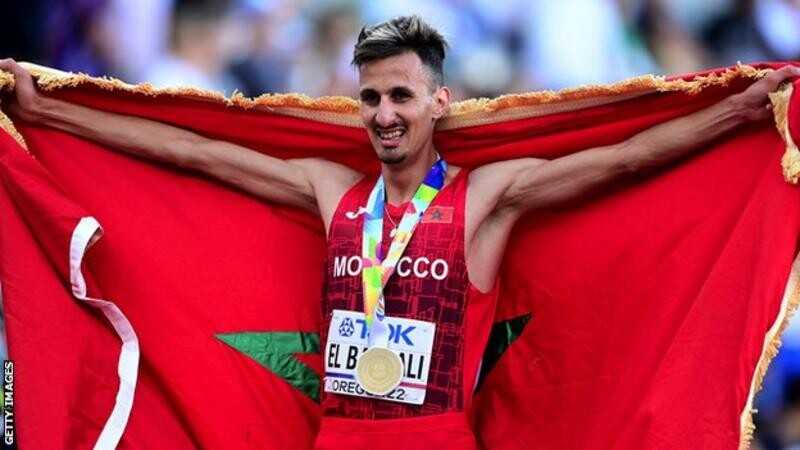
"The course was very tactical, slow. We had very good runners like defending champion Kipruto," said El Bakkali, who beamed as he waved the Moroccan flag over his head.
"I positioned well in the last lap. I am very strong in the 400m and it worked out for me.
"After the semi-final I had a good look at the strategy of the Kenyan athletes. I was on my own, the only Moroccan in the race, but I did not limit myself to winning silver nor bronze. Instead I managed to come first in two world league meetings and now the World Championship."
Kenya's Kipruto upbeat despite bronze
Girma, after another second-placed finish, intends to reassess his training with an eye toward next year's World Championships in Budapest.
"The pace was very slow today, my tactic did not work and that [cost] me the gold," he said.
"I was trying to change the tactic but the pace limited me very much. I will go for gold next year and my training is starting from now on."
Dethroned world champion Kipruto, meanwhile, said he "did not execute the race as planned".
"I was running against athletes who have two years of consistent running when I was struggling," he added.
"It was never going to be easy. But I take the bronze positively."
Kipyegon now the greatest 1500m runner?
Meanwhile two-time Olympic champion Faith Kipyegon of Kenya took 1500m gold in an astonishing time of 3:52.96 to regain her world title.
Kipyegon first took the crown in London in 2017 and becomes the first woman to win four global 1500m titles, with Ethiopia's Gudaf Tsegay second and Britain's Laura Muir in third.
Winning silver in Doha in 2019, having spent 12 months out of competitive running the year before when her daughter was born, meant crossing the line first in Eugene was even more fulfilling for the Kenyan.
"I knew it was going to be fast so I was really expecting that tight race," she told BBC Sport.
"I was not scared. I was like 'everything is possible' and I had to calm down, enjoy the race and I won.
"It feels very good to get back the world title that I lost in 2019 when I was coming back from giving birth to my daughter, who means the world to me."
(07/19/2022) ⚡AMPWorld Athletics Championships Budapest23
Budapest is a true capital of sports, which is one of the reasons why the World Athletics Championships Budapest 2023 is in the right place here. Here are some of the most important world athletics events and venues where we have witnessed moments of sporting history. Throughout the 125-year history of Hungarian athletics, the country and Budapest have hosted numerous...
more...Eliud Kipchoge wants us all to plant trees, Kipchoge has adopted and helped to rehabilitate 126 acres of forest in his native Kaptagat, Kenya
When he’s not training to win Olympic marathons or paving the way for future Kenyan cyclists by starting a cycling academy, the world’s greatest marathoner is taking steps to save the planet.
Kipchoge, who trains and lives in Kaptagat, Kenya, is hoping to adopt a forest in all 47 counties of Kenya. He has recently been involved in the rehabilitation of 126 acres of Kaptagat Forest, KBC digital reported. Kaptagat, where Kipchoge lives and runs at the NN Running training center, has been the initial focus of his reforestation initiative. In 2021, Kipchoge spoke at the UN climate change conference, and he’s been dedicated to environmental work and encouraging his fellow Kenyans to get involved. For years now, Kipchoge has been at the forefront of the efforts dedicated to the conservation and restoration of forests.
“I won my first world championship in 2003, and in 2021, I successfully defended my Olympic medal in the marathon. I’m lucky to say I have a long career, and today, I want to share the secret of my success with you because I believe you can apply it too and it will help you be successful in fighting climate change,” the champion said. While it may be surprising to hear that Kipchoge is a climate change activist, he says that it’s the legacy he hopes to leave. “Until a few years ago, I trained by listening to what my body was telling me and was successful and won almost every marathon I race in. But when I realized I wanted to leave a legacy, I knew I needed to do more.”
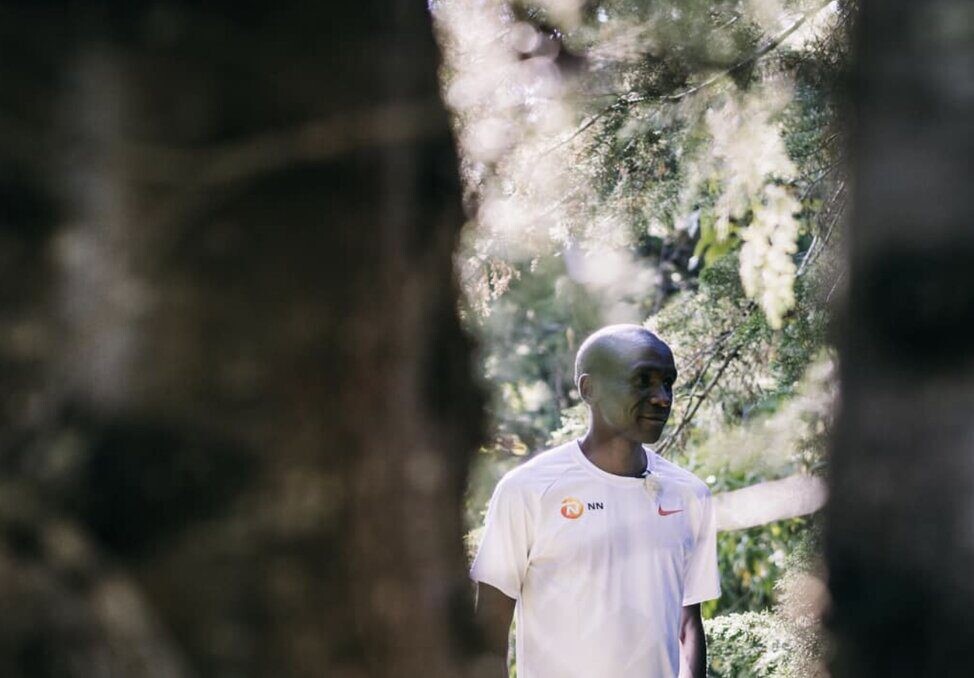
Kipchoge kickstarted his climate change action shortly after his INEOS 1.59 challenge in Vienna, where he made history by running an unofficial marathon record time in 1:59.40. Aware that eyes were on him, he seized the opportunity to create change by partnering with the government and creating a sub-two-hour tree planting competition among his fellow Kenyans. The athlete encourages everyone to mark life celebrations by planting trees. He says, “can we convert our birthdays and plant a tree? Can we convert our birthdays to walking for the noble cause of climate change? Convert our anniversaries and plant trees or walk? If you are celebrating 60 years, plant 60 trees. If your kid is 2 years old, run for 2 km and plant two trees to commemorate your day. We’ll make this world a green world in only one year.”
Kaptagat is a particularly unique ecosystem where nature, humans, and the economy are intensely interconnected, and years of deforestation had taken a toll on the area. Back in 2019, Kipchoge signed a Memorandum of Understanding (MoU) with the Kenyan Forestry Service, allowing him to work towards his goal of rehabilitating the forest. With support from the World Wildlife Fund (WWF–Kenya), the project has been a success, and the athlete says he will continue his pursuit of adopting a forest in the other counties in Kenya, through the Eliud Kipchoge Foundation.
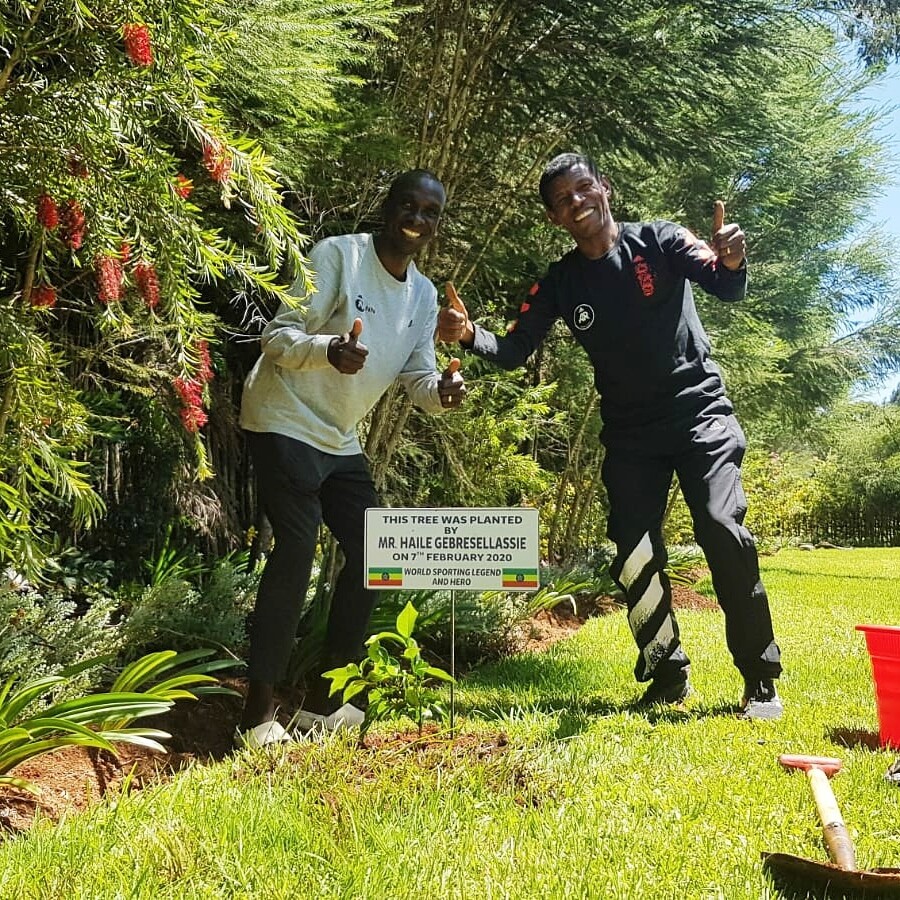
Kipchoge encourages other athletes, corporations, and citizens to continue planting trees and taking steps to save the forests. He says his initial inspiration to adopt the vast piece of land in his home county was because he is an athlete, and needs to breathe good air and run on soft ground. The only way he says he can achieve these standards is to preserve the environment. Kipchoge adds: “As an athlete, I train every single day, meaning I need to breathe clean air daily. This means that I need to conserve the environment and focus on it every day. Clean air in combination with performance in sports has made me think about conservation a lot more.”
His inspiration is working: a recent report showed that Kenyan forest cover is now at 12.3 per cent, ahead of Kenya’s constitutional target of 10 per cent.
Kipchoge will continue to work diligently to adopt more forests throughout Kenya, and he speaks to all of us, worldwide, when he says “Every day is earth day for me. It is our only home and our only business — and only we can save it.”
(07/19/2022) ⚡AMPby Keeley Milne
Gold again for Faith Kipyegon as she wins 1500m in Oregon
Faith Kipyegon’s supporters were so confident she would win the women’s 1500m at the World Athletics Championships Oregon22 that they put the Kenyan in an uncomfortable position.
“I was facing a lot of pressure,” said Kipyegon, the two-time Olympic champion in the 1500m. “Everybody was expecting something special from me. Everybody was like, ‘Faith, we believe in Faith,’ so it was a real pressure. But I managed it.”
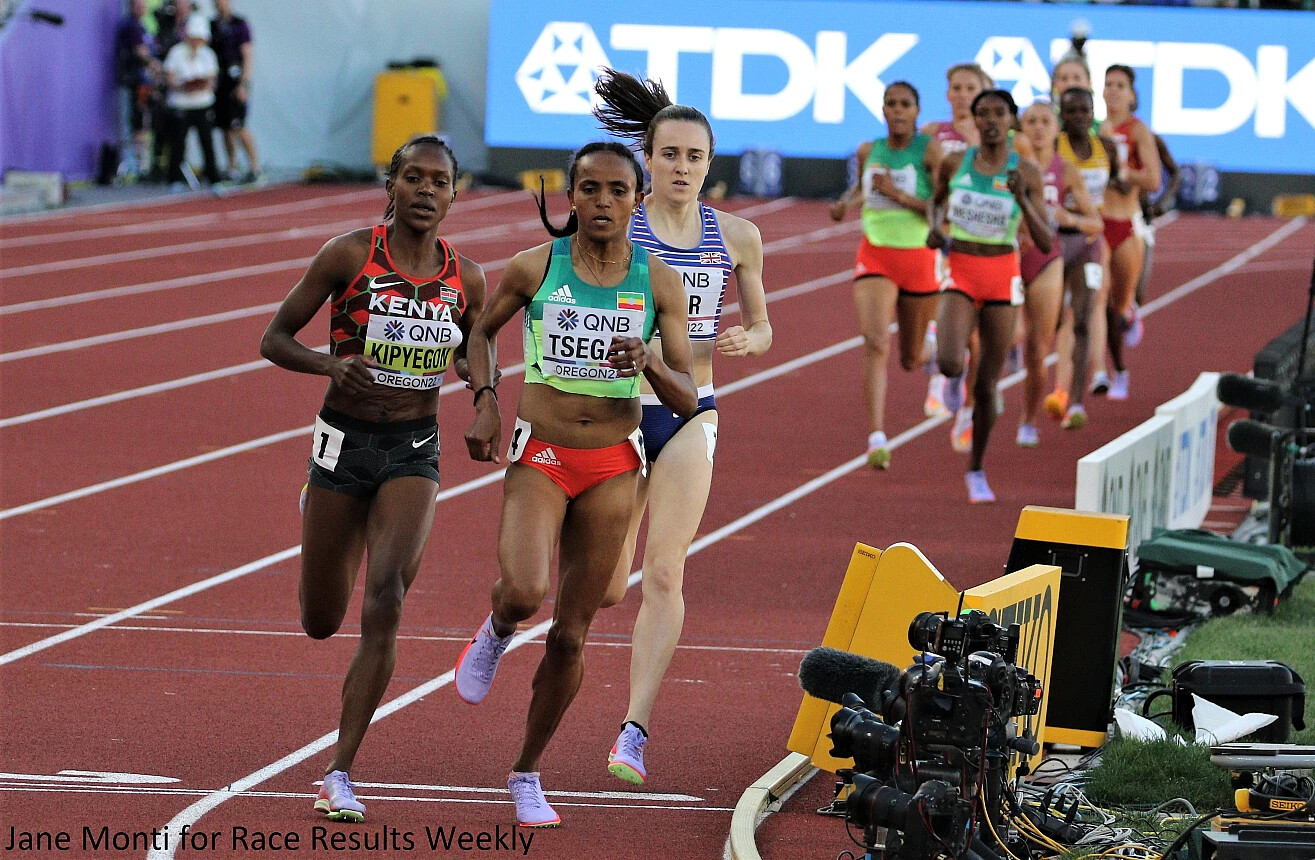
In other words, their Faith was not misplaced.
With her trademark kick, Kipyegon regained the world title on Monday (18) that she first won in 2017. She claimed an unprecedented fourth medal in the event. And Kipyegon indeed did something special, clocking 3:52.96, the second-fastest time on US soil after her own 3:52.59 at the Prefontaine Classic in late May on the same Hayward Field track.
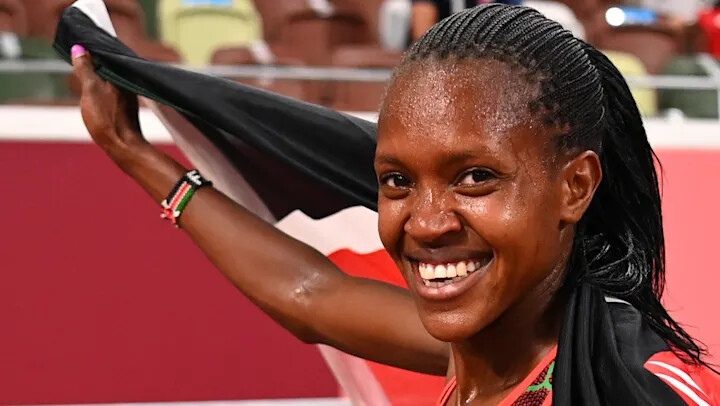
After crossing the finish line, Kipyegon, 28, kissed the track and blew kisses to the crowd on ‘Women in the Spotlight’ day.
The fast-paced race saw Kipyegon and three other runners quickly leave the rest of the field behind with a first lap in just under 59 seconds.
“I’m so grateful to have won the gold medal,” Kipyegon said. “This was my big target. I did do it. I was really looking forward to this championship. I was really, really prepared for this race.”
World indoor champion Gudaf Tsegay of Ethiopia was with her nearly every step until Kipyegon pulled away with about 300 meters to go. Tsegay took the silver in 3:54.52, upgrading from the bronze she won in 2019. She was also just a bit slower than she was at the Pre Classic, where she ran 3:54.21.
“I was expecting more from this race, but my opponents were more experienced and lucky so I have to be grateful for the silver,” said Tsegay, 25, who also will run the 5000m later in the week.
Great Britain’s Laura Muir, in her fifth World Championships final, at last secured a medal, claiming the bronze with a season’s best of 3:55.28. Muir, 29, finished six seconds ahead of Ethiopia’s Freweyni Hailu, the largest gap in World Championships history between third and fourth.
Sofia Ennaoui of Poland ran a season best of 4:01.43 for fifth. The US placed two runners in the top 10: national champion Sinclaire Johnson was sixth, clocking 4:01:63, while Cory McGee was 10th with a time of 4:03.70.
The third Ethiopian runner, Hirut Meshesha was 12th in 4:05.86 after helping Tsegay push the pace for the first half of the race.
“To tell you the truth, I knew the Ethiopian lady was going to be fast,” Kipyegon said. “I knew she was a front-runner, and we ran really quick and I thank God I won.”
While the two Ethiopians controlled the early part of the race, Kipyegon stayed on their heels. Muir also clung to the lead group. “To be honest, I didn’t look at the clock at all the whole race,” she said. “After the first couple of hundred meters, I knew this was very, very fast. I thought it’s not going to help to look at the clock right now; it’s probably better not to look.
"For me, it’s all about racing. It’s not about times. I’m really pleased I stuck with it and went with them and it paid off.”
Kipyegon has placed first or second in every major championship since 2015. Three years ago, she was coming off maternity leave after having her daughter and placed second behind Sifan Hassan, whose 3:51.95 is the championship record. Kipyegon also earned a silver in 2015.
Hassan decided not to contest the 1500m this year.
After Kipyegon won her second straight Olympic gold medal, Muir called her “the greatest of all time.”
“I can say thank you so much,” Kipyegon said at the post-race press conference in Oregon, with Muir at her side. “I’m really grateful; she is really a nice lady. Before the race, I talked with her and I wish her all the best. Laura, let’s continue like this. This is the spirit of sports.”
Kipyegon added that she was happy that Muir, the Olympic 1500m silver medallist, won her first World Championships medal.
“She has been really fighting since 2017 in London and also in 2019 in Doha,” Kipyegon said.
The Kenyan said she will skip the upcoming Commonwealth Games and prepare for the Diamond League meeting in Monaco.
She wouldn’t speculate about possibly breaking the world record. “I can’t talk about it right now,” Kipyegon said. “Let me focus myself and see what is possible. I will be trying my best to lower my personal best and to run a good race.”
In the meantime, she will spend time with her daughter. “She is everything to me,” Kipyegon said.
(07/19/2022) ⚡AMPby World Athletics
World Athletics Championships Budapest23
Budapest is a true capital of sports, which is one of the reasons why the World Athletics Championships Budapest 2023 is in the right place here. Here are some of the most important world athletics events and venues where we have witnessed moments of sporting history. Throughout the 125-year history of Hungarian athletics, the country and Budapest have hosted numerous...
more...Get strong: these hill intervals will make you unstoppable, you'll also increase mental stamina and endurance
Hill workouts are a staple in many runner’s schedules, and for good reason: they build strength and can translate to speed on the flats. It’s a great confidence booster in a race to effortlessly fly up a hill while others struggle and slow down around you. Hill sprints are the usual option for runners, and they’re quick and effective. Longer hill intervals can also play a pivotal role in endurance-building.
If they’re new to you, incorporate them into your training when a race is a few months away: because of the strength demand they call for, they are generally phased out closer to race day. If you’ve already completed your main race of the summer and are training for something in the fall, now is the perfect time to work on that endurance by running up that hill (see what I did there?).

The basic workout
Warm up with 10-15 minutes of easy running

4 x 4-5 minutes uphill running at roughly a 10K effort, followed by a very easy run down
Cool down with 10-15 minutes of easy running
Modifications
It’s easy to tweak this workout to fit into different places in your training schedule. You can also easily adjust it if you’re new to running longer hills, or longer workouts in general. Four minutes is the ideal starting point for the long hill session, and if it sounds like a daunting amount of time to be running uphill, start with two repeats. If this workout is easy for you, lengthen your uphill intervals to 5 minutes, or add more repeats.
Tips
Make sure your easy run back down to the start is very slow and gentle so that you catch your breath and recover properly.
Find the right hill: four minutes is quite a long time to be running up, so you’ll need to find a long hill with a gradual to moderate grade. You want to be able to maintain the same effort throughout the entire interval.
Go by feel–don’t worry about pace on hill intervals. Use your first few sessions on the hill to get a better idea of what a medium-hard effort feels like while running uphill.
Follow a long hill interval session with an easy or recovery day. Know that not only have you worked on your physical strength, but you’ve also tapped into that mental grit, setting yourself up to be a stronger all-around runner.
(07/19/2022) ⚡AMPby Keeley Milne
Americans Hall, Bates, D’Amato Shine in World Championships Marathon A team effort pushed the Americans to three top-eight finishes
Ethiopia’s Gotytom Gebreslase ran the fastest, but Sara Hall, Emma Bates, and Keira D’Amato got the biggest cheers from the crowd at Monday morning’s world championship marathon in Eugene, Oregon.
Running in front of the home crowd, Hall, Bates, and D’Amato smartly hung back in the chase back for the first half of the race and then began to work their way up as some of the runners in the original lead pack began to blow up.
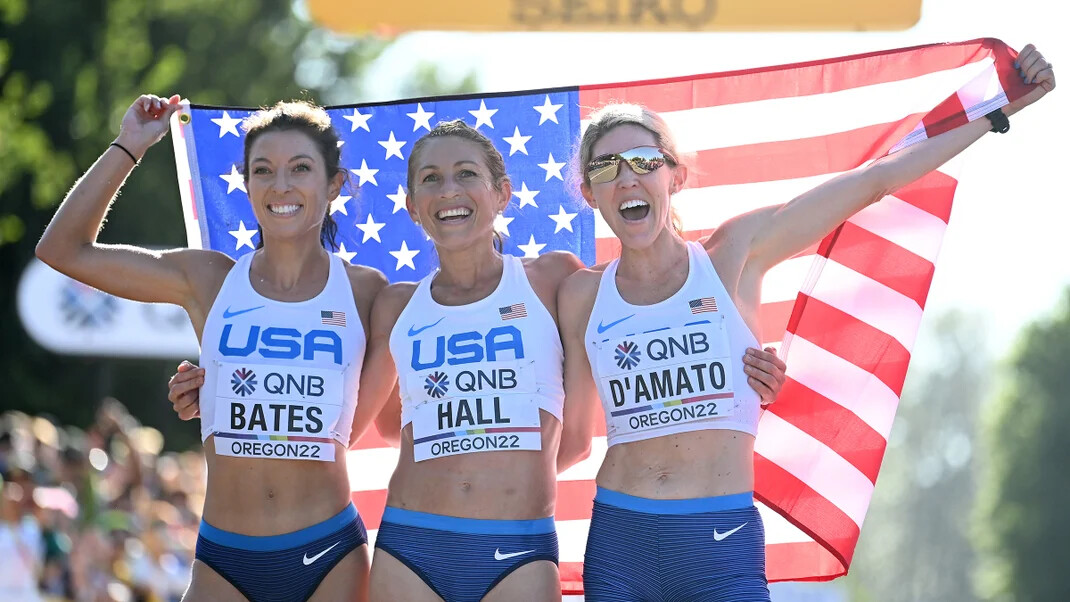
Hall (39, Crested Butte, Colorado) was the best of the bunch, surging throughout the final 8 miles of the race to place fifth in a season-best 2:22:10. She passed Kenya’s Angela Tanui (6th, 2:22:15) in the final mile but ran out of room in her pursuit of fourth-place finisher Nazaret Weldu of Eritrea (2:20:29). Hall’s finish was the best showing by an American woman in the world championships marathon since Amy Cragg earned the bronze in 2017 in London.
Bates (29, Boulder, Colorado) followed a similar strategy and wasn’t far behind in seventh in a new personal best of 2:23:18. D’Amato (37, Richmond, Virginia), who originally had gone out a bit harder only to get stuck in between the first two packs, eventually settled in with the chase pack alongside Hall, Bates, and British runner Jess Piasecki and Uganda’s Immaculate Chemutai.
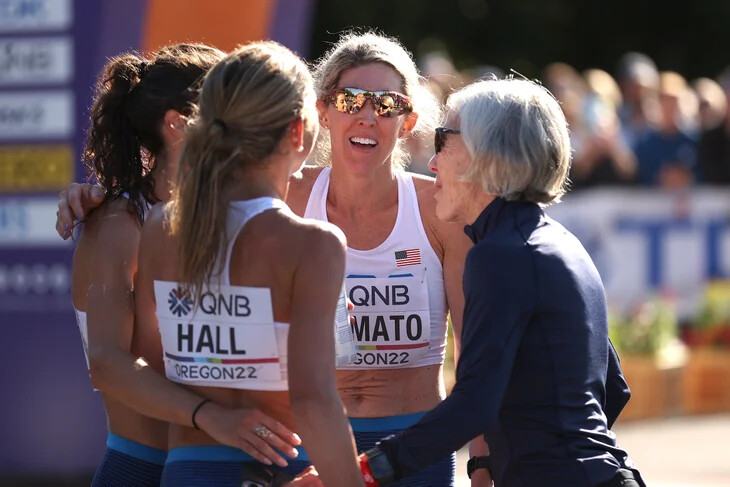
Hall, Bates, and D’Amato received roaring cheers from the crowd along the course that sent runners between Eugene and nearby Springfield, especially along the finish chute on Dr. Martin Luther King Drive. None had represented Team USA at a global outdoor championship before.
They were greeted at the finish line by American running legend Joan Benoit Samuelson, who won the 1984 Olympic marathon and served as the official starter of the women’s world championships race.
(07/18/2022) ⚡AMPby BRIAN METZLER (Women's Running)
World Athletics Championships Budapest23
Budapest is a true capital of sports, which is one of the reasons why the World Athletics Championships Budapest 2023 is in the right place here. Here are some of the most important world athletics events and venues where we have witnessed moments of sporting history. Throughout the 125-year history of Hungarian athletics, the country and Budapest have hosted numerous...
more...Gotytom Gebreslase Wins World Marathon Gold in Championship Record
With a strong downhill surge in the 41st kilometer, Gotytom Gebreslase of Ethiopia won the 2022 world marathon title in 2:18:11. The time set a new championship record; the previous mark of 2:20:57 was held by Paula Radcliffe.
Judith Korir of Kenya, who led Gebreslase by half a step for most of the closing miles, finished second in 2:18:18, and Lonah Salpeter of Israel took the bronze medal in 2:20:18.
Sara Hall was the top American finisher, placing fifth in 2:22:10. Emma Bates placed seventh in a personal best of 2:23:18, and U.S. record-holder Keira D’Amato finished eighth in 2:23:34. D’Amato was added to the team at the beginning of the month after Molly Seidel withdrew because of injury. The three ran together through the middle miles until Hall, ninth at halfway, pulled away and started picking off former members of the lead pack.
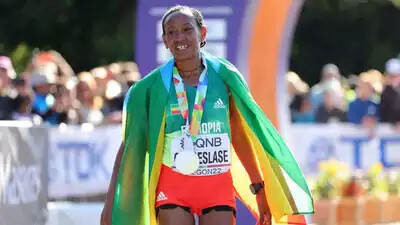
Today’s 5-7-8 is the best team performance by a U.S. squad, male or female, since the marathon world championship was first run in 1983. They succeeded thanks to just the right mixture of aggressiveness and patience.
“I went out with the leaders, but then I could tell it was a little too fast,” Hall said. “So fortunately I had talked to Emma and Keira and been like,‘Hey, I’d love to work with you guys. I don’t want to mess up your mojo, but if we’re together somewhere I’d love to work together.’ So thankfully Emma and I found each other.
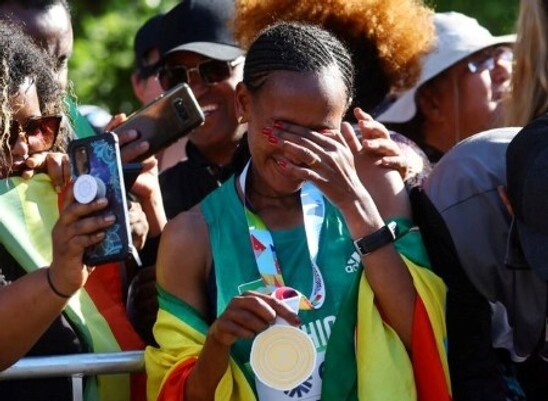
"I was checking our splits and we were running plenty fast out there, so I didn’t really want to run faster than that,” Hall continued. “It was awesome to get to work with [Emma] for so much of the race.”
Bates, who was the top American at Chicago last October, said, “My coach and I had decided that I go out in 70-minute pace for the first half. Which I had never done before, that’s close to my PR for the half marathon. We knew I could be in 2:20 range, fitness-wise.
“I went out with Sara. We were planning on working together before the race, so it was great the first lap to be with each other and then the second lap. Sara took off the later portion of the second lap. So proud of her today for going after it. She really pulled me along that first bit.
“I’m very happy,” Bates continued. “I always want more, we always want more. But to be top 10 in the world is something really really cool, especially on U.S. soil. And to run a PR doing it, it’s something that I won’t forget.”
Well past 30K, Hall was still acknowledging cheering spectators (including Olympian and fellow Flagstaff resident Rachel Schneider).
“I think this is the most fun I’ve ever had in a marathon,” Hall said. “I wanted to smile as much as I could early on, ’cause you know its gonna turn to a grimace eventually. But I was even smiling that last lap. I’m really thankful for everyone that turned out, ’cause I knew that this would be so special. I don’t know if I’ll ever get the opportunity to run a championship like this in the U.S. again.”
How the Race Was Won
Within the opening kilometer, it was obvious that the script for yesterday’s men’s marathon—a huge lead pack running cautiously for the first half—would be ignored. Headed by three Kenyans and three Ethiopians, the leaders took off at 2:17 marathon pace. D’Amato started with the pack but dropped back in the fifth kilometer; in the 12th kilometer, a chase pack led by Bates and Hall caught D’Amato, who then tucked in.
Toward the end of the first of three 14-kilometer loops, the chase pack got within 11 seconds of the leaders. Korir then spurted ahead just before an aid station. That reestablished a quicker tempo for the leaders, and the chase pack’s hope of joining the leaders was permanently ended.
The first significant event occurred in the 19th kilometer, when defending champion Ruth Chepngetich of Kenya stepped off the course, apparently looking for tall grass in which to make a pit stop. Sensing an opportunity, Gebreslase and fellow Ethiopian Ababel Yeshaneh surged on a downhill stretch. Subsequent kilometers of 3:05 and 3:09 (an average of roughly 5:00 mile pace) pared the group to four. They passed halfway in 69:01; the chase pack, including the three Americans, hit halfway in 70:17.
Toward the end of the second lap, Korir again surged approaching an aid station. Her teammate Angela Tanui briefly lost contact for the second time, clawed her way back, but was then dropped for good. In the 27th kilometer Yeshaneh started grabbing at her side and was left by the eventual gold and silver medalists.
Korir and Gebreslase ran within inches of each other for most of the third lap; the Ethiopian was usually just off of Korir’s right shoulder. Korir occasionally motioned to her rival to either help with the pace or back off a bit. It was hard to tell who was feeling more feisty or fatigued.
Or at least it was until the overpass over Route I-5. After cresting the summit, Gebreslase leaned into the long, gradual descent toward the finish. She almost immediately had two, then three, then five seconds on Korir. Gebreslase, who won Berlin last fall, had judged her effort perfectly. For the second day in a row, an Ethiopian won the world title in a championship record.
(07/18/2022) ⚡AMPby Scott Douglas
World Athletics Championships Budapest23
Budapest is a true capital of sports, which is one of the reasons why the World Athletics Championships Budapest 2023 is in the right place here. Here are some of the most important world athletics events and venues where we have witnessed moments of sporting history. Throughout the 125-year history of Hungarian athletics, the country and Budapest have hosted numerous...
more...Elite runners are taking proactive breaks; should you?
Recently, some notable professional runners have made the choice to step back from competition temporarily, for a variety of reasons, most of them precautionary or preventative, including to prevent injury, to recover properly from training or to protect their mental health and overall well-being. Instead of pushing until or past injury to keep competing, athletes are prioritizing their health, and non-elite runners can learn from this and implement it in their own lives.
A Canadian favorite is notably missing from the World Athletics Championships this year: Sage Watson. In early June, the athlete from Medicine Hat, Alta., shared that she had decided to step back from racing “so that [she] can fully recover and give [her] body the break it needs and deserves.”
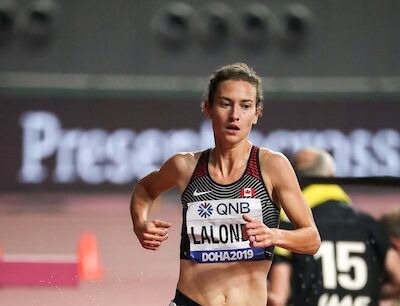
Watson said that she had been competing almost continuously since 2015, and had trained and raced through multiple injuries. After injuring her back, Watson struggled to perform at the Tokyo Olympics. “I went into this year like always, giving it my all, wanting to do better than I did last year, but my injury has seemed to still linger/come back,” said Watson.
In April, Canadian Olympian and women’s 3,000m steeple record holder Gen Lalonde of Moncton took to social media to share that she, too, was taking a break. Lalonde wrote that she’ll be missing the summer track season in order to “improve her mental well-being and physical health to be fully prepared for the 2024 Olympic Games in Paris.” Lalonde expressed similar sentiments to Watson, in that she had been training and competing almost continuously since a young age. “This has left only small, discrete windows of time for my mental and physical development or recovery,” Lalonde said. “I want to be the best version of myself, and to do so, I am stepping off the track for a few months.” Lalonde thanked Athletics Canada for supporting her in her choices, and mentioned that while she was taking time off from competition, she would still be running for the joy of it.

While fans are missing watching Watson and Lalonde race, most people can understand and even relate to a need to step back. Society is starting to recognize that burnout is a very real problem, and instead of judging those who retreat from sport, empathizing with them. Former elite marathoner for Great Britain, Tina Muir, has written and spoken often about the importance of taking breaks, for amateur runners as well as elites. Muir is now based in St. Louis, Mo. and hosts a podcast, and competes in ultras. As a professional athlete, she took a hiatus from competition due to ongoing amenorrhea (loss of her period), Muir realized she wanted to stop racing altogether. She became well known for speaking out about the health challenges athletes face.
Muir advocates for periods of absolutely no running within a training season, after races, and for longer periods if the desire to train isn’t there. She explains on her website, Running for Real: “it gives you that time to focus on other aspects of your life, to be reminded that running isn’t everything good in the world (nor should it be) and that your desire to run will come in ebbs and flows (even for elite runners), and there is nothing to be ashamed of in that.”
Muir gives suggestions for athletes considering how much time to take off and what to do during that time, adding that when the itch to train returns, you should consider ignoring it, in favour of a longer break. She advocates that it’s also OK to not miss running during a break, and to simply enjoy using free time in other ways. Muir emphasizes the benefits of a self-initiated break: deep rest, less chance of injury in the future, and time for the body to fully heal in order to train more efficiently in the next training cycle. She also touts the mental benefits of time off, and says that not only will seasons of training and racing have taken a physical toll on your body, but that “you will also be emotionally exhausted from the intensity and energy you used to focus on your goals.”
With professional athletes making the hard choice to put their competition on pause in order to take care of their mental and physical health, regular runners will see the benefits of being proactive and be inspired to follow suit. Regardless of whether you’ve been training hard since your youth, your running career–and your health in general–will be stronger and more balanced if you consider taking occasional periods of time off.
(07/18/2022) ⚡AMPby Keeley Milne
Seven Ways to Celebrate Your Running Progress
Experienced runners know that it’s important to celebrate milestones. If you haven’t recently taken a step back and thought about how far you’ve come, now’s a great time to think about your running progress.
Celebrating your running progress will not only help you appreciate how far you’ve come, but it will also keep you motivated to maintain your running habit. Whether you just finished a big race, ran double digits for the first time ever, or have been running on a consistent schedule for a few months, there’s always something to celebrate. Here are some ways you can pat yourself on the back about your running progress:

1. Buy yourself some new running gear.
Treat yourself to some new running gear, such as a new shirt or running socks, as a reward for your hard work. Or maybe you need a post-run pampering item, such as a foam roller. The treat will make you feel energized, and reinforce your commitment to your training.
After all, who doesn’t look forward to wearing that new, cool-looking running gear on a long run? If you don’t need any new gear, a massage or pedicure is always a nice reward. Plan a running treat for yourself.
2. Run in a completely new location.
I coach runners in New York City and we run over a lot of bridges during our long runs. Not only are the views spectacular when you’re running across the Brooklyn Bridge, but the runners feel an incredible sense of accomplishment by running from one borough to another.

Running in a new location will be a reminder of how much you can experience through running. Treat yourself to some new views, even if it means having to drive someplace to get to your run destination.
3. Tell someone you know will be proud of you.
Sharing your achievement with someone will make it more real. Whether it’s your running buddy, your significant other, or your mom, tell someone you can safely brag to about your most recent running accomplishments.
4. Start calling yourself a runner.
I frequently hear people say they’re not “real” runners, even though they been running regularly for a while. You don’t need to sub-7:00 miles or run marathons to be a real runner. If you run regularly — no matter what pace or distance — you can proudly call yourself a runner. Start embracing the title!
5. Give yourself a running memento.
Treating yourself to a special keepsake just for runners such as a running medal holder, necklace, or race bib album is a great way to acknowledge your achievements. Every time you look at it, you’ll be reminded about how far you’ve come and how you can keep going with your running habit.
6. Mentor a new runner.
One way to show yourself how far you’ve come is to share your running knowledge and experience with others. If you have a family member or friend who’s expressed an interest in running, ask her if she’d like to join you for a run (at her pace), needs help shopping for running shoes and gear, or maybe even wants to train for a race together.
Not only will helping a new runner allow you to see and celebrate your progress, but you’ll also get a motivation boost and you may gain a new running buddy.
7. Plan your next race.
Committing to a race is a perfect way to pat yourself and give yourself a confidence boost about your running. It also helps get over any post-race blues you may be feeling after completing a big race, like a marathon. Pick a fun race that you’ve done before or perhaps always wanted to do and see if you can get some running friends to do it with you.
(07/18/2022) ⚡AMPby Christine Luff
Letesenbet Gidey’s 10,000 Meter World Championship Win Was a Nail-Biter
The 30-minute race was decided in the final second. Four runners barreled down the homestretch toward the finish, their form breaking down, stride getting sloppy. It was ultimately Ethiopia’s Letesenbet Gidey who maintained her mechanics just enough to cross the line first in Saturday’s 10,000 meter world championship final. She out-leaned the other three women—Kenya’s Hellen Obiri and Margaret Chelimo Kipkemboi and the reigning Olympic champion in the event from the Netherlands Sifan Hassan—to secure victory in 30:09.94, just 0.08 seconds ahead of Obiri who finished second.
“My legs tied up. I tried to get her, but I couldn’t,” Obiri said of the finish, keeping her answer plain and simple. Because that’s what racing is—plain and simple.
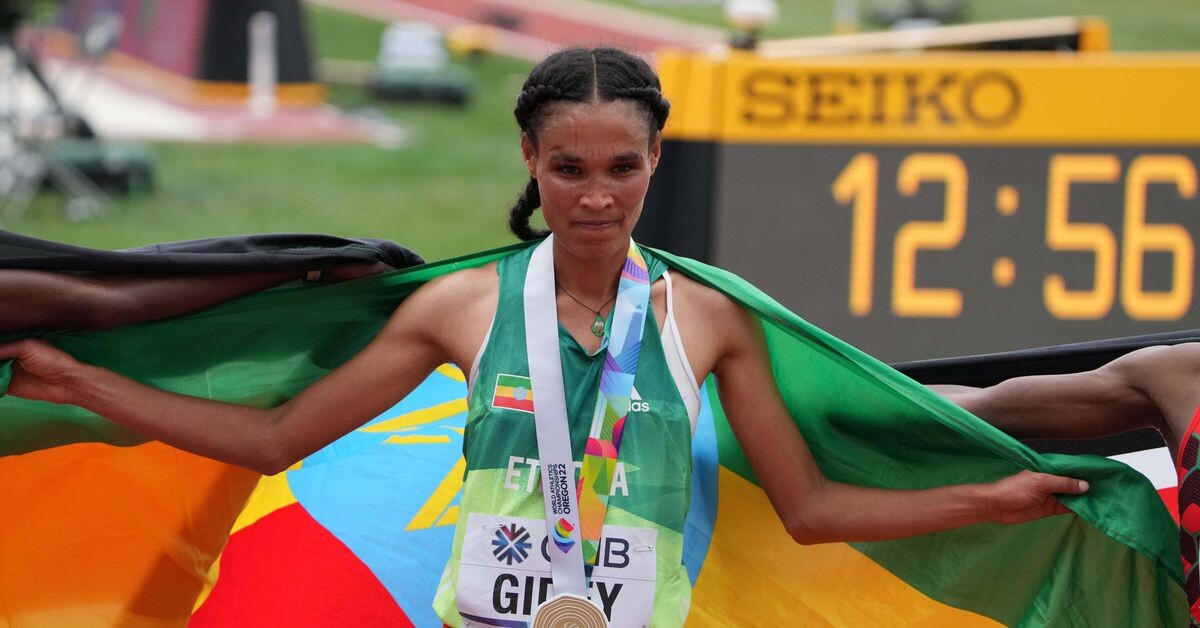
The first 9,900 meters weren’t very dramatic. World-class 10Ks on the track usually go the same way. Everybody runs together at the start and people gradually fall off the back of the pack when they can’t handle the pace. Today was no different. The pace was honest (15:19 through 5K) and then even more honest, with fewer women in contention every lap. It makes sense that so many athletes fell off the pack: The leaders ran 14:50 over the back-half 5K.
Most athletes don’t want to be in the driver’s seat. Leading the race is vulnerable. Karissa Schweizer, who was the top American today, said she loves when the pace is fast and she just has to go along for the ride. “My coach always says my biggest skill is following,” she said. “I just latched on. My goal was to never run by myself and I did that.”
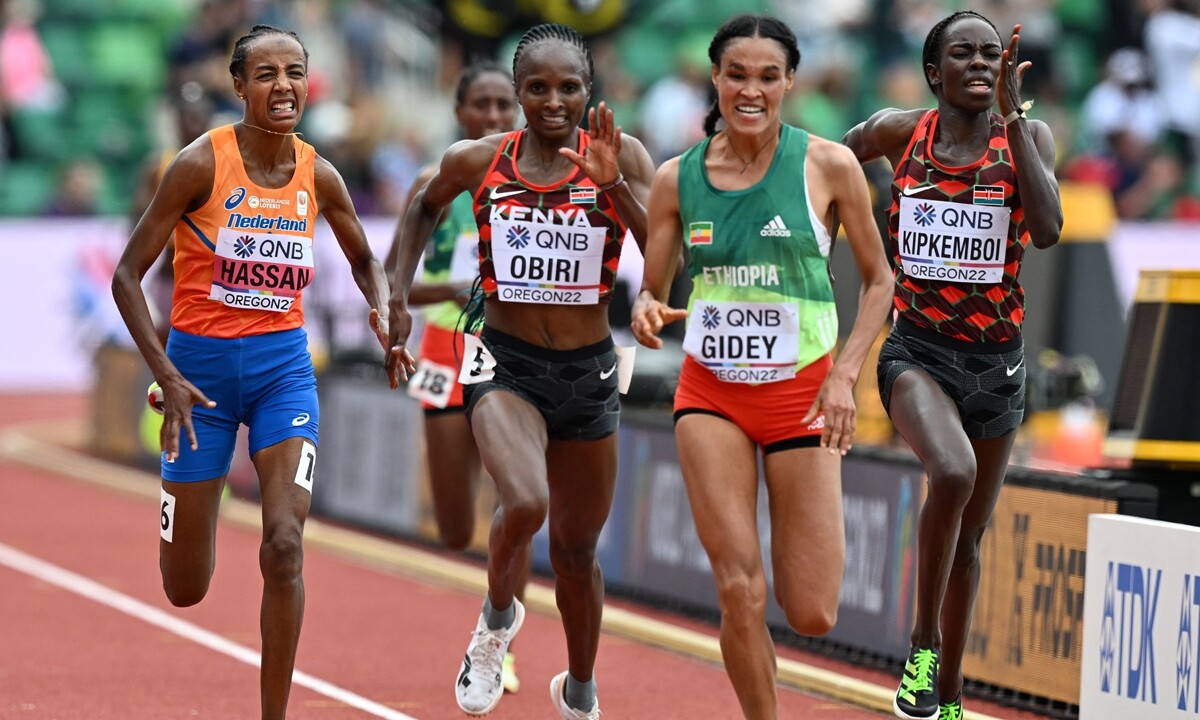
The reigning Olympic champion in the event, Sifan Hassan, was also vying for the title down the homestretch. Coming off the final turn it looked like she had more momentum than anybody. Gidey was certainly the favorite; she’s the current World Record holder in both the 5,000 and the 10,000. A Hassan win over Gidey would’ve been extraordinary—but not necessarily unexpected. Hassan loves to flirt with the history books. Last year in Tokyo, for example, she attempted an unprecedented distance triple crown: She told everybody she wanted to win gold in the 1500, 5,000, and 10,000. She came pretty close. She won gold in both of the long events and placed fourth in the 1500. When it was all said and done, she’d raced six total times with all the qualifying rounds.
Hassan was exhausted—so exhausted she didn’t run for eight months. “I’d trained so hard for so long,” she said. “After Tokyo I crashed. Mentally crashed. I didn’t even care about running.”
Hassan came off the track and the media expected her to be upset. The double Olympic gold medalist had to watch three other women step up onto the podium, so she must be upset. “That was fantastic,” was the first thing she said. “I’m standing here so happy. It’s amazing how I ran.”
Hassan’s first race of the season was last week in Portland. She ran a 5,000 by herself in 15:13, close to a minute slower than her personal best. There were rumors that she’d been injured, that she was out of shape, that she’d scratch from the World Championships. Clearly, none of it was true.
Schweizer has a similar story. She finished ninth today in 30:19, a 30-second improvement to her personal best. She had Achilles surgery in October and said the recovery period that was required of the surgery was the reset she needed to race at a high level this summer.
Though Schweizer said she was constantly in pain, she trained through it for close to two years. “It really wasn’t sustainable, just for my mental health. I was going out and just not enjoying my runs,” she said. “Being able to get that surgery done, I realized how much pain I was actually in. I was kind of limping out of bed, limping to start my runs. Not anymore.”
Schweizer was disappointed with her finish in Tokyo last summer and said today proved she’s moving in the right direction. “Coming into this meet last year I was very overwhelmed. I feel like I got pushed around and then I left disappointed,” she said. “This year I wanted to be in contention with two laps to go, and I feel like I did that. If my best is ninth place today, then that’s what it is. If I just keep showing up, hopefully one day my best will be a medal.”
(07/18/2022) ⚡AMPby Matt Wisner
World Athletics Championships Budapest23
Budapest is a true capital of sports, which is one of the reasons why the World Athletics Championships Budapest 2023 is in the right place here. Here are some of the most important world athletics events and venues where we have witnessed moments of sporting history. Throughout the 125-year history of Hungarian athletics, the country and Budapest have hosted numerous...
more...Record-breaker Fraser-Pryce wins her fifth world 100m title in Oregon
It might be a familiar sight – witnessing Shelly-Ann Fraser-Pryce flowing towards the finish line on her way to yet another global gold – but the awe it inspires doesn’t diminish.
In front of a packed passionate Hayward Field crowd on day three of the World Athletics Championships Oregon22, the Jamaican sprint star secured a record-extending fifth world 100m title, leading a Jamaican sweep of the medals in a championship record of 10.67 (0.8m/s).
It's almost 14 years since her first global title – 100m gold at the 2008 Beijing Olympics – but Fraser-Pryce continues to make history. With her run in Oregon on Sunday (17), the 35-year-old becomes the first athlete to win five world titles in a single individual running event, leading the first ever sweep of the medals in this discipline at the World Championships.
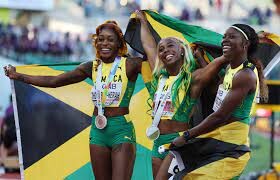
Behind her, Shericka Jackson continued to demonstrate her impressive versatility, running a PB of 10.73 to add world 100m silver to the two 400m bronze medals she won in 2015 and 2019, while five-time Olympic champion Elaine Thompson-Herah claimed her first world 100m medal with a 10.81 run.
In the deepest ever women’s World Championships 100m final, seven of the eight finalists dipped under 11 seconds, with best ever marks for fourth, sixth and seventh. In fourth was Britain’s reigning world 200m champion Dina Asher-Smith, who equalled her British record of 10.83. Switzerland’s world indoor 60m champion Mujinga Kambundji finished fifth in 10.91, while USA’s Aleia Hobbs was sixth in 10.92, Ivory Coast’s Marie-Josee Ta Lou seventh in 10.93 and USA’s Melissa Jefferson eighth in 11.03.

Fraser-Pryce sits third on the world 100m all-time list with the 10.60 she ran in Lausanne last August, putting her behind only USA’s Florence Griffith-Joyner with her 10.49 world record from 1988 and Thompson-Herah with her 10.54 at Hayward Field almost a year ago. On Sunday evening it was all about the win, though the fierce competition meant it took a championship record to achieve it.
Showing superb consistency, it is Fraser-Pryce’s third 10.67 of the season, each mark having been achieved in a different continent.
She is now a 20-time global medallist – with 13 of those being gold – and she has the chance to add even more to that tally in Oregon as she is also entered for the 200m and 4x100m.
The first of Fraser-Pryce’s world 100m title wins came in Berlin in 2009, when she ran 10.73 as the Olympic champion to lead a Jamaican top two ahead of Kerron Stewart. She then claimed a sprint double in Moscow in 2013, regaining her 100m title and winning her first global 200m gold. She retained her world 100m title in Beijing two years later and returned to World Championships action in Doha in 2019 as a mother – her son Zyon arrived in 2017, with Fraser-Pryce having gone into labour while watching the world 100m final that year. In Doha she won 100m gold for the fourth time and again formed part of the victorious Jamaican 4x100m team to claim her fourth world relay win.
Added to this, Fraser-Pryce secured world 4x100m silver medals in 2007 and 2011 and then of course there are her three Olympic titles, four Olympic silver medals and one Olympic bronze.
The first to achieve five world titles in a single individual running event, only three other athletes in World Championships history – Sergey Bubka (pole vault), Pawel Fajdek (hammer) and Lars Riedel (discus) – have also won the same single disciple five or more times.
"I feel blessed to have this talent and to continue to do it at 35, (after) having a baby, still going, and hopefully inspiring women that they can make their own journey," added Fraser-Pryce.
Now she will prepare for the 200m, for which the heats take place on Monday. Jackson, Thompson-Herah, Asher-Smith, Kambundji and Ta Lou will be among those joining her.
“I'm just grateful. Last year when I switched to the 100m I was scared, but I took my time and here I am today," said Jackson, who improved her 200m PB to 21.55 – the third-fastest ever time behind Griffith-Joyner’s 21.34 world record and Thompson-Herah’s 21.53 from Tokyo last year – when winning the Jamaican title. "Feeling good to be part of history and coming for more."
After her four individual Olympic gold medal wins, Thompson-Herah remains on the hunt for her first individual world title.
"I'm happy to get my first 100m medal and be on the podium for the first time," she said. "I've been working really hard, even though I had some struggles during the season."
The Jamaican trio had led the way in the semifinals, Thompson-Herah winning her race in 10.82 and Jackson taking hers in 10.84, while Fraser-Pryce eased to a 10.93 win in the third semifinal.
Asher-Smith went quickest in the heats the day before, running 10.84 for the second-fastest 100m heat time in World Championships history, just 0.01 off her own British record achieved when claiming silver in Doha. Fraser-Pryce won her heat in 10.87. The Oceania record also fell, New Zealand’s Zoe Hobbs advancing to the semifinals with 11.08.
"I can't even imagine the amount of times I've had setbacks and I've bounced back and I'm here again," said Fraser-Pryce. "I continue to remind myself that sometimes it's not because you don't have the ability, but it's the right time. Today was the right time."
(07/18/2022) ⚡AMPby World Athletics
World Athletics Championships Budapest23
Budapest is a true capital of sports, which is one of the reasons why the World Athletics Championships Budapest 2023 is in the right place here. Here are some of the most important world athletics events and venues where we have witnessed moments of sporting history. Throughout the 125-year history of Hungarian athletics, the country and Budapest have hosted numerous...
more...Tamirat Tola from Ethiopia runs championship record to take world marathon title in Oregon
Ethiopia’s Tamirat Tola, world silver medallist in 2017, is the world marathon champion of 2022 after a masterful and ruthless run at the World Athletics Championships Oregon22 saw him come home more than a minute clear in a championship record of 2:05:36 on Sunday (17).
His teammate Mosinet Geremew won a protracted battle for silver, pulling clear of Tokyo Olympic bronze medallist Bashir Abdi over the final kilometre to finish in 2:06.44, with the Belgian taking another big bronze in 2:06.48.
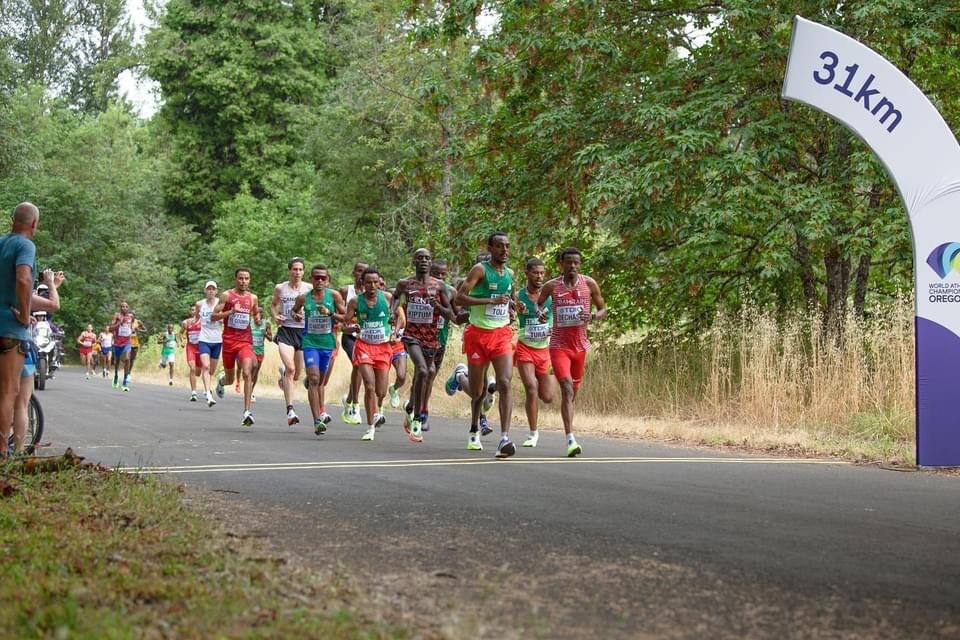
Missing the medal podium by one place was the unlikely figure of Canada’s Cameron Levins, who had the consolation of setting a national record of 2:07:09 ahead of Kenya’s three-time world half marathon champion Geoffrey Kamworor, who clocked 2:07:14.
"It was a dream come true," Tola said. "I learned from my mistake in 2017 (World Championships) and I made sure it did not happen again."
On that occasion, Tola’s attempted run for home 10km from the end was thwarted as Kenya’s Geoffrey Kirui overtook him to win gold. This time there was no faltering on the 30-year-old Ethiopian’s part.
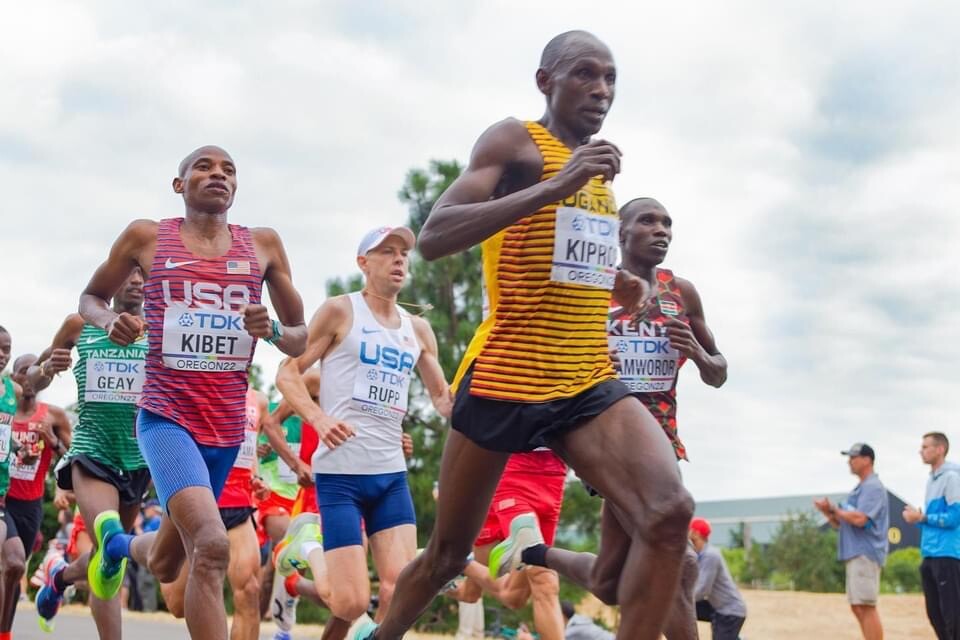
In what was the first event of day three at the championships in Oregon, Tola took more than a minute off the record of 2:06:54 set by Kenya’s Abel Kirui at the 2009 edition in Berlin.
But that was no more than an adornment for him on a day when he ran with apparent certainty from start to finish, never being far from the lead in a race that proceeded without undue vigour towards a halfway time of 64 minutes – comfortable territory for today’s elite marathon runner.
Conditions on a course consisting of three 14km loops running through Eugene and Springfield – home of The Simpsons – were an overcast sky and temperatures rising, not dramatically, from 13C at the starting time of 6:15am.
But there were no big city marathon pacers here. This was a championship race, with all the uncertainty that has traditionally involved. While the first half offered hope of success for many who were among the event's fastest, that hope was suddenly and ineradicably quashed by the eventual winner in the telling final quarter of the race.
Tola shaped what had been a largely inchoate procession of surging and slacking when he took off between the 33rd and 34th kilometres. It was not a drill.
By the 34km marker his lead was seven seconds. At 35km it was 12 seconds, at 36km it was 17 seconds and at 37km it was 26 seconds. With 5km to go, the gold was gone and the drama of the race resided in which of the chasing group of four – Abdi, Geremew, Levins and Kamworor – would share the podium.
Geremew’s big move, when it came with a kilometre remaining, was as decisive as that of his compatriot. Very suddenly he was a silver medallist in waiting and Abdi seemed to be looking back down the field a lot in the closing stages, perhaps seeking his training partner Abdi Nageeye, who had so vigorously encouraged him to keep going in pursuit of a medal in Tokyo last summer.
As it happened, Nageeye was one of eight runners who failed to finish, in company with Ethiopia’s defending champion Lelisa Desisa, who was not thought to be in good form and who confirmed that speculation as he struggled out of contention by the halfway point.
The race had begun with bad news for Japan, whose charismatic national record-holder Kengo Suzuki did not start.
America's Galen Rupp, who had run this course innumerable times as a former alumnus of the University of Oregon, was seeking to add another global marathon medal to the bronze he won at the Rio 2016 Games. But after hitting the front briefly at the halfway point, taking the field through 22km in 66:58, he dropped away to finish 19th in 2:09:36.
(07/17/2022) ⚡AMPby World Athletics
World Athletics Championships Budapest23
Budapest is a true capital of sports, which is one of the reasons why the World Athletics Championships Budapest 2023 is in the right place here. Here are some of the most important world athletics events and venues where we have witnessed moments of sporting history. Throughout the 125-year history of Hungarian athletics, the country and Budapest have hosted numerous...
more...Cheptegei leaves rivals with no response to retain world 10,000m title in Oregon
Just like the Olympic final in Tokyo, there was a mass queue of runners still in contention as the bell sounded in the men’s 10,000m final at the World Athletics Championships Oregon22.
On that occasion there were seven men remaining in the hunt for gold. This time there were eight.
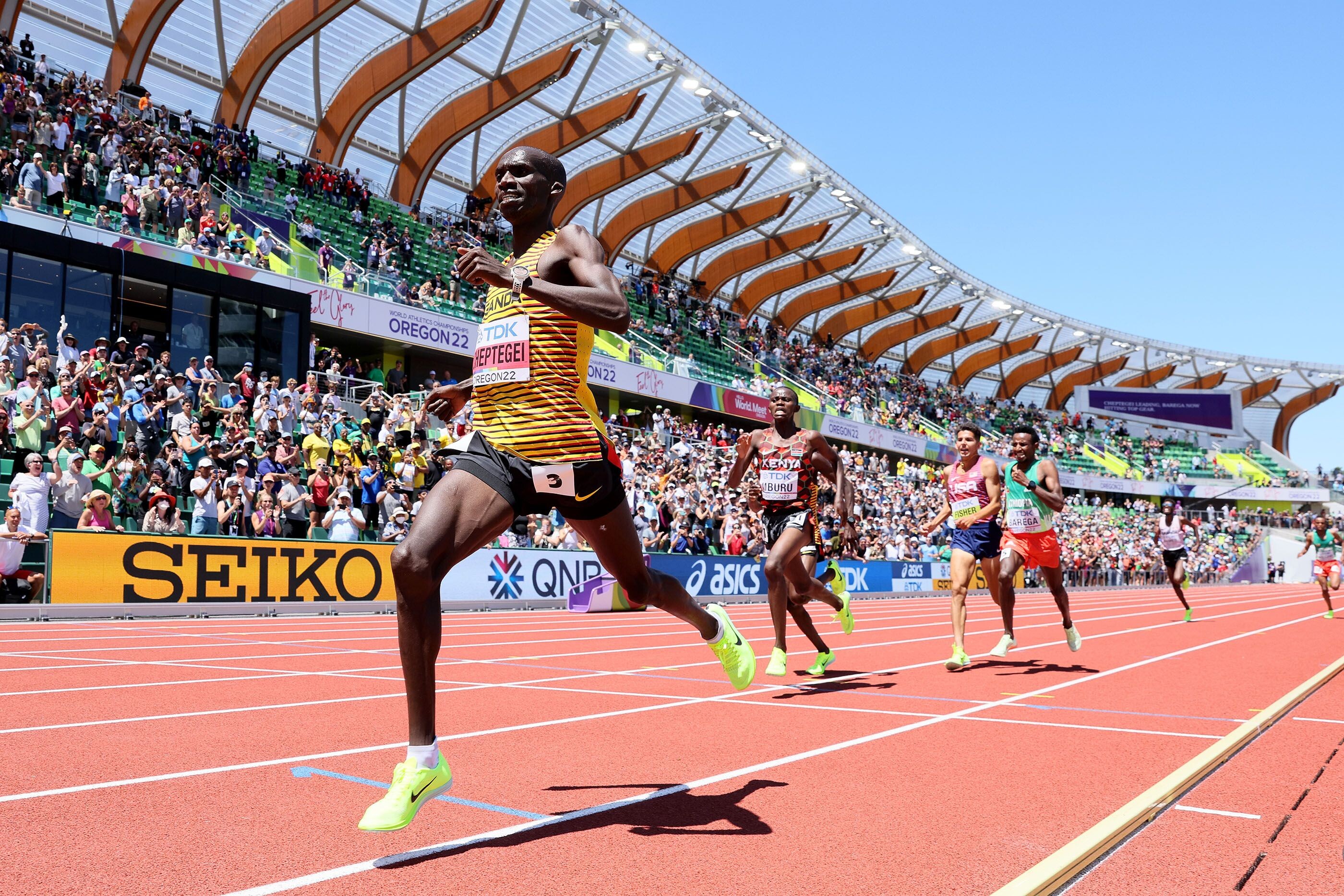
There was another subtle difference as the 25-lap event built up to just as thrilling a crescendo as the women’s final the previous day.
In Tokyo the slender Ethiopian Selemon Barega refused to budge from the front, keeping ahead of Uganda’s Joshua Cheptegei with a 53.9 final lap.
In Eugene, having controlled most of the race from halfway, Cheptegei hit the front again at the sound of the bell and stayed there. The fastest man in history at 5000m and 10,000m was not going to relinquish the title he toiled to gain in Doha three years ago.
Barega moved on to his shoulder down the back straight and looked set to pounce with 200m to go, but as Cheptegei led round the final bend and into the finishing stretch the world indoor 3000m champion had nothing in the tank.
Like Sifan Hassan in the women’s final, Barega faded out of the medals. Like Barega’s compatriot Letesenbet Gidey, Cheptegei gritted his teeth and kept his feet on the gas. The 25-year-old could afford to open his arms in celebration as he crossed the line 0.47 clear of his closest pursuer in 27:27.43.
In doing so, Cheptegei became only the fourth man to win back to back 10,000m world titles, following in the footsteps of Ethiopians Haile Gebrselassie and Kenenisa Bekele and Britain’s Mo Farah. His final lap was faster than Barega’s in Tokyo: 53.42.
"I knew that if I could get into the last fight, I could control it and I could speed it up," said Cheptegei, who won the world U20 title back at Hayward Field eight years ago. "It was very emotional for me to come back to the USA where I started my international career in 2014. Now, I want to continue my dominance in long distance running and I hope I will manage it."
The surprise silver medal winner, in 27:27.90, was Stanley Mburu. The world U20 silver medallist at 5000m in 2018, the 22-year-old Kenyan had quickly regained his composure after falling on the opening lap.
As in the Olympic final, Jacob Kiplimo took the bronze medal, Cheptegei’s compatriot clocking 27:27.97 to resist the challenge of home favourite Grant Fisher. The spirited US challenger had to settle for fourth in 27: 28.14, with Barega fifth in 27:28.39.
There were Ugandan flags fluttering in the stands as the 24 runners took their place on the start line, the loudest cheer coming for Fisher, who settled into second as Spain’s Carlos Mayo led through 400m in 66.70.
Mayo remained in front through 800m in 2:12.72, 1km in 2:46 and 2km in 5:51, with Fisher maintaining in second spot and Cheptegei keeping a watching brief on proceedings in third.
After Mayo passed 3km in 8:20.08, Cheptegei’s teammate Stephen Kissa took over at the front but without upping the pace.
Indeed, the speed slowed to 2:51 for the fourth kilometre, prompting Barega to show his face at the front for the first time with 13 laps to go, reaching halfway in 14.01.32.
Kiplimo was first to make a notable injection of pace, stretching out the field with a 64.46 lap. When Cheptegei moved through on to his compatriot’s heels, Barega was alert to the potential threat, surging back up into third.
Cheptegei then took over at the front but slowed the pace to steady laps of 67 seconds. All the while, Barega breezed along, eyes fixed on the target on Cheptegei’s back as 15 men remained in contention.
With two laps to go, Mburu made the long run for home but at the bell there were still eight contenders. It was then, after a fleeing appearance at the front by Barega’s teammate Berihu Aregawi, that Cheptegei regained control – this time for good.
(07/17/2022) ⚡AMPby World Athletics
World Athletics Championships Budapest23
Budapest is a true capital of sports, which is one of the reasons why the World Athletics Championships Budapest 2023 is in the right place here. Here are some of the most important world athletics events and venues where we have witnessed moments of sporting history. Throughout the 125-year history of Hungarian athletics, the country and Budapest have hosted numerous...
more...Two-Time Olympic Medalist Galen Rupp Takes on the World on Home Ground
The best U.S. male marathoner takes on the world at home; also, men’s 10K and women’s 100 finals.
Day 3 of the track and field world championships starts early and ends late, with must-watch races (men’s marathon and women’s 100-meter final) bookending the action.
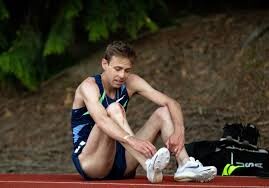
But you also won’t want to drift away midday; otherwise, you’ll miss the always-exciting men’s 10,000-meter final. (Fingers crossed it matches the excitement of the women’s final on Saturday.) There are also lots of key qualifying races for finals later in the week.
Here’s a quick guide to the day’s key events

Imagine that you’re one of the best marathoners in U.S. history, and that the world championship course will run through your college town. You’d be pretty psyched, right?
That’s the situation on Sunday for University of Oregon alum and two-time Olympic medalist Galen Rupp. His buildup for this once-in-a-lifetime race has been far from ideal—he dropped out of his most recent race, the New York City Half in March, because of a herniated disc, and he had COVID in June. Nonetheless, the second fastest American in history told us earlier this month that he’s confident about his fitness and will, as per usual, fight for the win or podium as long as possible.
He’ll need confidence, fitness, and a little luck to meet that goal. Among his competitors: two-time NYC Marathon champ Geoffrey Kamworor of Kenya; the reigning Olympic silver and bronze medalists (training partners Abdi Nagayee of the Netherlands and Basher Abdi of Belgium); defending world champ Lelisa Desisa of Ethiopia; and Desisa’s compatriots Mosinet Geremew (second at 2019 worlds and holder of the best PR in the field) and Seifu Tura (who relegated Rupp to second at Chicago last October).
And those are just the biggest of the big names. Still, a Rupp podium appearance is possible. He and the rest of the field got a prerace bit of luck when 2019 Boston winner Lawrence Cherono of Kenya received a provisional doping suspension on Saturday. Also, world championship marathons tend to have a lot of dropouts. If a top-tier marathoner is having a bad day, it can be tempting to cut one’s losses and aim for one of the lucrative fall marathons. (Prize money for all events at worlds is paid eight deep, with $70,000 for first and $5,000 for eighth, but there are no appearance fees.) The Eugene course is a good one for this sort of DNF. It’s three 14K loops, so quitting after two circuits gets you a hard run but one that’s easy to rebound from.
T he course is also flat, and the weather is forecast to be favorable (temperatures in the 50s, with mild humidity). Times could be fast. Unlike in hotter summer global marathon championships, there should be less incentive for the top contenders to dawdle and thereby open opportunities for slower entrants.
The U.S. squad is rounded out by Army First Lieutenant Elkanah Kibet and financial analyst Colin Mickow, who both train around demanding professional responsibilities. Especially at the first world championships on U.S. soil, they, like Rupp, will be highly motivated to leave it all out on the streets of Eugene.
(07/17/2022) ⚡AMPby Runner’s World
Lawrence Cherono of Kenya suspended after testing positive for trimetazidine
The seventh-fastest marathoner of all time, Kenya’s Lawrence Cherono, who was one of the favourites to win the marathon at the 2022 World Championships, has been provisionally suspended on the day before the race after testing positive for a banned substance. Cherono tested positive for the banned substance trimetazidine, which is used to treat chest pain resulting from a lack of blood supply and oxygen to the heart. The Athletics Integrity Unit (AIU) said in a press release that there were delays in the processing of his test sample, which was taken on May 23. The delay made it impossible for another athlete to take his spot on Team Kenya.The drug trimetazidine helps metabolize fatty acids, which helps your body use oxygen, allowing for more blood flow to your heart and limits quick changes in your blood pressure.The 33-year-old Kenyan finished fourth at the Tokyo Olympics and won both Boston and the Chicago Marathon in 2019. Cherono has a personal best time of 2:03:04 from the 2020 Valencia Marathon, where he finished second.Back-to-back NCAA champion and U.S. 400m Olympian Randolph Ross was also kicked out from the World Athletics Championships on the day before his race for tampering with the antidoping process after an unsuccessful testing attempt on June 18.
The AIU announced on Saturday that Ross will be provisionally suspended a month after officials failed to locate him to take an anti-doping test. Ross won the Olympic gold with the U.S. 4x400m relay team in Tokyo.According to the AIU, athletes must give anti-doping authorities detailed lists of where they’ll be so testers can reach them without notice to collect samples when the athletes are not competing. In some cases, three missed tries can result in an anti-doping violation. AIU did not release the specifics of Ross’ case, other than to say that “the allegation arises out of the athlete’s conduct during an investigation into a potential whereabouts violation.”
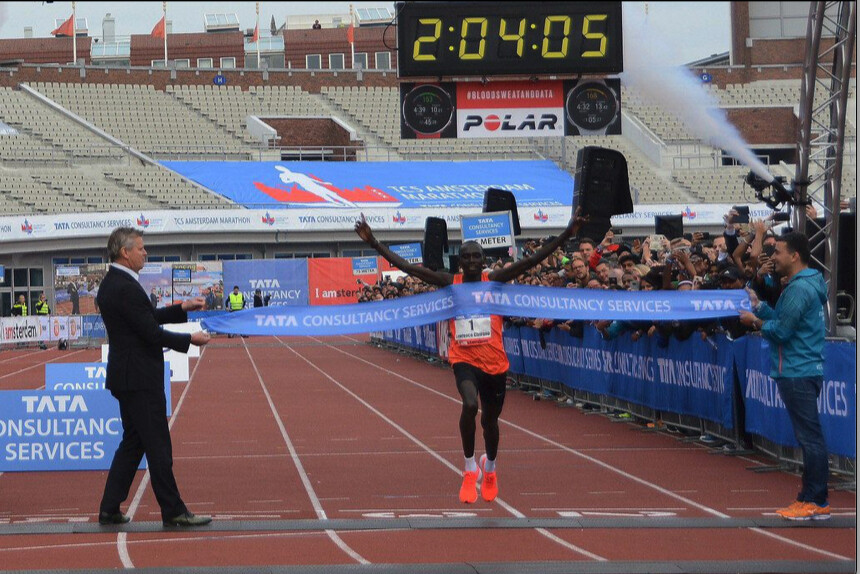
The 2022 World Athletics Championships are taking place from July 15-25 from Hayward Field in Eugene, Ore. All the action will be brought to you by Canadian Running and Asics Canada. Follow us on Twitter on Instagram for all things Team Canada and up-to-date exclusive news and content.efore the race after testing positive for a banned substance.
(07/17/2022) ⚡AMPby Running Magazine
2022 Hardrock 100 Women’s Race
The 2022 Hardrock 100 start list included 27 women, the most the race has ever had. As anticipated, Courtney Dauwalter (pre-race interview) scored a decisive victory, setting a new clockwise and overall women’s course record. Diana Finkel previously held the clockwise record of 28:32 (2010) and overall record of 27:18:24 (2009). Further back in the field, the top ten of the field was much more closely packed this year than we’ve seen previously at Hardrock, including last year’s second- and third-place finishers Darcy Piceu (pre-race interview) and Meghan Hicks, late entrant off the waitlist Hannah Green, and 450k Tor des Glaciers winner Stephanie Case (pre-race interview). Here’s how the race unfolded.
Dauwalter was off to an early lead, but started conservatively enough without trying to gap the course record pace immediately. She got through the Chapman aid station at mile 18 with 4:16 on the clock. Darcy Piceu and Maggie Guterl (pre-race interview) followed in second and third, some 37 minutes back, in jovial humor, waiting for each other at the aid station. They were followed 10 minutes later by Hannah Green in fourth, with Stephanie Case another two minutes back in fifth.

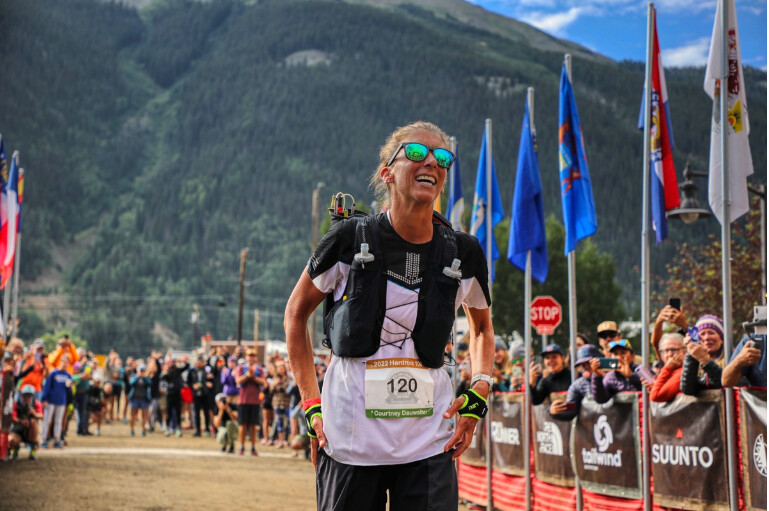
Through Telluride at mile 28, Dauwalter had extended her lead on second place, Guterl, to 67 minutes, with Piceu coming in a close third and leaving the aid station alongside Guterl. Hannah Green followed in fourth, with Stephanie Case in fifth, who was already recovering from some early stomach issues.
Past mile 33 at Kroger’s Canteen, as Dauwalter barreled ahead, the chasing women had paired off and were working together — with Piceu and Guterl still in second and third and all smiles, while Hannah Green and Stephanie Case had joined forces 22 minutes back from that duo.
Dauwalter arrived at the Engineer aid station, just past the halfway point, in sixth-place overall with 12:10 on the clock, still looking strong and in control. The effort was starting to show by Sherman at mile 73, but she was still eating well and focused.
Stephanie Case, who had crept up the women’s field, arrived into Sherman as second woman. Hannah Green followed in third at mile 73 — looking tired, but calm and collected as she had done all race — with Darcy Piceu and Meghan Hicks nipping at her heels in fourth and fifth.
By this point, Duawalter was more than five hours clear of her nearest women’s competitor, and thoughts were starting to turn to Diana Finkel’s longstanding course records. After a relatively conservative beginning, Dauwalter finally took the lid off of course record pace by mile 93 at Cunningham Gulch, coming in with 24:16 on the clock. She seemed to grow in strength and resolve as the finish line approached, and eventually stormed home in a time of 26:44:38, to add Hardrock 100 to her litany of wins, course records, and other ultrarunning achievements.Case ran strong to the ending, finish her first Hardrock 100 in second place in 32:52:46. The town of Silverton came out to celebrate local resident Hannah Green’s third-place finish in a time of 34:26:39, taking nearly two full hours offer her time from 2017.For the first time in her nine starts, Darcy Picue finished lower than second, but she worked through endless to finish fourth in 35:08:06.
(07/17/2022) ⚡AMPby Bryon Powell and Sarah Brady I run far
Hardrock 100
100-mile run with 33,050 feet of climb and 33,050 feet of descent for a total elevation change of 66,100 feet with an average elevation of 11,186 feet - low point 7,680 feet (Ouray) and high point 14,048 feet (Handies Peak). The run starts and ends in Silverton, Colorado and travels through the towns of Telluride, Ouray, and the ghost town...
more...2022 Hardrock 100 Men’s Race
The men’s race at the 2022 Hardrock 100 finished pretty much in line with expectations – with an epic showdown between two of the greatest talents ever seen in the sport – Kilian Jornet (pre-race interview) and François D’Haene (pre-race interview). But there was plenty more action along the way, with bold moves from Dakota Jones (pre-race interview), and some strong running further back the field. Here’s how this year’s clockwise action played out.
From the start, the runners made a fairly predictable formation at the front of the field. Dakota Jones, Francois D’Haene, and Kilian Jornet led the charge, running together, with Jones joking with one of our reporters that they had agreed to finish in the aforementioned order. A very happy looking Dani Jung followed close back from the leaders in fourth at the KT aid station at mile 11.5, with John Kelly three minutes later in fifth. There was a gap of ten minutes or more from this front pack to Jeff Browning and Luke Nelson, who looked to be taking it very easy in sixth and seventh.The front trio remained within a few strides of each other the whole way into Ouray at mile 44, and although looking relaxed, they were already twelve minutes up on course record pace. Jung still followed in fourth, but the gap had widened to almost half an hour. He still looked very fresh and appeared to be taking the high road and running his own race, rather than getting caught up in anything outside of his comfort zone. The next three positions — Kelly, Browning, and Nelson — also remained unchanged with Kelly appearing more sombre than the others, but still making a fast turnaround in the aid station.
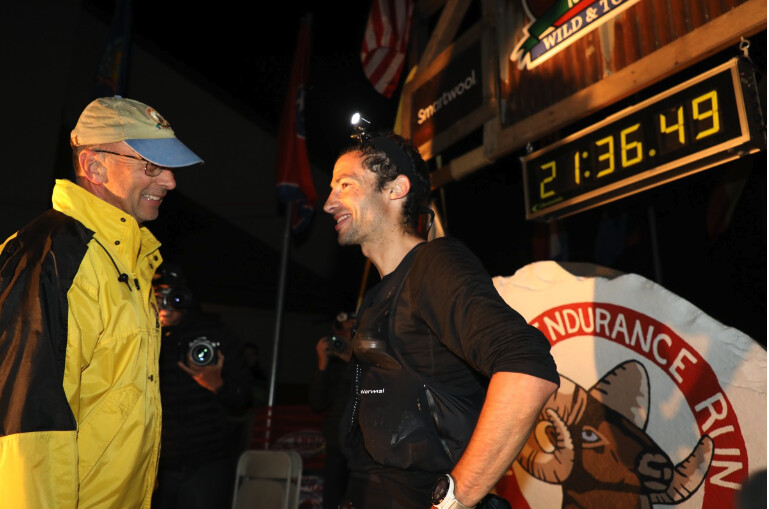

Jones was the one to make the move that cracked the front trio, and he came into the Engineer aid station at roughly the halfway point 11 minutes clear of Jornet and D’Haene, who remained together. Jung held on steadfastly in fourth, and former Hardrock champion Browning had moved up to take fifth from a struggling John Kelly.Jones continued to lead the way through Grizzly Gulch, two-thirds of the way into the race, but the Euro duo of Jornet and D’Haene had begun to close. By Sherman at mile 73, the two had joined forces, entering and leaving the aid station together eight minutes ahead of Jones.
They continued to run within seconds of each other, but by Cunningham Gulch at mile 93, there was a notable shift in tone as the race had begun in earnest. Jornet was the first to leave the aid station with D’Haene following seconds later. D’Haene looked strong and can never be underestimated in the finish, but after the headtorches began to flicker on the final descent through Arrastra Gulch, it was Jornet who emerged first from the darkness, having put five minutes on his friend and opponent in the roughly four-mile stretch.
Jornet powered through to the finish, taking his fifth victory in five Hardrock starts, and a clockwise and overall course record in a time of 21:36:34. D’Haene followed and touched the rock at 21:51:21, which was also under the original clockwise record from Jornet’s 2014 run.Further back, despite losing hold of first place, Dakota Jones never stopped pushing and took third in a strong 23:06:19, making his pre-race goal of breaking 24 hours.
An emotional Dani Jung came home in fourth, a position he held essentially all race, in a time of 25:53:47. This is just the beginning of Jung’s season, with UTMB and Diagonale des Fous still to come, and it will be interesting to watch him build on this performance.Jeff Browning was next home, finishing his sixth Hardrock in a time of 26:17:47, saying at the finish “It doesn’t get any easier.”
(07/17/2022) ⚡AMPby Bryon Powell and Sarah Brady I run far
Hardrock 100
100-mile run with 33,050 feet of climb and 33,050 feet of descent for a total elevation change of 66,100 feet with an average elevation of 11,186 feet - low point 7,680 feet (Ouray) and high point 14,048 feet (Handies Peak). The run starts and ends in Silverton, Colorado and travels through the towns of Telluride, Ouray, and the ghost town...
more...Dominican Republic overhauls host nation to take mixed 4x400m gold in Oregon
Had the race been 10 metres shorter, it may have gone in the USA’s favour. 10 metres longer and perhaps the Netherlands would be the champions. But Dominican Republic timed their efforts to perfection in winning the mixed 4x400m at the World Athletics Championships Oregon22, catching the USA just before the line and holding off a fast-finishing Dutch team.
Over the past 12 months, four teams in particular have dominated this discipline. The same teams that occupied the top four spots at the Olympic Games last year were once again in the medal hunt here at Hayward Field, only the finishing order was different.
This time, the Dominican Republic – a nation of just 10.8 million people – defeated some of the superpowers of the sport, clocking the second-fastest time in history, 3:09.82.
Elija Godwin got the host nation off to a strong start, covering the first lap in 44.71 – a full second quicker than the next-best lead-leg runner – and handed over to Allyson Felix with a significant lead, prompting the loudest cheer of the day from the home crowd. By the time the legendary US sprinter was half way around the track, she had a lead of about 15 metres on her rivals.
But Dominican Republic’s Marileidy Paulino, who took silver just ahead of Felix in the individual 400m in Tokyo last year, came charging around the final bend and made up the significant gap on the 2015 world 400m champion, catching her just before the line to put Dominican Republic’s Alexander Ogando in the lead.
Paulino’s split was later confirmed at 48.47. Felix, timed at 50.15 for her leg, handed over to teammate Vernon Norwood. Lieke Klaver, meanwhile, ran a 49.32 split to put the Netherlands back into contention. Further behind, Jamaica and Olympic champions Poland were trying to chase the top three but struggling to make any impact.
Norwood clocked a 44.40 split – the fastest of the race – to put the USA back in the lead going into the final leg. But Ogando (45.12) and Dutch 800m specialist Tony van Diepen (45.13) ran solid legs to keep their teams in contention.
Vernon Norwood and Alexander Ogando in the mixed 4x400m at the World Athletics Championships Oregon22 (© Getty Images)
US anchor leg runner Kennedy Simon went out hard on the final leg and opened up a significant gap on Fiordaliza Cofil of the Dominican Republic and Olympic 400m hurdles bronze medallist Femke Bol of the Netherlands. At one point it seemed as though Simon’s lead would be safe, but Cofil started to gain on the US anchor on the home straight, while a long-striding Bol had both runners in her sights.
The home crowd did their best to support Simon in the closing stages, but her early exuberance proved costly and Cofil caught her just a few metres before the line, securing gold for the Dominican Republic in 3:09.82 – the second-fastest time in history and just half a second shy of USA’s world record from the 2019 World Championships. A split second later, Bol then came charging through to also pass Simon, giving Netherlands the silver medal in 3:09.90 ahead of the USA (3:10.16).
Poland, triumphant in Tokyo 12 months ago, this time finished outside the medals in fourth with 3:12.31, just ahead of Jamaica (3:12.71). Nigeria (3:16.21), Italy (3:16.45) and Ireland (3:16.86) rounded out the finalists.
It was Dominican Republic’s third gold medal in World Championships history, behind the two titles won by 400m hurdler Felix Sanchez.
“We are a small country, but we have a big heart,” said Dominican Republic’s lead leg runner Lidio Andres Felix.
“We did a great job as a team and I hope we can achieve another good result in Paris (2024),” added Paulino. “The Dominican Republic has a lot of talent, not just in baseball. I have a lot of admiration for Allyson Felix; we ran together in the Tokyo Olympic final.”
And while it may not have been the result the host nation was looking for, Felix still made history by winning a record 19th World Championships medal. She also broke records for the number of World Championships at which she has won a medal (eight) and for the longest span of medal-winning years (17).
“It was very special to be able to run in front of a home crowd for my last race, and my daughter was also in the stands,” said Felix. “It was a night I will cherish. I've had such good memories. I know it is time and these guys will carry it on into the future. I am at peace stepping into this next stage and have tremendous gratitude for this sport.”
(07/17/2022) ⚡AMPby World Athletics
Five tips to run further and faster
Whether you’re a seasoned runner or only started running recently, chances are you probably want to run further or faster at some point.
In this blog, I want to go through some simple ways you can take your running to the next level and achieve those goals.
1. It’s okay to walk
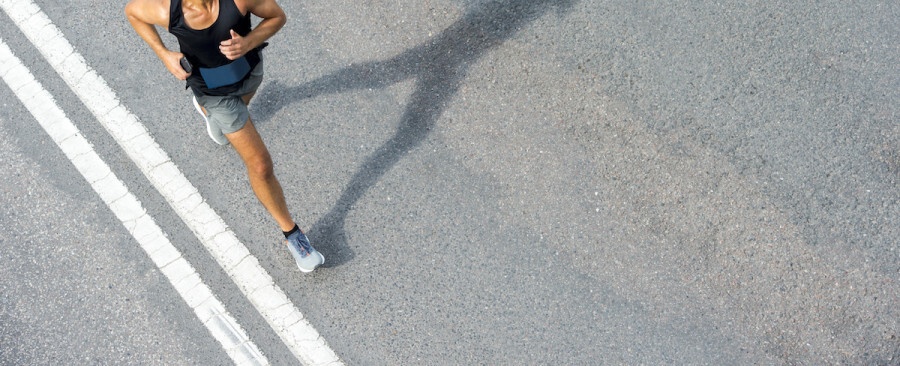
I find that many people think that you’re not allowed to walk if you want to call yourself a ‘runner’. But walking is actually an integral part of running training. By including sections of walking in your running training, you can catch your breath, let your heart rate settle back down and save your legs for a bit. Ultimately, this helps you train more often and clock up more kms overall.
If you’re looking for inspo as a beginning runner, you can find ‘Couch to 5k’ programs online, which all include walking as part of the program.

And if you’re a more advanced runner, you can progress to even further distances by incorporating walking in your routine.
2. Do one thing at a time
A lot of us like to get out there and just run as hard as we can. But if you want to run further and faster, you should consider making your training more specialised and intentional – focusing on distance and speed separately.
Some people call it ‘polarised training’, splitting up your running to look something like this:
The bulk of your kms should be at a comfortable, conversational pace to build up your ability to run longer distances and overall aerobic capacity.
Have dedicated, more intense sessions focusing on speed and strength. This could include things like interval training or hill repeats.
If you’re still new to running, you might not want to worry about polarising your training too early, the most important thing is enjoyment.
But if you’ve been running for some time already, you can find training programs on the internet to give you more ideas on how polarised training can help you. Try searching for things like ‘5k to 10k training plan’, ‘10k to half marathon training plan’ and so forth or ‘how to run a faster 5k’.
3. Know where you’re going… or not
Planning where you’re going ahead of time can help you run with purpose. On those days when you don’t feel like running but know you’ll feel better afterwards, having a go-to loop that’s short and sweet and near your house can really help you turn that doorknob. I would suggest having a few routes that you can rely on depending on how you feel.
But running is also a great way to learn about your surroundings or check out a new neighbourhood. Sometimes it can really pay off to run down a street you usually overlook or turn right instead of left. And if you’re afraid of getting lost, you can still get curious in your research – hop on the Maps app on your phone or find a free running map and plot out a running adventure!
4. Do something else
Running is a high-impact activity, so it’s important to give your joints a break by mixing it up with activities like walking, cycling and swimming. On top of this, activities such as weight exercises, yoga and pilates can make your body stronger and more flexible and, in turn, help you run further, faster and injury-free. You can also talk to a personal trainer or physiotherapist for personalised advice.
And remember: if your body is crying out for a break, listen to it – make yourself a tea and spend some quality time reading on the couch! Like I said at the top of this blog, the key to running further and faster is consistency. It’s absolutely okay to miss a session here and there if it helps you stay consistent in the long run.
5. Enjoy it!
There is no silver bullet to running. One session alone won’t magically make you faster and fitter – the key is staying consistent over weeks and months. So, tip number five is to make sure you enjoy yourself. Hopefully, these tips give you some ideas on how to keep that smile (or happy grimace) on your face.
(07/16/2022) ⚡AMPby Tim Siow
Allyson Felix wins her 19th World Championships medal, the most of any athlete in history
Allyson Felix made it very clear that this was her final year of competition. She’s accomplished basically everything there is to accomplish and now she’s on her farewell tour. After the U.S. won a bronze medal in the mixed-gender 4×400-meter relay tonight at the World Championships, Felix was asked about her favorite moment over her career—a career that’s spanned over two decades, five Olympic Games, and countless other accomplishments. She said, “I’ll go with tonight.” She’s cherishing the end. “To be able to come here in front of a home crowd is something I’ve always wanted.”
Her daughter was in the stands. Her husband was in the stands. And it’s as though the rest of the people in Hayward Field were her family. It’s like she’s the only person who matters. She’s the homecoming queen, the poster girl, the best dressed person at the party. If you were blindfolded and you had to guess when Felix got the baton by just using your ears, it wouldn’t be very hard.
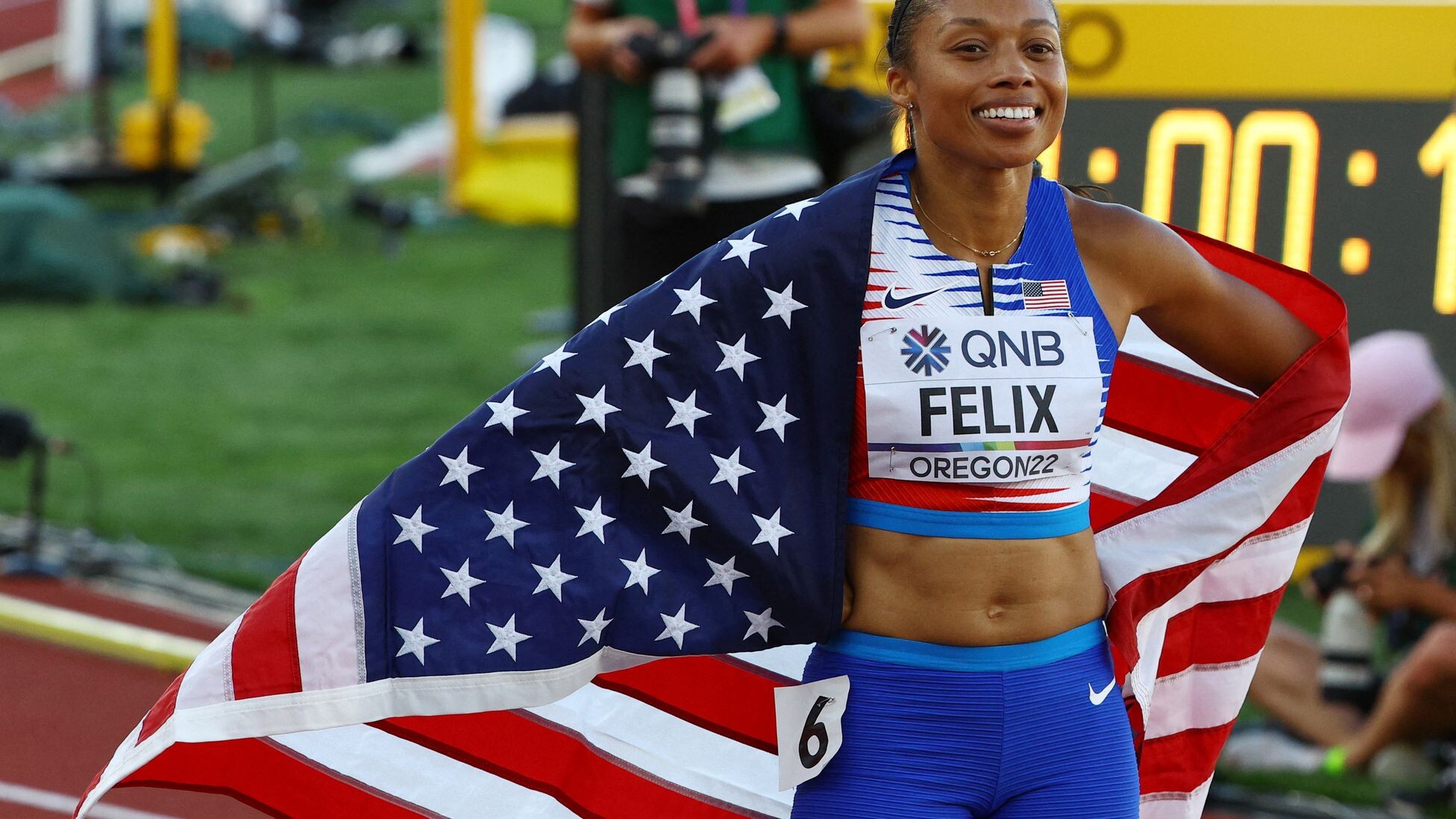
“There was a moment when I could hear all the cheers. I felt joy tonight,” she said. “I just looked around. I was just taking it in. It’s the last time.”
Despite losing, Felix’s teammates were gracious. The media didn’t ask any of them about their personal races, their personal stories, only Felix. The man with the fastest split of anybody in the race, Vernon Norwood, said, “This bronze medal feels like it’s a gold medal since it’s her last.” Teammate Elija Godwin, the second fastest split in the race, said, “It feels like we’re part of history to be with her. I really just want my picture with her.” Norwood and Godwin were the only two men to split under 45 seconds in the field.

Everybody thought the Americans would win. They were the fastest team in the preliminary round earlier today and they traded out two of their athletes for others with faster PRs. They led or were in touch of the lead the entire race. They got to compete at a World Championships on home soil for the first time ever. But in the end they fumbled. It was as though it happened all at once: With 20 meters remaining, Team USA’s anchor leg Kennedy Simon visibly grimaced, gritted her teeth, and everybody knew what was going to happen. She tied up and it was like she was moving backward. Two teams got around her. The crowd collectively gasped, went silent for a few moments, then sat back down while the team from the Dominican Republic ran a victory lap.
Team USA’s bronze medal is Felix’s 19th medal at a World Championships, the most of any athlete in history. She’s now won a medal at eight separate World Championships, which is a record. (She used to share it with Ezekiel Kemboi of Kenya with seven.)
The Dominican Republic won the race in 3:09.82, the second fastest time ever. With a very fast anchor leg (48.95) from the Olympic medalist Femke Bol, the Netherlands finished second in 3:09.90, a national record. The U.S. finished third in 3:10.16.
Felix got the baton in first and was 50 meters off the front and everybody was on their feet cheering for her. Today was the closest Hayward Field has ever been to maximum capacity and the volume of the crowd felt historic. It was her final lap, and she was running strong. Then the daydream ended. Halfway through the lap, the Dominican Republic’s second leg, Marileidy Paulino, had reeled in Felix. She blew around her on the final straight, splitting 48.47, the fastest leg of any woman in the field. Paulino’s split would be the second fastest time in the world this year if it were run in an open event.
Felix still split 50.15. She said she was proud. Her daughter is too young to register what she witnessed, but Felix said if tonight could teach her something it’d be that “It’s about being a fighter,” she said. “That’s a spirit I hope she carries over, a confidence I hope she has.”
The other woman on Team USA is 14 years younger than Felix and will probably never forget what she was a part of. Simon is only 22 and this was her first major championship race. She’s still in college at the University of Texas, a world apart from where Felix is now. “This whole season was a gradual progression to me getting here,” she said. “For me to be here… I’m satisfied.”
It appeared like the Americans lost the race in the anchor leg. Earlier in the day Kennedy ran the preliminary round and split 50.64, the second fastest split of any woman in the race. She had roughly eight hours to rest before the gun fired a second time, but appeared tired in the final.
It’s hard to show up once. It’s harder to show up twice. It’s even harder, still, to show up like Allyson Felix has, time and time again.
(07/16/2022) ⚡AMPby Matt Wisner
World Athletics Championships Budapest23
Budapest is a true capital of sports, which is one of the reasons why the World Athletics Championships Budapest 2023 is in the right place here. Here are some of the most important world athletics events and venues where we have witnessed moments of sporting history. Throughout the 125-year history of Hungarian athletics, the country and Budapest have hosted numerous...
more...The second fastest woman in history Elaine Thompson-Herah has signed with Puma, and now wants the world record
Five-time Olympic champion and the second fastest woman of all time has signed a sponsorship deal with Puma Running. Elaine Thompson-Herah, the back-to-back Olympic 100m and 200m champion, will boost the company’s impressive roster of track and field athletes ahead of the 2022 World Athletics Championships in Eugene, Ore.
“Puma just felt like the right fit,” says Thompson-Herah. “The company has been working with the world’s fastest athletes for decades and I can’t wait to be part of such an elite group.”
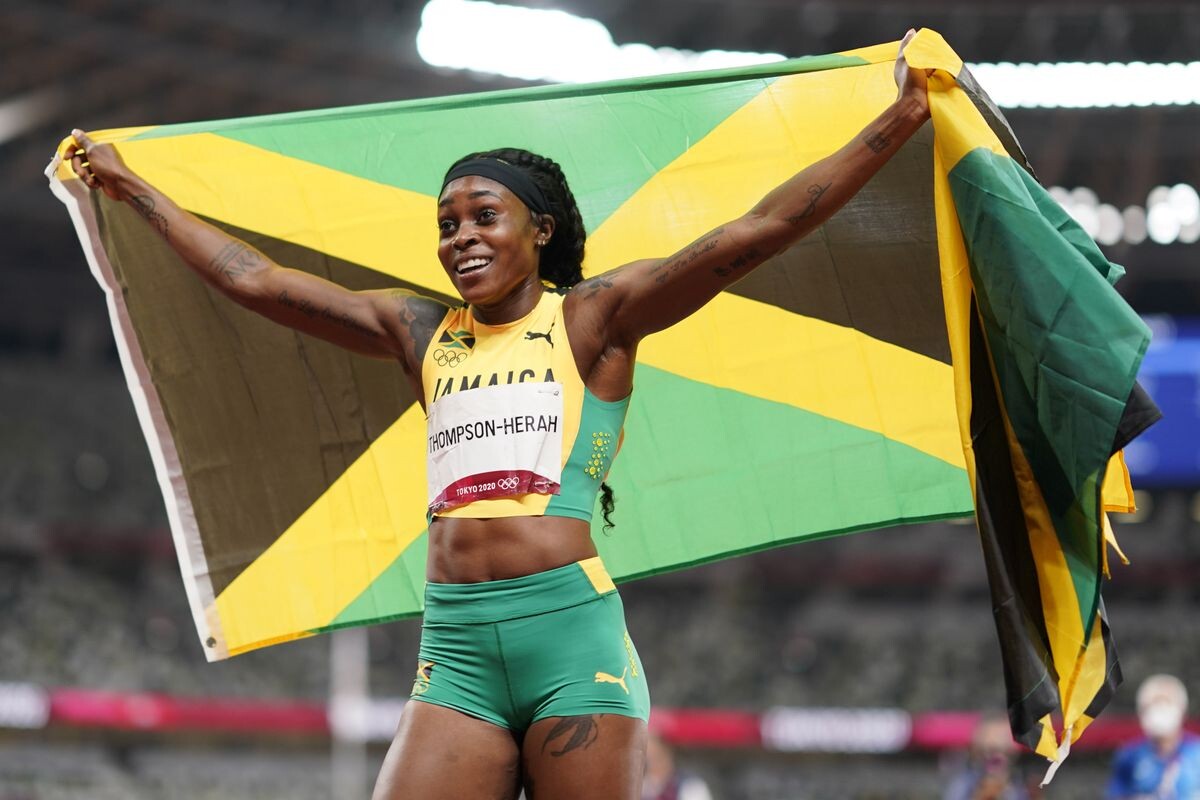
In 2021, Thompson-Herah became the second fastest woman in history when she clocked 10.54 seconds at the 2021 Prefontaine Classic. The 30-year-old Jamaican 100m and 200m record holder spent several years with Nike, and now has her sights set on breaking Florence Griffith-Joyner’s 100m world record of 10.49 seconds from 1988.
“Now is the time to break it,” says the double Olympic champion. “I think there’s still a lot I can unleash.”
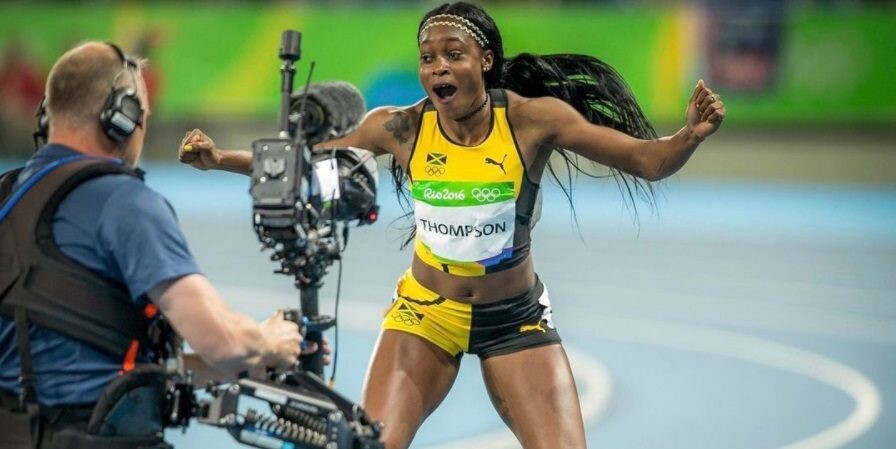
Puma has a long history in the sport of track and field, and has sponsored the Jamaican Athletics Team since 2002. Thompson-Herah now joins her Jamaican compatriot, 100m and 200m world record holder and eight-time Olympic gold medallist Usain Bolt.
Thompson-Herah kicks off her 2022 World Championship campaign on Saturday evening in the women’s 100m heats.
(07/16/2022) ⚡AMPby Marley Dickinson
Should You Cut Caffeine Before A Race?
If there's one thing I know about endurance athletes, it's that we love our caffeine. We love our coffee in the morning, sports nutrition products filled with caffeine to get through tough workouts and races, and a luscious hit of dark chocolate at night. Many of us see caffeine as part of our internal regulation to keep us happy, alert, and running on all cylinders. After all, the very nature of our sport requires us to wake up early in order to jump into a cold pool, pedal on the trainer, or run with a headlamp before the rest of the world gets going. Who wouldn't need a pick-me-up at zero-dark-thirty?
Caffeine might be as essential to the athlete's training regimen as their shoes or their favorite hydration vest. It's the most widely-consumed stimulant throughout the world, found in substances such as coffee, tea, energy drinks, chocolate, and soda. But could that constant daily exposure to caffeine be hurting us on race day?

Many of us know the benefits of caffeine as an ergogenic (work-producing) aid to lessen the perception of fatigue and help with sustained intensity for longer durations. However, if you are a regular caffeine user in your daily life, you've probably been warned that your tolerance reduces its race-day stimulation. A new study by Carvalho et al. (2022) set out to determine if habitual caffeine consumption impacted the overall potential benefits of caffeine for both trained and untrained men and women in differing sport types (endurance, power, and strength).
Caffeine is an effective stimulant because it is close in structure to the compound adenosine, which makes you tired. This similar structure makes caffeine an adenosine antagonist - in other words, caffeine blocks adenosine from attaching to the synapses within the brain that signals sleepiness. Simultaneously, there is an indirect effect on the release of other "feel good" neurotransmitters, including norepinephrine, dopamine, serotonin, glutamate, and perhaps neuropeptides. Because the brain hasn't gotten the message to feel tired, and because it has gotten the message to feel excited, humans feel more refreshed and focused than before we made that Starbucks run.
Within an exercise bout, caffeine has been supported by moderate to high-quality evidence to have acute benefits such as positive work-producing impacts on muscle endurance, muscle strength, and aerobic endurance. However, certain studies suggest that habitual caffeine users negate some of the positive benefits to exercise that occur with caffeine use over time. The most recent study aimed to determine if that was the case by quantifying the amount of research published on habitual caffeine consumption.
Does consuming caffeine daily reduce its effectiveness on race day?
Studies with an intervention had to include acute caffeine supplements (of any kind) before an exercise task compared to a control group without caffeine supplementation while doing the same exercise. Finally, outcomes of the exercise task needed to be evaluated as changes in exercise performance or capacity. After screening, 60 caffeine studies met these requirements and were included in the meta-analysis, which included 1137 participants-84% were male, 718 were trained, and 400 were untrained.
After the statistical analysis, the results suggested a small positive overall effect of caffeine supplementation on exercise outcomes of endurance, power, and strength regardless of regular caffeine consumption, sex, or level of training (trained vs. untrained). In addition, this positive effect only occurred when the acute dose was under 6mg/kg body mass, but not over this amount. This is consistent with previous literature which suggests quantities of 2-6mg/kg body weight are appropriate to produce an ergogenic effect on performance in most athletes.
Additionally, caffeine had this positive work-producing effect regardless of whether the acute dose in the study was higher or lower than the participants' regular daily dose administered caffeine or if the research protocol included a withdrawal period before entering the study. One limitation to these findings was that only 24% (60/246 studies) reported their participant's mean habitual caffeine intake, reducing the impact of these results. Therefore, many studies didn't take this into account and could not be used for the final analysis
Do I need to cut back on caffeine before race day?
While many coaches suggest a caffeine withdrawal period before a big race or endurance event, the results of this study do not support caffeine withdrawal as a necessary or effective method for producing an ergogenic effect during a race. Regardless of habitual caffeine intake or the acute dose ingested, an ergogenic effect was reported so long as that acute dose was under 6mg/kg body mass. As a handy reference, we've included a table below of common caffeinated beverages, sourced from the Harvard School of Public Health.
Conclusions
The long and short of the study is good news for many athletes who are daily coffee drinkers. Anyone who has experienced the side effects of caffeine withdrawal - headaches, drowsiness, impaired concentration, depressed mood, anxiety, and irritability - should be letting out a small cheer right now. The taper period can be hard enough as it is, so there's no need to add caffeine withdrawal on top of that.
To get the most out of your caffeine consumption, it would be a good idea for you to experiment with caffeine in doses of 2-6 mg/kg body weight in training to determine how it impacts you personally. Some athletes feel extra jittery on race day, and this may or may not be a good thing to nail your "A" race. It has been suggested that not all athletes have the same reaction to caffeine, and that genotype may play a role in that response. However, until you know your genotype, working with a sports dietitian and tracking your individual response with varying caffeine levels within the proposed range can help identify a caffeine strategy that offers the most potential performance benefits.
(07/16/2022) ⚡AMPby Trail Runner Magazine
Visa delays end British marathoner's hopes of competing at Worlds
U.K. Athletics has confirmed that Chris Thompson, a 2:10-marathoner from Team GB, will not compete in the World Athletics Championships men’s marathon this Sunday after a significant delay in the processing of his U.S. visa.According to the UKA press release, Thompson had been in close liaison with World Athletics and received some help from the U.K. government to solve a last-minute visa hold-up, however, due to the proximity of Sunday’s marathon, Thompson is unable to travel and compete.
“We are very sad for Chris that he has been unable to travel to Eugene for the World Athletics Championships. We are grateful for the interventions and assistance of World Athletics in attempting to resolve the matter, but time has unfortunately run out,” said Team G.B. Leader, Paula Dunn.
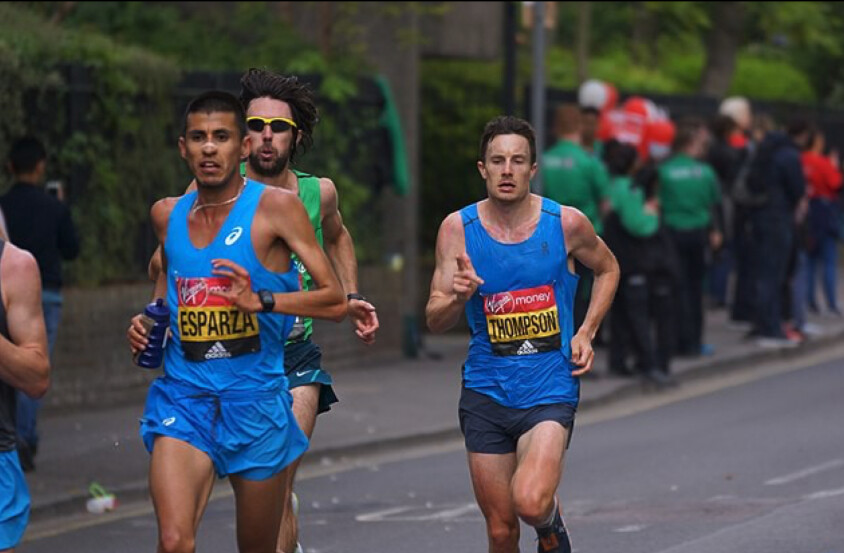
The 41-year-old marathoner was selected to represent Team GB after running a personal best 2:10:21 at the British Marathon Championships in 2021. Last year, Thompson placed 54th at the Tokyo Olympic Marathon in a time of 2:21:29.“I’m absolutely devastated I won’t be in Eugene to compete,” said Thompson in a statement. “This was my major aim for the year and had prepared well for it. I’ll never know what might have been, but I had high expectations of myself going out. It should never have got to this point, and it’s hard to believe it has.” U.S. visa delays have been a common theme at the 2022 World Championships, which has derailed many international athletes’ hopes of competing here in Oregon.
The 2022 World Athletics Championships begin Friday at Hayward Field in Eugene, Ore. All the action in Eugene will be brought to you by Canadian Running and Asics Canada. Follow us on Twitter on Instagram for all things Team Canada and up-to-date exclusive news and content.
(07/16/2022) ⚡AMPby Running Magazine
Obiri, Chelimo will confront Hassan in 10,000m gold rush
Hellen Obiri and Margaret Chelimo, who staged a 1-2 finish in the 5,000m final during the previous 2019 Doha World Athletics Championships, to do battle in the final.
Obiri missed out on a 10,000m medal at the 2019 World Championships and the Olympic Games in Tokyo, finishing fifth and fourth respectively, and has decided to focus on the 25-lap only.
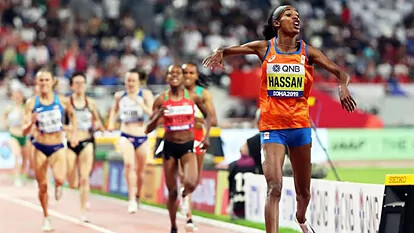
Chelimo hopes to double up in the 10,000m and 5,000m that will begin with the heats on Thursday at 2.25am followed by the final on Sunday at 4.25am.
This year, Obiri won the 10,000m at Kenya Defence Forces and the national trials in April and June respectively. She finished second at Ras Al Khaimah Half Marathon in February in 1:04:22 but won the Istanbul Half Marathon in March in 1:04:48.
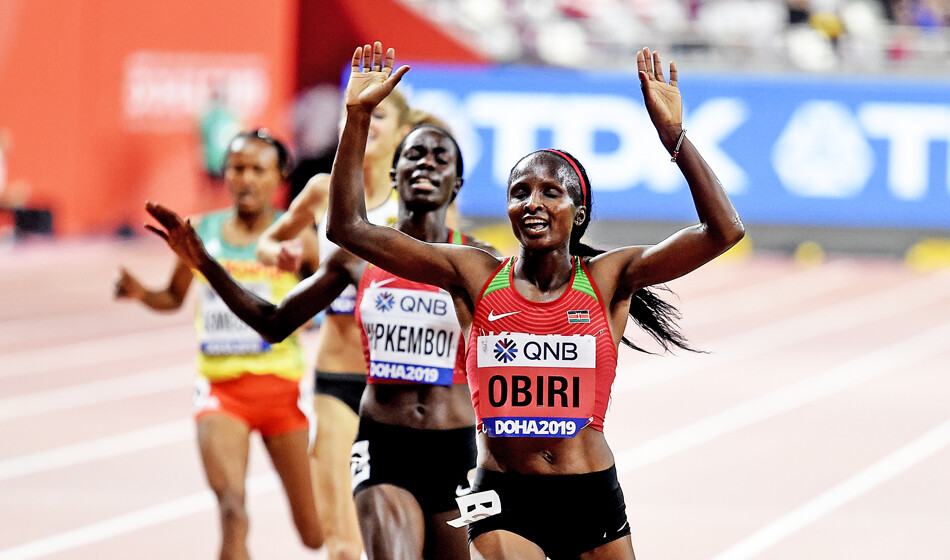
The duo from Kenya Defence Forces will be eying to recapture the title Kenya won last through Vivian Cheruiyot at the 2015 Beijing World Athletics Championships.
The Kenyans have a battle at hand against the Olympic and World 10,000m champion Sifan Hassan from the Netherlands and Ethiopia’s Letesenbet Gidey, the world record holder in both 10,000m and 5,000m.
The Dutchwoman wrestled the 1,500m title from Kenya's Faith Chepng'etich before sealing a double with victory in 10,000m at the 2019 World Championships in Doha.
The 29-year-old would march on to 5,000m and 10,000m gold and 1500m bronze at last year’s Olympic Games.
It's Chepng'etich who halted Hassan's march for the historic hat-trick in Tokyo.
Hassan had not competed this year until a return on July 8 when she won the 5,000m race at Stumptown Twilight Meet, Griswold Stadium, Portland in 15:13.41.
If Hassan wins, she would become only the second woman to successfully defend the title, after Ethiopia’s Tirunesh Dibaba, who achieved the feat in Helsinki in 2005 and Osaka in 2007 – and who also triumphed in Moscow in 2013.
Cheruiyot won the title in 2011 and regained it from Dibaba in 2015.
Gidey, the Ethiopian who obliterated Hassan’s two-day-old world record of 29:06.82 with a stunning 29:01.03 in Hengelo in June last year, has the best finishing kick alongside Obiri.
In Doha in 2019 and in Tokyo last year, Gidey failed to halt Hassan’s dream for victory, taking silver and bronze respectively.
(07/15/2022) ⚡AMPby Ayumba Ayodi
I will forget everything and focus on the finish line, says Ferdinand Omanyala after finally landing visa hiatus
African record holder Ferdinand Omanyala says the visa hiatus that has rocked his boat towards the World Athletics Championships in Oregon will not deter his determination and has vowed to give his best once he lands and sets his spikes on the starting blocks in Eugene.
Omanyala received his US visa late Thursday morning, slightly over 24 hours before the heats of the 100m gun off in Eugene. Athletics Kenya has managed to secure a 6pm flight for his departure from Nairobi, arriving in Oregon 4pm Friday, two hours and 40 minutes before race time.
“First of all it is a relief. It has been a tough last few days. The first target now is to get there on time, hoping there are no more issues along the way. I want to thank everyone who has worked hard to see this possible. At some point yes I thought it was never going to happen but I always felt that a breakthrough would come,” Omanyala told Capital Sport.
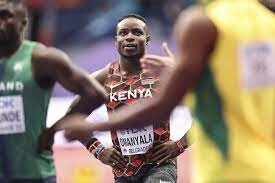
“I would like to thank the President Uhuru Kenyatta, the Government through the Ministry of Sports and CS Amina Mohamed and PS Joe Okudo for all the effort they put to ensure that I get both the US and UK visas despite everything that was going on,” Omanyala added.
He also says; “She (CS Amina) has been working from last night to have this done and I want to thank her so much. I also want to thank the US embassy for expediting. I am sure they did this out of a clean heart.”

He adds; “I hope to get there on time and once I step on the blocks, I will give everything to be on the finish line. Yes it has been tough but it has not deterred my focus. I will use this as a stepping stone to give me more strength for the race.”
The 26-year old has been booked a business class seat to ensure he gets as much comfort as he needs and gets to Eugene a bit better than if he had been on an economy seat.
Though he believes it is a tough call for him to be at the blocks fresh, he hopes for the best.
“It is a challenge of course, to ensure that I have shaken off the jet lag and all. But I thrive under pressure and I love challenges. I am sure I will get over this,” he added.
Omanyala is the third fastest man in the world this year, having clocked 9.85secs to win the Kip Keino Classic in May.
(07/15/2022) ⚡AMPby Timothy Olobulu
World Athletics Championships Budapest23
Budapest is a true capital of sports, which is one of the reasons why the World Athletics Championships Budapest 2023 is in the right place here. Here are some of the most important world athletics events and venues where we have witnessed moments of sporting history. Throughout the 125-year history of Hungarian athletics, the country and Budapest have hosted numerous...
more...Tips for older runners to minimize aches and pains, stay safe, and have fun
So you want to start exercising more after a lifetime of cubicle-dwelling, and have settled on the sport of millions: running. Congrats — it is great exercise, and it can be very rewarding.
But please — if you’re over 50-something, or even younger and truly out of shape — do not simply lace up an old pair of sneakers and charge out the front door.
First, run the idea past your primary-care doctor. A physical exam may identify cardiac issues or other limitations that warrant trying a different form of exercise, instead.

And even after you obtain a clean bill of health, there are practical considerations to keep in mind. We spoke with Joseph Daigneau, owner of Persevere Physical Therapy in Philadelphia, and Dave Welsh, owner of South Jersey Running Co., for tips on how to stay safe, avoid frustration, and above all, have fun.
1. Where to run
One of running’s appeals is that no special facilities are required. Still, it is wise to choose a location carefully, especially as you get on in years.

Among the pitfalls: Older folks may not pick up their feet as high as younger people, Daigneau says. If you run on the sidewalk, beware of cracks and uneven pavement that can send you sprawling.
The same goes for running on grass. The forgiving surface may be more appealing than concrete. But for those who are less able to react quickly, hidden dips and depressions can result in a fall or sprained ankle.
A better choice may be a good paved trail in a park. Welsh recommends a high-school track, changing directions periodically or staying in the outside lanes in case the tight turns cause muscle strain.
Yet another option is to run in the street — but in that case, be aware of point number 2:
2. Seeing and hearing
In many states, including Pennsylvania and New Jersey, traffic laws dictate that if sidewalks are available, runners and other pedestrians must stay out of the road. If you must run in the street, stay on the left-hand side, facing traffic. That way, you can see oncoming motorists and get out the way, if necessary.
Above all, don’t assume that drivers can see you. It’s no secret that some people glance at their phones while behind the wheel, or even send a text, despite laws that prohibit it.
If running after dark, wear reflective gear. Many running shoes have shiny logos that reflect vehicle headlights, but that isn’t enough. Consider wearing a vest or light jacket with reflective material.
And resist the urge to wear headphones, lest you fail to hear traffic. That goes double for older people, many of whom have a hearing loss. Consider running with a partner so you can look out for each other, or even a group affiliated with a running store. There is safety in numbers; plus, it’s more fun.
3. Start slow
If you have not exercised in a while, the joints are going to be a bit creaky. Start slow. If running seems daunting at first, feel free to walk, instead.
Daigneau tells novice runners to start by making sure they can walk for 30 minutes with no pain. Then they can graduate to a combination approach: repeated cycles of six minutes of walking followed by four minutes of running at a moderate pace. If you complete five of those repetitions (50 minutes’ worth), that amounts to 20 minutes of running — a respectable goal.
Even after you build up strength and endurance needed for sustained running, there always will be aches and pains. That is true at any age.
The key is to distinguish between regular soreness and the type of pain that suggests you are overdoing it. Daigneau says that if soreness persists beyond two or three days, it’s time to dial it back.
Sudden, sharp pain also is a red flag. When in doubt, stop. Don’t be reluctant to seek medical attention.
4. What to wear
At any age, a runner’s most important purchase is a good pair of shoes. The topic merits an entire article, but at a minimum, keep these tips in mind:
Running shoes generally should be at least a half-size larger than other footwear, Welsh says. That’s because a runner’s feet and toes swell during the course of a run, and they also spread out each time the shoe hits the ground. A bit of extra space is essential.
Older runners may like a shoe with more cushioning, but the most important attribute is a good fit. A trip to a store with trained salespeople is a smart idea.
The shoes can be pricey, sometimes running more than $100. If that’s too steep, ask whether the store has older models at clearance prices.
(07/15/2022) ⚡AMPby Tom Avril
Why run tall is bad advice, the connection between correct running posture, glute activation and quad dominance, explained
You may have heard a lot of advice to keep your shoulders back when you run, or to be mindful of having good posture, or to “run tall.” This advice sometimes even comes from seemingly well qualified people, but it’s based on a fundamental misunderstanding. The best posture for running is with a slight forward lean, which engages your glutes–the body’s largest and strongest muscles and the source of running power.
You may also have heard a lot of advice about “activating your glutes” when you run. This is good advice–but it’s not something you need to do consciously, as long as you’re running with a slight forward lean, as movement expert Jae Gruenke explains in the video.
Moreover, the advice to strengthen your glutes is of little value if you are not running in such a way that your glutes are engaged.

Running with a very upright posture means your weight is too far back for powerful running, and is likely to result in your becoming a “quad-dominant” runner, i.e. a runner who is mostly using their quads, at the expense of their glutes and hamstrings, when they run. (This may also be associated with knee pain, lower back pain and plantar fascia issues, according to Gruenke, who frequently sees this in her practice.)
You may feel like your running is fine, but your quads are likely often sore after a long or hard run, and you are probably not running as powerfully (or as fast) as you could be, even at lower efforts. Moreover, the advice to activate your glutes will seem mysterious, since it’s impossible to do if you’re not leading with your head and chest. (And you do not need to consciously contract your glutes in order to activate them.) Running with a slight forward lean will also greatly improve your ability to run uphill.

The problem, Gruenke explains, is the assumption that leaning forward when running tilts your pelvis in a way that makes it difficult to engage your glutes; but that assumes that your muscles function the same way when you’re standing, sitting or performing a deadlift as when you’re running, which is not the case. In fact, you must tilt your pelvis forward in order to engage your glutes when running, and take the full load off your quads.
One way to test this is to stand with your knees slightly bent, feet slightly apart, in a forward-leaning position, and hold it for a couple of minutes; you will soon feel your glutes working.
If you’ve ever watched champions like Jakob Ingebrigtsen or Timothy Cheruiyot run, you’ll see the forward lean in action. (It’s not a coincidence that they usually dominate in races!) Granted, they’re running much faster paces than the average runner, but the principles are no different.
(07/15/2022) ⚡AMPby Anne Francis
Visa issues cause headaches for hundreds of athletes and officials at track world championships
100-meter sprinter Ferdinand Omanyala is expected to land in Oregon about three hours before his first heat Friday
Kenya's Ferdinand Omanyala is one of the fastest men in the world at 100 meters, the rare African sprinter who could medal this weekend at the 2022 track and field world championships in Oregon.
But first, he has to make it there – and that's proven to be anything but simple.
Omanyala is one of the hundreds of international athletes and officials who have encountered visa issues ahead of the world championships at Hayward Field, leaving them frustrated, frazzled and, in many cases, racing just to make it to the start line.
The issues appear to stem from poor communication, applications being filed too late and general backlogs at U.S. embassies, where athletes must schedule an appointment and interview in order to obtain a temporary visa.
"This is ridiculous!" retired U.S. sprinting star Michael Johnson wrote on Twitter. "It’s been known US entry visa may be one of the most difficult and (World Athletics) and the organizing committee didn’t get ahead of this?"
World Athletics spokesperson Nicole Jeffery told USA TODAY Sports in an email that, as of Thursday, 374 visa cases involving athletes or officials had been flagged to a joint committee consisting of local organizers, World Athletics and the U.S. Olympic and Paralympic Committee, who have worked to help speed up the process.
About 73% of the cases have been resolved, Jeffery added, leaving a little less than 100 still in various stages of the process.
"We continue to follow up with those outstanding visa issues," World Athletics said in a statement. "International travel in general has become more challenging due to the pandemic and we are extremely grateful for the help and experience of the USOPC in helping to resolve issues that have come up in Omanyala, who has recorded the third-fastest time in the 100 this year, is perhaps the most high-profile athlete who has been impacted. His manager, Marcél Viljoen, told USA TODAY Sports that the 26-year-old has been "frustrated and disappointed" while working to obtain his visa, which he finally did Thursday morning in Kenya.
Viljoen said Omayala is now scheduled to arrive in Eugene, Oregon about three hours before his first heat Friday.
"I want to thank everybody who has worked around the clock to ensure I get my visa," Omanyala told the BBC.
"There's nobody to blame here. It's the system, how it works. You cannot force anything."
Nearly a dozen athletes from South Africa have also encountered visa issues, according to South African media outlet Independent Online, as have athletes from India, Iran and Jamaica, among others.
"Missed out on representing Libya at Worlds because my Federation couldn’t get visas," sprinter Ahmed Amaar wrote on Twitter on Monday. "Representation matters and with no support from (World Athletics) there can be no development for smaller Nations."
Inocencio added that he was surprised to encounter logistical issues like this given the United States' size and reputation. He hopes it might serve as a learning moment before the nation hosts the Summer Olympics in Los Angeles in 2028.
In the meantime, athletes whose travel plans have been disrupted – but not completely derailed – by visa delays can only try to make the best of a stressful situation.
"We (are) finally going, although some of us are going to arrive on the day we racing," South African sprinter Gift Leotlela wrote on Instagram. "We will fight and represent our country with Pride and honour."
(07/14/2022) ⚡AMPWorld Athletics Championships Budapest23
Budapest is a true capital of sports, which is one of the reasons why the World Athletics Championships Budapest 2023 is in the right place here. Here are some of the most important world athletics events and venues where we have witnessed moments of sporting history. Throughout the 125-year history of Hungarian athletics, the country and Budapest have hosted numerous...
more...Pick up your pace with a ladder workout, add some variety to your interval sessions while boosting speed
Ladder workouts are beautifully simple and can be adapted to any training plan. You can run them outside, take them to a treadmill, or make them into a track or stair workout. The concept of a ladder is simple: each interval gets either longer or shorter (or both), as if you’re climbing up or down rungs. Once you’re familiar with the layout of ladder workouts, they can be fairly simple to create and tweak on your own depending on your running needs. Here are two basic ladder workouts that build on increasing speed.
45-minute ascending ladder workout

10 minutes easy running
10 minutes at half-marathon pace
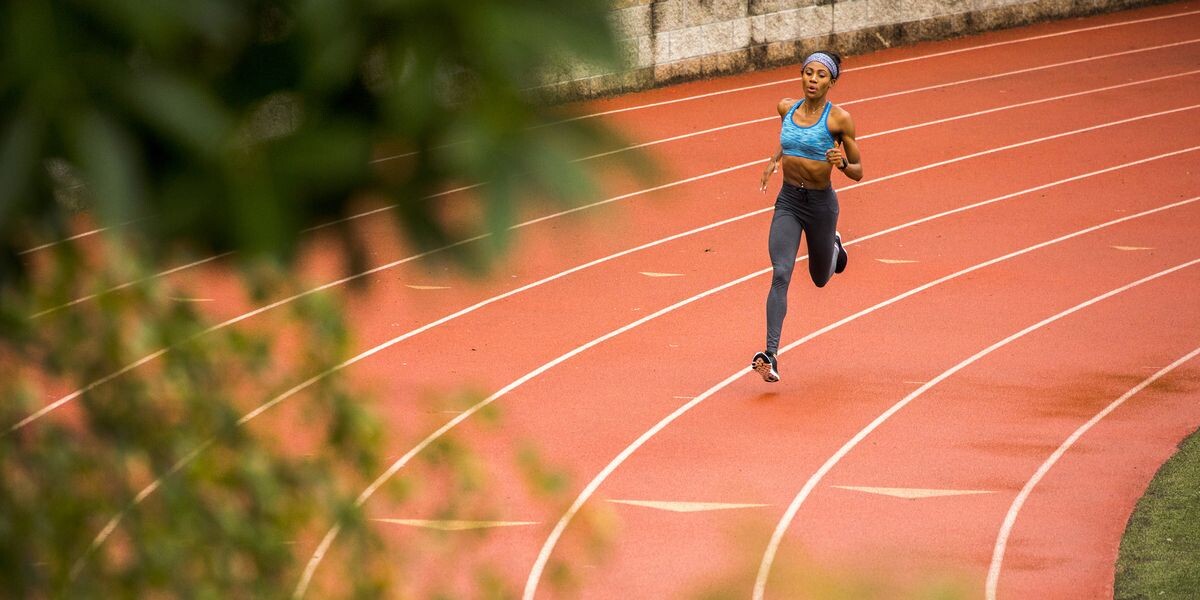
15 minutes at 10K pace
10 minutes easy running
8-kilometer track ladder workout
1,200 meters easy running
800 meters at 10K pace
1,200 meters at 5K pace
1,600 meters at 3K pace
1,200 meters at 5K pace
800 meters at 10K pace
1,200 meters easy running
Once you’ve mastered these ladder sessions, you can tweak the workouts to make them more challenging by increasing the pace in each portion, the distance (or both, if you’re really ready for a challenge). Remember to follow a speedwork session with any easy or recovery running day, and hydrate well.
(07/14/2022) ⚡AMPby Keeley Milne
Conseslus Kipruto leads Kenyan quartet in quest for steeplechase gold
Kenya's dominance in the 3,000 metres steeplechase faces a stern test when the World Championships start on Friday in Oregon, USA.
Defending champion Conseslus Kipruto, Olympic Games bronze medallist Benjamin Kigen, 2017 World Under-18 2000m silver medallist Leonard Bett and Commonwealth Games silver medallist Abraham Kibiwott are carrying the nation's hopes of keeping the title the country has won in every World Championship since 1991 except in 2001 and 2005.

Kenyan-born Qatari Saif Shaheen, who holds the world record of 7:53.63 in the race, bagged gold in 2001 Saint-Denis and 2005 Helsinki World Championships.
Bett and Kibiwot are in the first heat where they will be seeking to make the final scheduled for Monday.
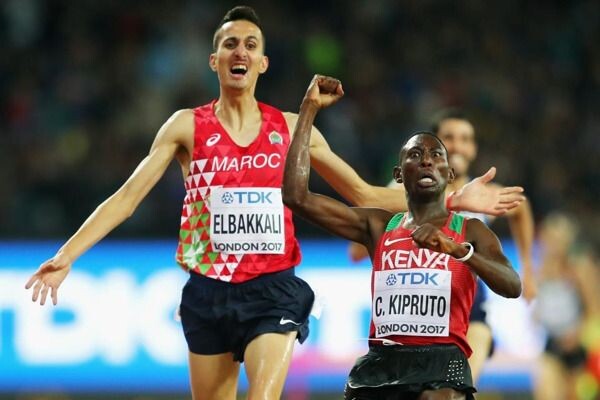
The top three athletes in each semifinal plus the six fastest losers will qualify for the final.
Bett and Kibiwott face an uphill task as they face Olympics champion Soufiane El Bakkali from Morocco in the first heat. Bakkali has a personal best time of 7:58.15 which is also the world-leading time.
Bett told Nation Sport that the plan is to safely navigate through the heats before they can hatch a plan on how to claim the medals in the final.
“We started our preparations early by joining the camp before the trials because the initial plan was to make sure we tackle the stiff competition especially from the two athletes (Girma and Bakkali) who have been on top form this season," said Bett.
“I won’t tell you who will win the gold medal but we have to work as a team to make sure we redeem our name as a country,” added Bett.
The second semifinal will see the Kipruto square it out with Ethiopia’s Lamecha Girma, whom he narrowly beat during the 2019 World Championships in Doha, Qatar.
Djibouti’s Mohamed Ismail, Canada’s Ryan Smeeton, USA’s Hillary Bor are also in the field.
Kigen, Ethiopia’s Hailemariyam Amare, Tunisia’s Mohamed Amin, USA’s Evan Jager, Norway’s Jacob Boutera are in Heat Three.
Kipruto, who has been battling injuries after his triumph in Doha in 2019, is seeking to atone for lost time after missing the Olympic Games last year.
Kipruto finished fifth during the Athletics Kenya Track and Field Championships which acted as the trials for the Africa Senior Championships after clocking 8:32.24, before emerging in the same position during the Kip Keino Classic in Nairobi last month.
“Kenyans should not be worried because this is a championship and you can’t compare it with the Diamond League races. It will be a tight contest in the final and I will be doing my best to make sure we bring back our glory as Kenyans,” Kipruto had said in an earlier interview before leaving for Oregon.
In the 2019 worlds, Kipruto won gold in 8:01.35 ahead of Girma who clocked 8:01.36 while Bakkali settled for bronze in 8:03.76.
(07/14/2022) ⚡AMPby Bernard Rotich
World Athletics Championships Budapest23
Budapest is a true capital of sports, which is one of the reasons why the World Athletics Championships Budapest 2023 is in the right place here. Here are some of the most important world athletics events and venues where we have witnessed moments of sporting history. Throughout the 125-year history of Hungarian athletics, the country and Budapest have hosted numerous...
more...Three ways for a beginner to improve your form
Everywhere you read, someone is trying to give you advice. It’s easy to get confused about what you should and should not focus on. You’ll still want to make sure you are practicing good habits early on, as you will find it’s the easiest way to improve. Practicing bad habits will only slow down your progress and make it harder to work on your form later.
Here are three easy ways to improve your form:
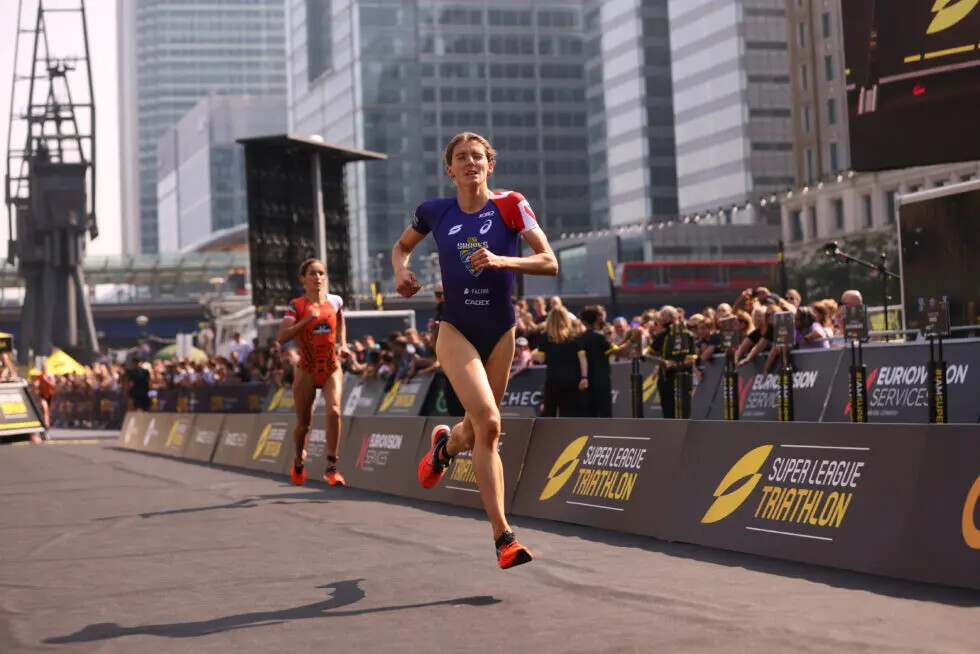
1. Relax your upper body
You are not sprinting, so there’s no need to tense up your upper body. When you relax your shoulders and arms, you’ll expend far less energy than running tensed up. If you are having trouble doing this, try running while holding raw (or imaginary) eggs. The relaxation needed in your hands will prevent you from tensing up the rest of your upper body.
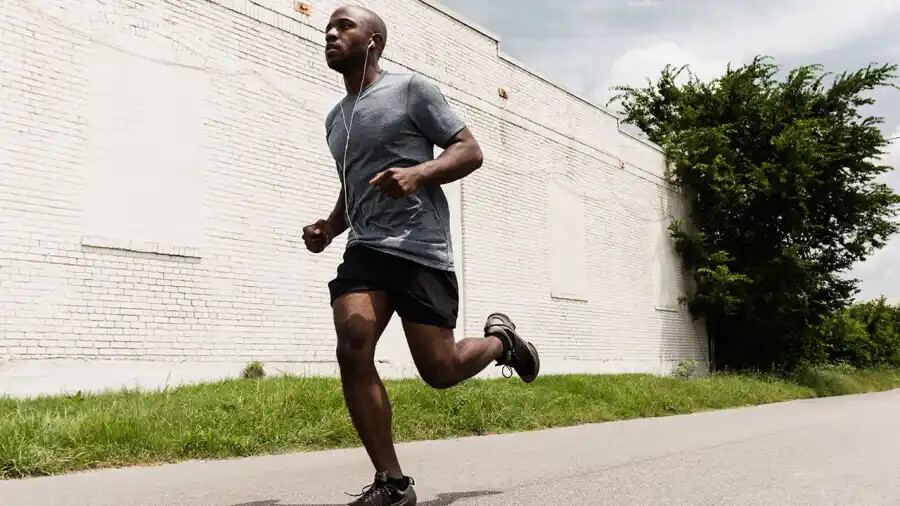
Training yourself to run relaxed and in a way that you can maximize forward movement (without bouncing up and down or shifting your weight excessively from side to side) can help you maximize your potential to run faster.
2. Focus on your breathing
Breathing might be the most important thing that can influence your performance. Practicing breathing techniques in the early stages of learning can help runners maximize their oxygen intake and remain relaxed. The general rule of thumb for distance running is to breathe normally, whether you naturally breathe in through your nose and out through your mouth, or whether you mostly breathe through your mouth. The more you practice your breathing during exercise, the easier you’ll find it to get into a rhythm on your run.
Focusing on your breath can also help your body remain relaxed for the long haul and keep your form intact.
3. Pick up your feet
A bad habit you commonly see in new runners is the dragging of the feet. When runners drag their feet, they put more pressure on their knees during each stride. Try opening up your stride, and instead lift one foot over the other (like you are climbing a small ladder). This technique puts your centre of gravity at the hips, glutes and core, therefore, you will naturally generate more power on each step.
If this technique feels awkward at first, throw your pace out the window and focus on getting more comfortable bringing one foot over the other.
These three easy tips on running form are bound to make you a better, stronger and faster runner within weeks.
(07/14/2022) ⚡AMPby Running Magazine
Joshua Cheptegei is set to defend his world title at Oregon
Cheptegei, 25, currently holds the 5000m and 10000m world records, the Commonwealth double and the 5000m Olympic title, will also hope to wrestle the 5000m title from Ethiopian Edris Muktar.
Now Cheptegei, who is bidding to defend his world title over the 25-lap distance, will lead Africa’s quest for glory on the west coast of the USA.
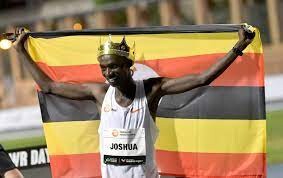
Silver medalist over the same distance at the Tokyo 2020 Olympics last August, Cheptegei’s title defence will be backed up by Stephen Kissa and world half-marathon champion Jacob Kiplimo on Sunday.
There are others like Kenyan Timothy Cheruiyot will face stiff competition from Norwegian Jakob Ingebrigtsen over the 1500m distance.
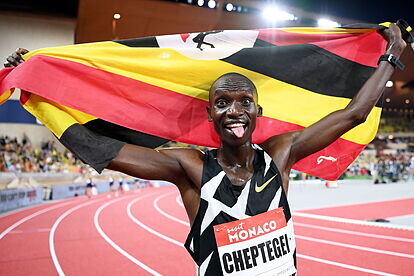
Other African stars set to bid for glory include South African sprinter Akani Simbine, Olympic 1500m champion Faith Kipyegon, Burkina Faso’s world triple jump bronze Hugues Zango among others.
According to World Athletics, 37 of the 43 individual winners from Doha will aim to defend their titles in Eugene.
Besides the champions from Doha, 42 individual gold medal winners at the Tokyo 2020 Olympics are in Eugene too.
TEAM UGANDA TO OREGON WORLDS:
Women: H. Nakaayi (800m),
W. Nanyondo (1500m),
P. Chemutai (3000m Steeplechase),
E. Chebet (5000m),
M. Chelangat (10000m),
S. Chesang (10000m),
I. Chemutai (Marathon)
Men: T. Orogot (200m),
R. Musagala (1500m),
P. Maru (5000m),
O. Chelimo (5000m),
J. Kiplimo (10000m),
S. Kissa (10000m),
J. Cheptegei (5000m & 10000m),
F. Chemonges, F. Musobo & J. Kiprop (Marathon)
That starts with Japanese Toshikazu Yamanishi who will attempt to retain his 20km race walk final on the morning programme of Day 1 action tomorrow.
(07/14/2022) ⚡AMPby Allan Darren Kyeyune
World Athletics Championships Budapest23
Budapest is a true capital of sports, which is one of the reasons why the World Athletics Championships Budapest 2023 is in the right place here. Here are some of the most important world athletics events and venues where we have witnessed moments of sporting history. Throughout the 125-year history of Hungarian athletics, the country and Budapest have hosted numerous...
more...Five basic types of runs all runners need
If you want to be a better runner, you can’t just go out and run for as long as you can or as fast as you can. Well, you may be able to improve to a certain extent, but if you want to bring your running performance to the next level, you should incorporate these 5 basic type of runs into your training. Yes, as simple as it sounds, this is the secret to becoming faster!
#1 The Recovery Run
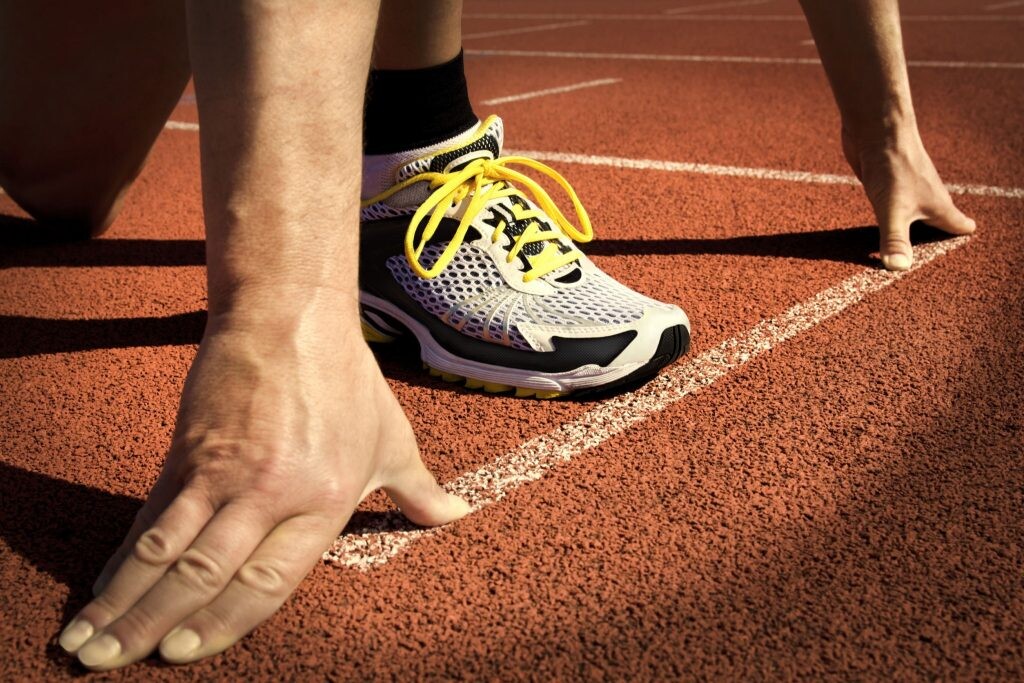
Recovery here actually means recovery! Just to give you a rough idea of what the recovery run means – the Kenyans know how to train hard, but also know how to recover well. They start off their recovery runs at a 6min/km pace and end at a 5min/km pace. Bear in mind this is given their 3.30min/km tempo run pace. This probably gives you a gauge on how slow a recovery run should be. Recovery runs may seem painstakingly slow, but that is the point of the run – to recover, not to make yourself more tired.
#2 The Tempo Run
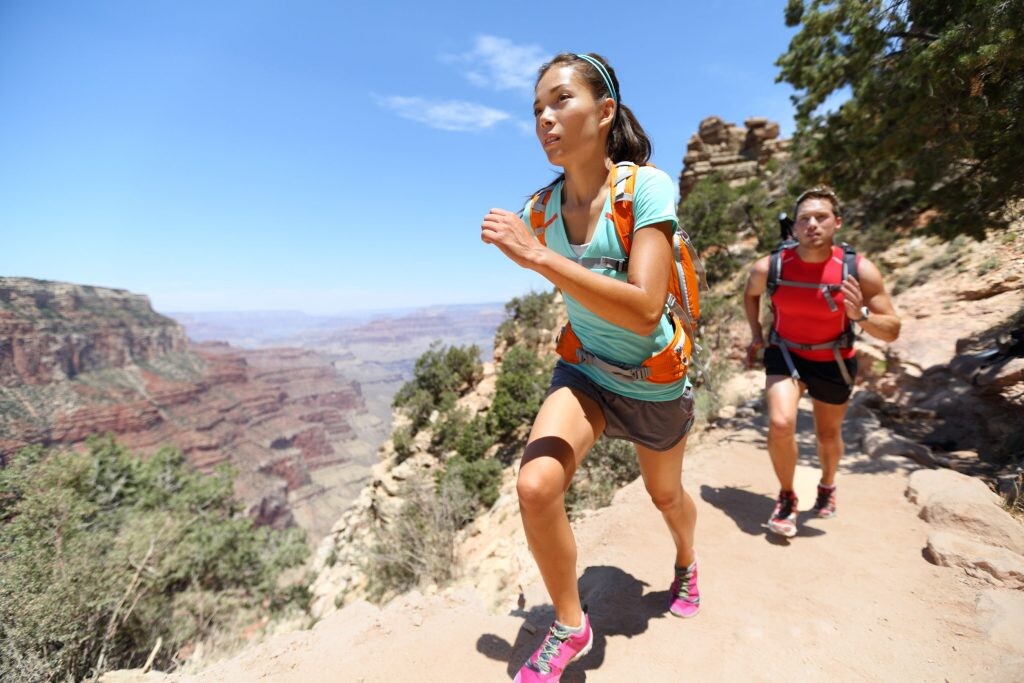
This is often described as comfortably hard. This means running at a sustained effort at what is known as the lactate threshold intensity. In short, lactate threshold is a point where lactate starts to increase exponentially in our muscles. When lactate starts accumulating in our muscles, there will come a point whereby our muscles start to fatigue and can no longer sustain a particular speed. The tempo run serves to tackle this and increase your lactate threshold. To find your tempo pace, add roughly 15 seconds to your recent 10km race pace! Remember this just gives you a gauge. There is no right magic number. Run at this pace for a time of 20 minutes, and voila you’ve got a tempo run in.
#3 Speed Intervals
This is often described as running above your red line. You will come out gasping for air. I guess you could call this uncomfortably hard. You run for a short intense period, then have a short recovery time before going out full force again. You will have to learn how to deal with the pain. This workout trains your speed, fatigue resistance and pain tolerance. An example of this would be doing 400m x 12 sets at every 3 minutes.
#4 The Long Run
The long run has been the staple of every long distance runner’s training plan. It is advocated as the method to train your aerobic capacity, also known as raw endurance. It’s not difficult to grasp this concept, just run a long distance 15 – 20km at a rather comfortable pace. You should be able to hold a conversation at this pace. The long run aims to train your body to draw energy from other sources other than blood sugar which is especially important in the marathon event. It also gives you a confidence boost to complete a long distance race.
#5 Hill Repeats
This is the secret to being a fast runner. This is what will make a difference between a great runner and a regular one. Hill repeats allow you to build power, physical strength and mental strength. It is going to hurt, but that pain tolerance is what’s going to make you a better runner. Pick a short segment of a hill, and tackle it as hard as you can.
Now you know what to do. Grab your running shoes, mix it up a little and hit your personal bests!
(07/13/2022) ⚡AMPby
Why hiking may be your best cross-training tool
Many of us head out of town whenever we get the chance, spending time alone or with family in whatever type of wilderness is close by. A change of pace can feel rejuvenating, and research says being in nature can have a positive effect on our mental health and cognition. Hiking is perfect for cross-training or easy-day exercise; here are a few ways that heading to the mountains will improve your running.
It has many of the same training effects as a recovery run
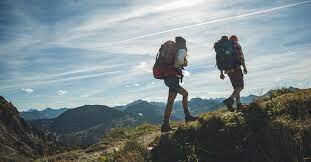
An easy-to-moderate hike will keep your heart rate low–the equivalent of a Zone 1 or 2 workout. When tackling a steep climb or hiking fast, you’ll definitely be getting the equivalent benefit of a running workout on the flat, though it will feel quite different. If you’re hiking on an easy or recovery day, make sure to keep the climb or terrain at an easy level to avoid overtraining. If you’re on a family trip, unable to fit in a hard run but can easily get out the door with your people for a swift hike, don’t worry: you’re getting a great workout, and potentially lessening the chance of injury by switching up your routine. Hiking, while giving similar aerobic benefits to running, avoids the repetitive motions of running, giving your body a break. You’ll be sore in all kinds of new places, and that’s a good thing.
You’ll incorporate hill training (and enjoy it!)
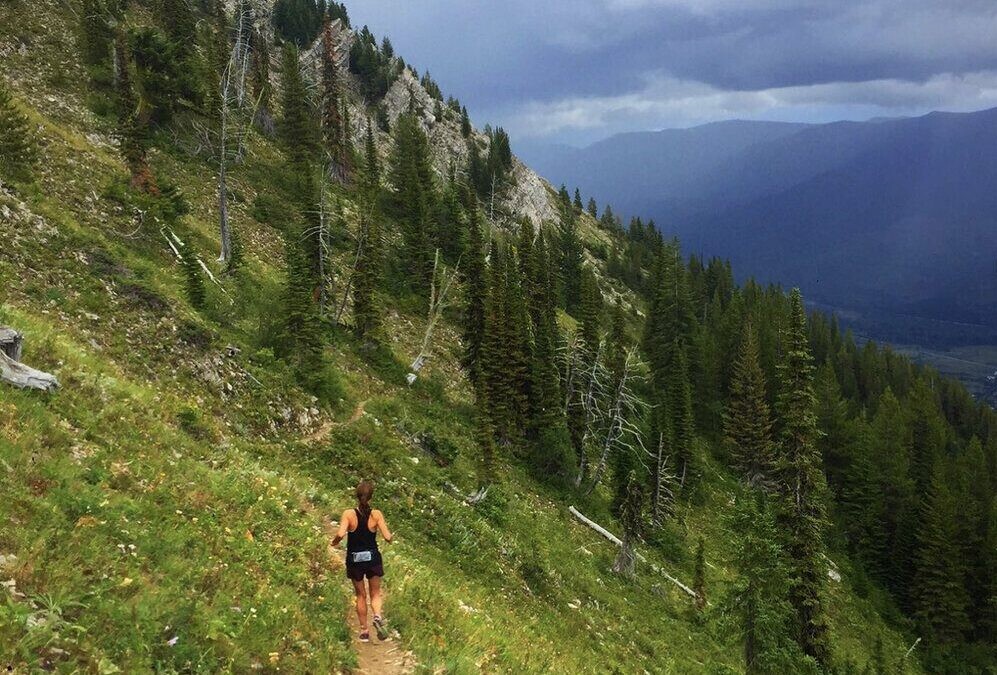
As you climb on your hike, you won’t have to think about activating your glutes–they’ll definitely be engaged. Descending on your hike will use your quads, which we often neglect in running workouts but are essential if you ever encounter a race course with a net downhill. Anyone who has ever run a race with a lot of hills will reiterate this: it’s the downhill, not the climbing, that hurts. Hiking is a brilliant way to get the benefits of going both up and down hills, and you’ll be so busy enjoying the views and soaking in the surroundings that you’ll hardly notice the effort.
Leg strength, core stability and stabilizer muscles all get a workout
Hiking is underrated for runners; many of us dismiss it as being too leisurely. In fact, it can be the perfect complement to almost any training regime because it lets you add mileage without the repetitive stress on your body. While we know running is actually good for our joints, doing the same impactful action over and over can cause stress injuries if our structural tolerance isn’t high. Hiking is gentler on our bodies and cues different muscles than running.
Core muscles kick in as we shift from one foot to the other; moving more slowly engages different and more diverse systems than when we are pounding out an interval session. The uneven terrain on most trails strengthens the stabilizer muscles in our ankles and feet, which carries over perfectly to our next fast run and might prevent a rolled ankle.
If you’re headed into the great outdoors to enjoy a hike, remember to let people know where you are going and how long you expect to be gone, and, depending on your location, be aware of bears and cougars.
(07/13/2022) ⚡AMPby Keeley Milne
Peter Mwaniki Njeru sets new course record at the KATA 10k Time Trial clocking 29:00.9
Peter Mwaniki Njeru used his international experience to produce scintillating performance at the Kenyan Athletics Training Academy (KATA) 10 Kilometres monthly time trial held in Thika Kenya on Wednesday morning (July 13).
Njeru bounced back to victory and chalked new course record of 29:00.81 to surpass his previous mark while his namesake Peter Wanyoike, the winner of the last four editions, also beat his personal record after timing 29:18.88, eclipsing his time of 29:53.19 attained last month.
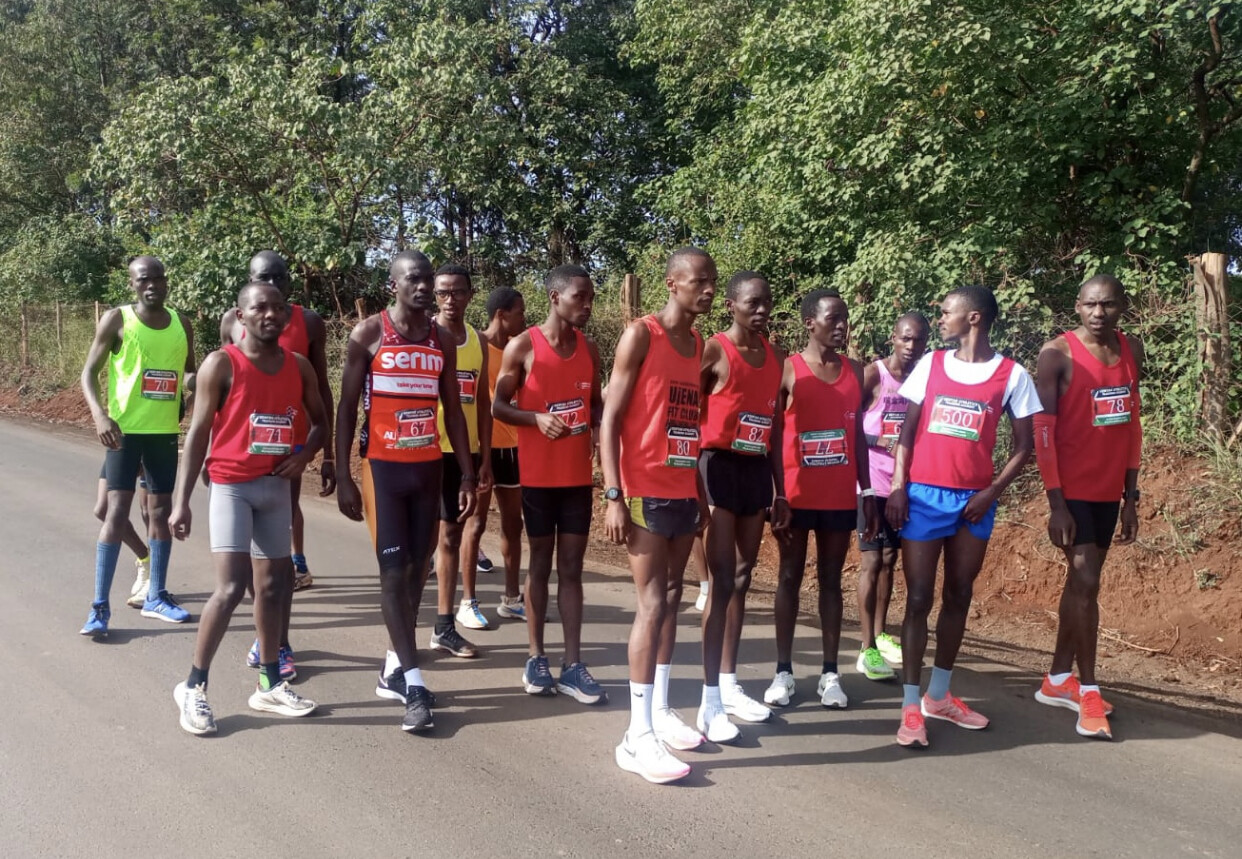
The victory, coming soon after the winner resumed his training after competing in Europe, aided the champion to focus on the programe for faster times in August.
“I was just testing my body after doing good loading the last two weeks. I know I will do better in my next races,” said Njeru, whose races are centralized in Italy.
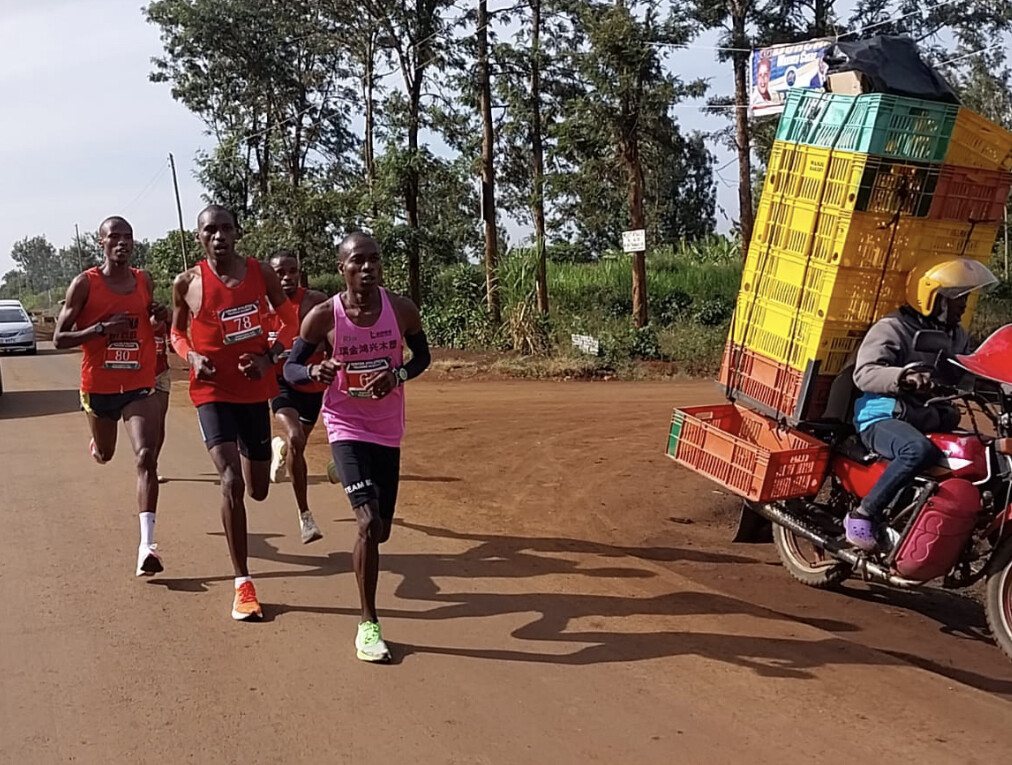
The monthly time-trial also ushered in newcomers KepharNamtala from Nyahururu and Evans Kiguru of Murang’a who clocked 30:29.6 and 30:40.4 and finished 3rd and 4th respectively during the event held on a five kilometres paved stretch of road not far from KATA.
In the absence of consistent and regular Zakariah Kirika, rising star Nicholas Kitundu registered new 30:46.3, erasing his previous 31:13.3 to finish in position five as the Academy, located near Mang’u High School, off Thika Superhighway, marked 11th months since it officially opened.
The next time-trial, will be moved to the track to introduce variety, is scheduled for August 17th this year.
KATA 10k Time Trial #11 Results:
Name Bib Age Time
1. Peter Njeru 80 23 29:00.9
2. Peter Wanyoike 78 26 29:18.9
3. Kephar Namtala 66 23 30:29.6
4. Evans Kiguru 79 27 30:40.4
5. Nicholas Kitundu 500 22 30:46.3
6. Johnson Kaberia 81 25 31:10.4
7. Raphael Gacheru 72 22 31:26.9
8. Boniface Mungai 77 23 31:46.3
9. Levis Kuria 82 21 32:04.1
10. Fredrick Kiprotich 100 23 33:26.8
11. Erick Mutuku 99 20 33:27.4
12. Alfred Kamande71 24 34:17.8
13. Martin Mambo 98 27 34:18.2
14. Peter Mukundi 85 25 37:59.8
15. Jackson Cheruiyot 70 29 38:01.5
16. Eston Mugo 73 29 D N F
17. Robinson Mwaura 67 29 DNF
(07/13/2022) ⚡AMPby By Coach Joseph Ngure
KATA Time Trial Series
The Kenyan Athletics Training Academy (KATA) in Thika Kenya stages a monthly time trial. Starting Sept 2021 this monthly event is open to anyone who would like to get an official time on a acurant course. Results will be published at My Best Runs so race directors and other interested people can see what kind of shape our participants are...
more...Olympic 100m champion Marcell Jacobs to run at world championships
Italy's shock Olympic 100 meter champion Marcell Jacobs will bid to add the world crown to his medals cabinet despite an injury-affected campaign, the Italian Athletics Federation (FIDAL) said on Wednesday.
The 27-year-old will be on the start line for the 100m heats which get underway on Friday, the first day of the world championships in Eugene, Oregon.
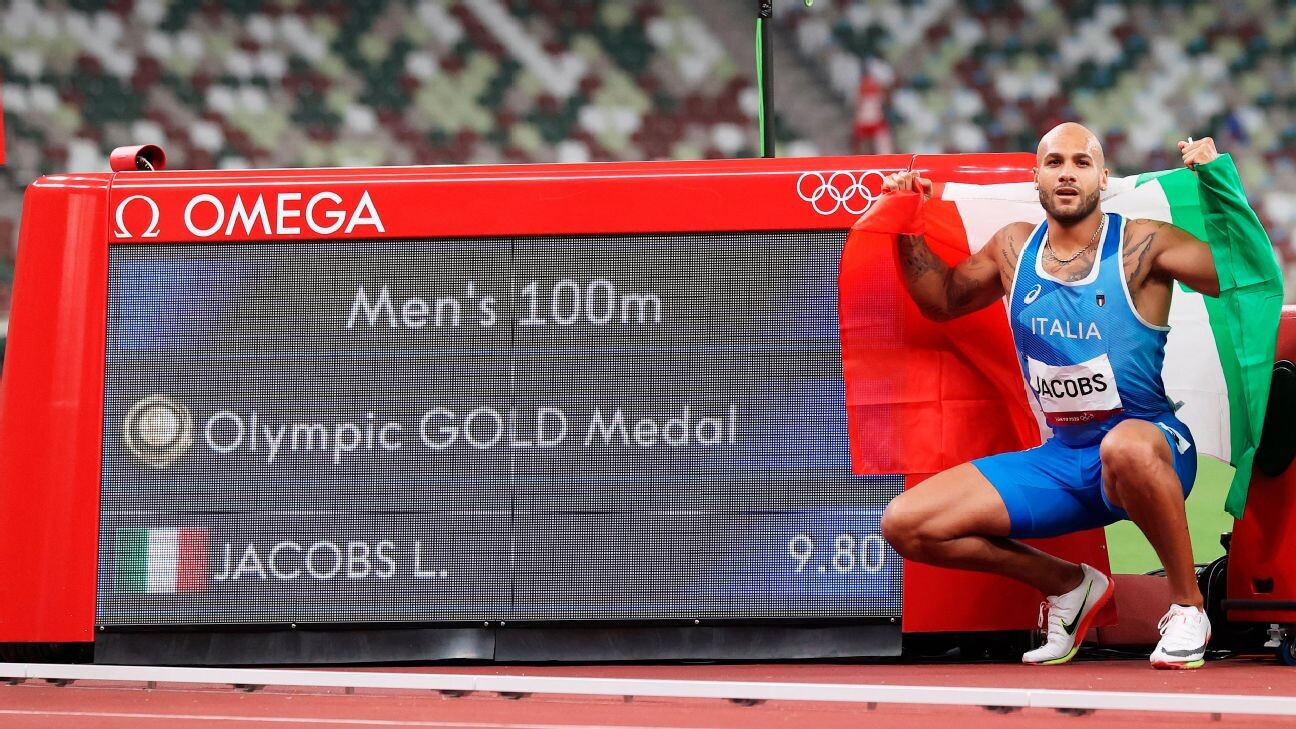
Jacobs kicked off the season with world 60m indoor gold in Belgrade, but a thigh injury in mid-May has disrupted his outdoor campaign withdrawing at short notice from several meets.
"The double Olympic champion (he also won 4x100 metres relay gold in Tokyo) will take part in the 100m heats scheduled for Friday," said the federation in a statement.

"The decision was taken after a discussion between the athlete, his coach Paolo Camossi and the technical directors of the Italian team after reassuring news coming out of his training camp at Beaverton, near Portland."
Camossi told Wednesday's edition of newspaper Corriere della Sera, the injury cloud had been well and truly lifted.
"The physical problem has been resolved, he does not feel any pain at all," said Camossi.
Jacobs, who has also been affected by intestinal problems this season which forced him to withdraw from the Nairobi meet at the beginning of May, has run just two 100m this term.
He timed 9.99 seconds, aided by a favourable wind, on May 18 and then on June 25 won the Italian title in a time of 10.12sec, far from the European record of 9.80sec he set when winning the Olympic title in Tokyo last year.
(07/13/2022) ⚡AMPWorld Athletics Championships Budapest23
Budapest is a true capital of sports, which is one of the reasons why the World Athletics Championships Budapest 2023 is in the right place here. Here are some of the most important world athletics events and venues where we have witnessed moments of sporting history. Throughout the 125-year history of Hungarian athletics, the country and Budapest have hosted numerous...
more...Olympic 800m medalist Nijel Amos suspended for doping
The third fastest 800m runner of all time, Botswana’s Nijel Amos has been provisionally suspended ahead of this week’s World Championships, after the 2012 Olympic silver medallist tested positive for a banned metabolite, the Athletics Integrity Unit (AIU) said on Tuesday.
The drug found in the 28-year-old’s system was GW1516, which modifies how the body metabolizes fat, and which can boost endurance. An AIU press release said that the World Anti-Doping Agency (WADA) has also warned that it poses a health risk to athletes.
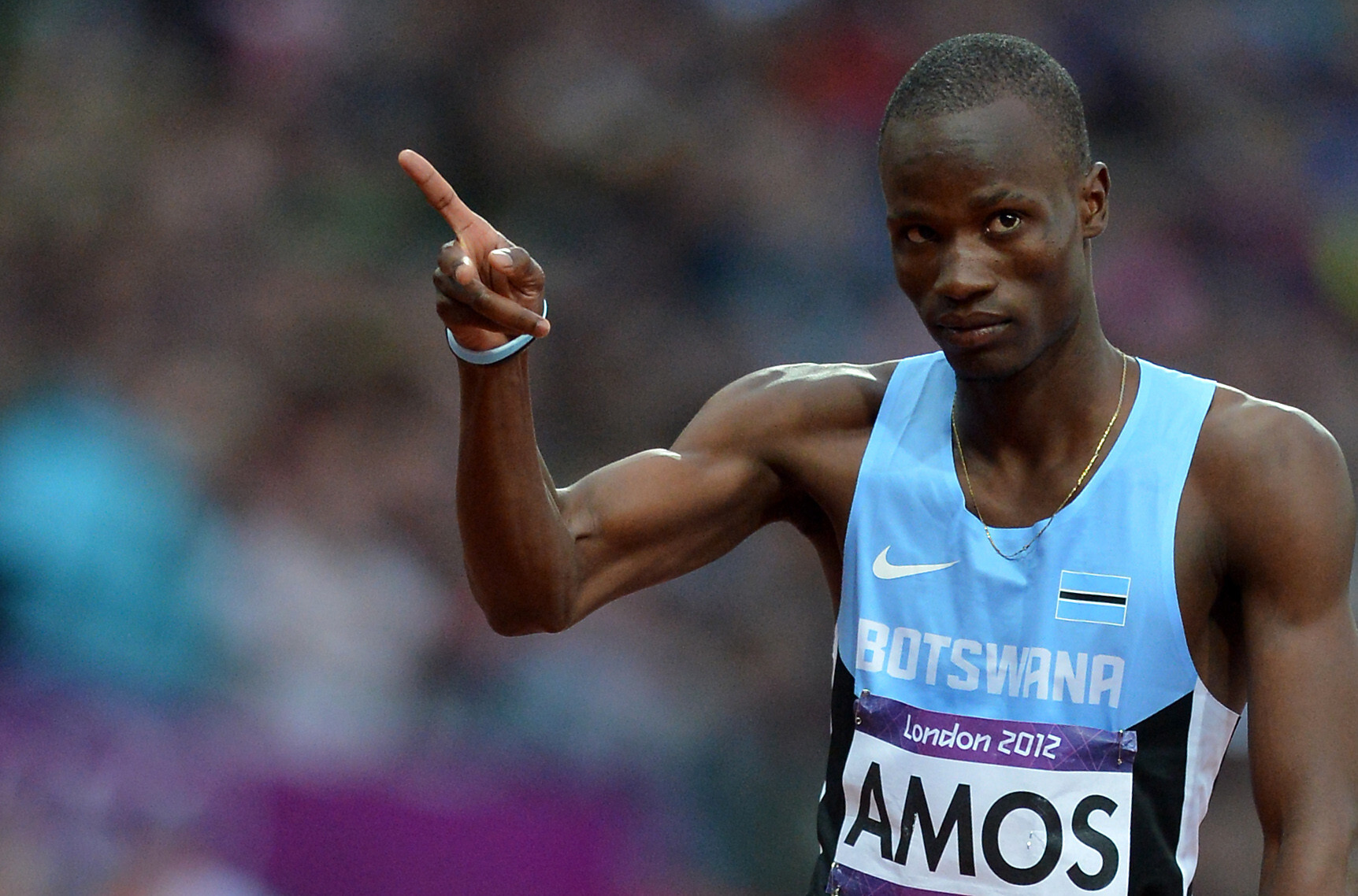
GW1516 was originally developed to treat obesity and diabetes, but is not approved for human use, since it was discovered to be carcinogenic. It is banned in and out of competition, and not eligible for Therapeutic Use Exemption (TUE). A USADA bulletin from 2019 says GW1516 is also sometimes known as cardarine or endurobol and has been found in some supplements, even though it is illegal. In 2017, there were 31 sanctions worldwide related to its use.
The AIU collected the sample from Amos during an out-of-competition test on June 4. Amos was notified of the result while he was preparing for the World Championships in Eugene, Ore., where he was scheduled to compete in the heats of the 800m on July 20. He finished eighth in the 800m final at Tokyo 2020. At Rio in 2016, he failed to make it out of the heats.
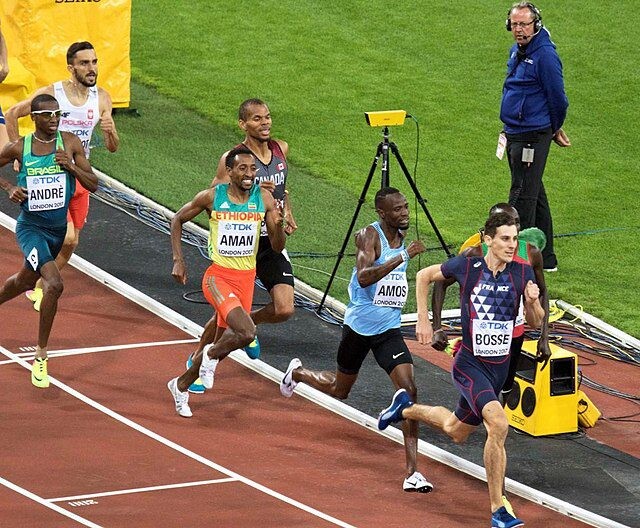
Amos’s silver in the 800m from the London Olympics was Botswana’s first Olympic medal and ranks as the third-fastest 800m time ever (1:41.73) behind Kenya’s David Rudisha (1:40.91) and Wilson Kipketer (1:41.11).
Amos has spent his last six seasons training with Mark Rowland and the Nike Oregon Track Club. Rowland recently left the club to start a new role as a coach with the Athletics Canada West Hub.
The AIU says the length of his suspension will be determined at a later date.
(07/13/2022) ⚡AMPby Marley Dickinson
Mike Wardian talks about his transcontinental run, "I want to run across all the continents, and then also run on the Moon"
Mike Wardian wrapped up his transcontinental run across the U.S. just over a week ago, running 107 miles on his last day to finish in Rehoboth Beach, Delaware. The renowned endurance athlete lives in Arlington, Va., and had been dreaming of this adventure for decades. Partially inspired by the fictional character Forrest Gump, Wardian ran with the support of a crew chief, Erik Belz, who had previously helped ultrarunner Karl Meltzer run a record time on the Appalachian Trail.
He was joined along the way by people who came out to cheer him on and run with him for some portion of the journey, and he managed to raise over $100,000 dollars for the organization World Vision, which helps families access clean drinking water.
Wardian is known for his many extreme accomplishments, including setting the World record for the fastest time to run seven marathons on seven continents in seven days. Throughout his run, Wardian posted daily highlights on Instagram, including what audiobook he’d listened to that day, a favorite quote-of-the-day, and notable observations or memorable moments. We caught up with Wardian to chat about his journey and to see where he’s headed next.
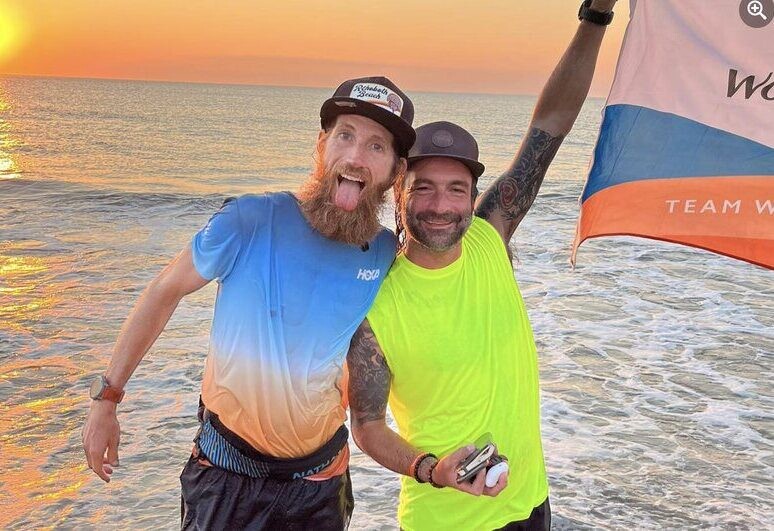
Congrats on the amazing journey! Who made up the stellar crew that helped you?
So my crew was Belz, my dad (Dick Wardian), and a friend named Henry.
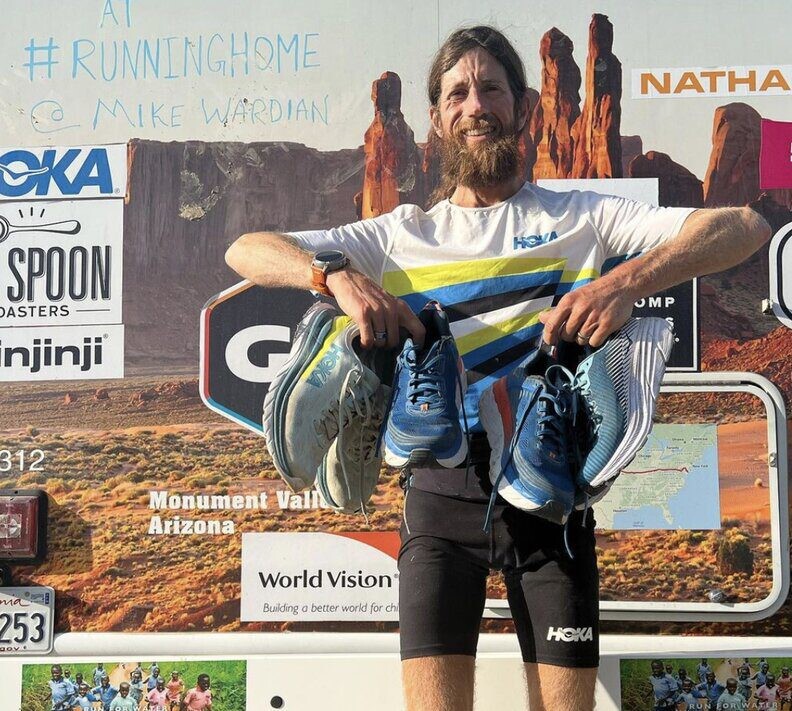
What was the absolute best day of the whole run?
The best day of the whole trip was the last day, of course. Seeing my family and finishing on the beach with the sun rising, just being with all the friends and the completion of the journey made it really special.
Worst day?
The worst day was when someone threw a hamburger at us in Ohio. It hit my friend, a vegan, in the stomach. Just so rude and mean.
What was the most useful advice you received going into this journey? What advice would you give anyone thinking about trying a transcontinental run?
I think the best advice I received was just to be consistent. Don’t overreach–I think I would give that same advice to somebody else.
What state had the safest roads for running?
Surprisingly the best roads were Delaware and Utah because I was running on the highway.
You did an incredible job raising so much money for World Vision USA! What inspired you to choose that charity for your fundraiser?
I was inspired to choose World Vision USA as a fundraiser because I work with them regularly sorting out humanitarian food and shipments. I know what good work they do and that they were a worthwhile charity.
What’s next for you?
I have so many things I want to tackle next! I want to row across the Atlantic and I want to run the Appalachian Trail. I want to do the Pacific Crest Trail, run across all the continents and then also run on the Moon.
(07/12/2022) ⚡AMPby Keeley Milne
Mo Farah: I was smuggled into UK and this isn’t my real name
Multiple Olympic and world champion reveals in BBC documentary that he was trafficked under a false name as a child
The Home Office has confirmed it will not be taking any action against Mo Farah following revelations in a BBC documentary that he was smuggled into the country as a child under a false name. “No action whatsoever will be taken against Sir Mo and to suggest otherwise is wrong,” said a statement.
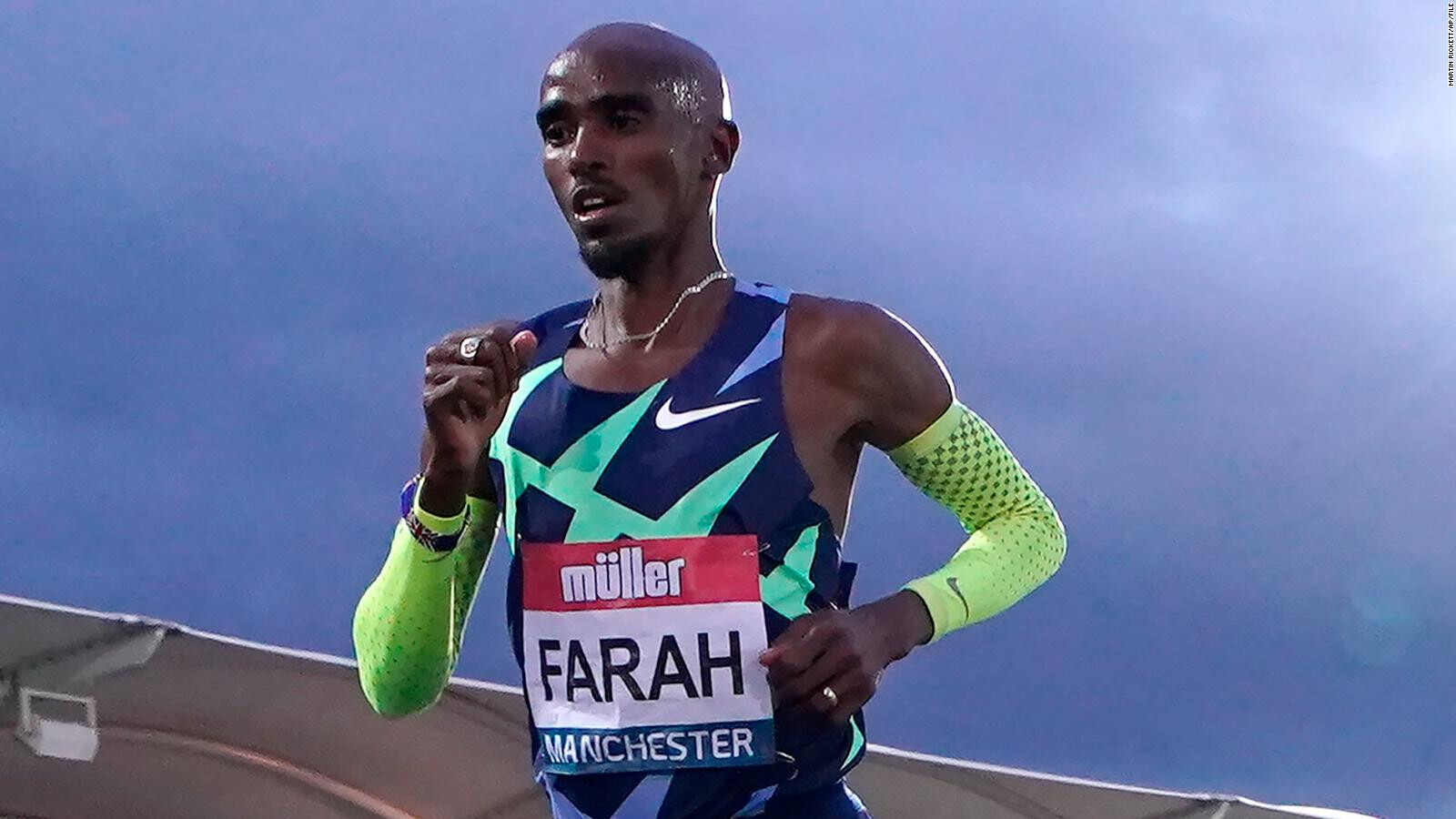
The BBC programme, which is called The Real Mo Farah and which airs on Wednesday night, tells the story of the athlete being originally called Hussein Abdi Kahin but being illegally trafficked into Britain using the name of another child.
He had previously claimed he had left Somalia aged eight to join his father, after his parents made the decision to send three of their six children to London for the chance of a better life.
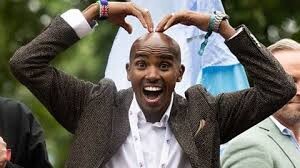
But in the BBC documentary the 39-year-old admits he was brought to London by a stranger under an assumed name.
“Most people know me as Mo Farah, but it’s not my name or it’s not the reality,” he says. “The real story is I was born in Somaliland, north of Somalia, as Hussein Abdi Kahin. Despite what I’ve said in the past, my parents never lived in the UK.”
In the programme he adds: “When I was four my dad was killed in the civil war, you know as a family we were torn apart. I was separated from my mother, and I was brought into the UK illegally under the name of another child called Mohamed Farah.”
Farah said he and his twin, Hassan, were sent by their mother to live with an uncle in neighbouring Djibouti and that he would be taken to Europe and renamed Mohamed. “As a kid, you never think beyond what you’ve been told,” he says.
But on arriving in England, he says: “I had all the contact details for my relative and once we got to her house, the lady took it off me and right in front of me ripped them up and put it in the bin, and at that moment I knew I was in trouble.”
After London 2012 he brought out an autobiography that talked about growing up in Djibouti near the border with Somalia but he has now decided to talk about something which has always been buried in his past.
“I’ve been keeping it for so long, it’s been difficult because you don’t want to face it and often my kids ask questions, ‘Dad, how come this?’ And you’ve always got an answer for everything, but you haven’t got an answer for that.”
In the documentary, Farah says he has concerns about his immigration status. But the Home Office has confirmed that he would not face any repercussions. “No action whatsoever will be taken against Sir Mo and to suggest otherwise is wrong,” a spokesperson said.
The documentary, which was a year in the making, ends with Farah speaking to the real Mohamed Farah, whose identity he took entering the UK, before adding Farah will continue to go by the name he was given when he entered the UK. There have also been unsuccessful attempts to speak to the woman who trafficked Farah to England.
The story has received widespread coverage, featuring on many of the front pages of British newspapers on Tuesday. Among the many people to comment, Mayor of London, Sadiq Khan, said: “Everything Sir Mo has survived proves he’s not only one of our greatest Olympians but a truly great Briton. Thank you for sharing your story and shining a spotlight on these awful crimes. We must build a future where these tragic events are never repeated.”
(07/12/2022) ⚡AMPby Athletics Weekly
Ten tips you should know when preparing for a marathon
Running a marathon is no easy task. It takes months of preparation, and even then, there are no guarantees you will make it to the finish line. But for those who have put in the hard work and dedication, crossing that finish line is an unforgettable experience.
Marathons are not only a test of your physical strength but also your mental fortitude.
Here are 10 things you should know before running a marathon:
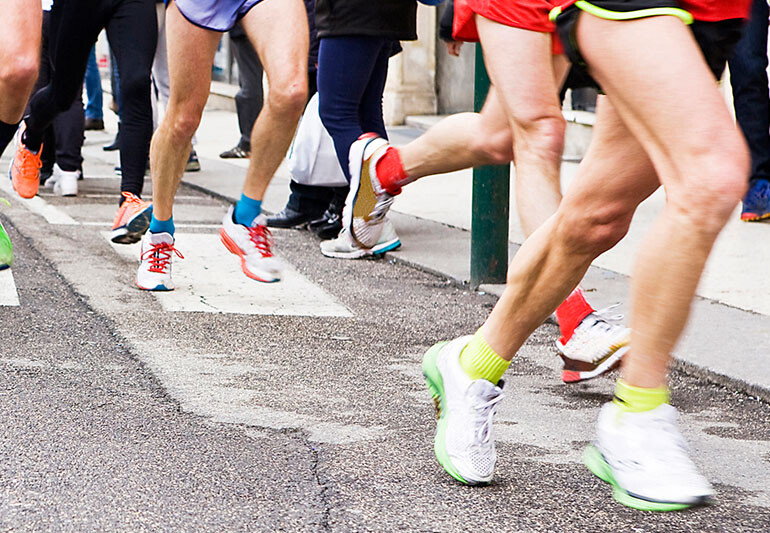
Get Your Nutrition In Check
Proper nutrition is essential for any runner, but it becomes even more important when training for a marathon. Be sure to fuel your body with plenty of carbohydrates to give you energy for long runs and speed workouts. And don’t forget to hydrate!
Drink plenty of water and sports drinks throughout the day to stay hydrated. Find out more about proper fuel for runners here.
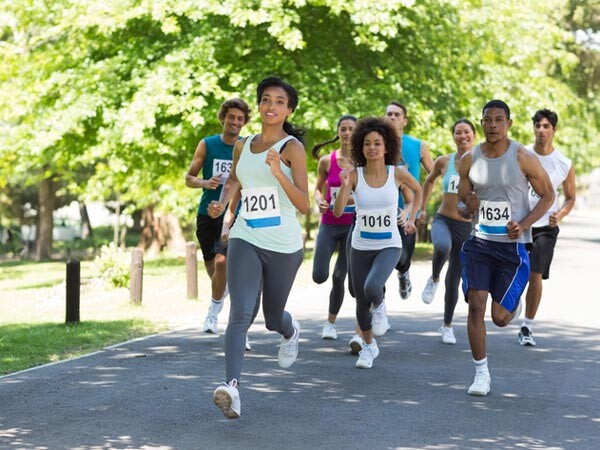
Build Up Your Mileage
Once you have a few weeks of running under your belt, increase your mileage. A good rule of thumb is adding 10% to your weekly mileage. So if you’re running 20 miles per week, increase it to 22 miles the following week.
Be sure to listen to your body during this process. If you’re feeling fatigued or have aches and pains, take a step back and reduce your mileage for a week or two.
Incorporate Speed Workouts
In addition to long runs, include some speed work in your training program. Speed workouts help to improve your endurance and can make running at a slower pace feel easier.
Some typical speed workouts include tempo runs, intervals, and fartleks. Tempo runs are runs performed at a slightly faster pace than your marathon goal pace. Intervals consist of alternating between periods of fast running and slower recovery paces. Fartleks are unstructured speed workouts where you pick up the pace for short periods throughout your run.
Start Slow
Don’t try to run 26.2 miles on your first training run. Ease into it by starting with shorter runs and gradually increasing your mileage. Try running 3-4 times a week to start.
By starting slow, you reduce your risk of injury and allow your body to get used to the demands of running long distances. This can help you stay motivated and avoid burnout as you prepare for the marathon.
Create A Training Plan
With so many different training programs available, it can be tough to know where to start. The best way to find a training plan that works for you is to consult with a coach or experienced runner. They can help you create a custom plan based on your goals, schedule, and current fitness level.
Having a plan to follow will help you stay on track and make the most of your training. It can also be helpful to write down your weekly workouts so you can see your progress over time.
Join A Running Group
One of the best ways to stay motivated during training is to join a running group. These groups meet regularly to run together and often have members of different abilities.
Not only will you make new friends, but you’ll also have access to experienced runners who can offer advice and support. And on those days when you don’t feel like running, the group atmosphere can help give you the motivation you need to get out the door.
Rest & Recovery
Rest and recovery are a vital part of any training program. Be sure to take one or two days off from running each week to allow your body to recover. And don’t forget to include cross-training activities such as biking, swimming, and strength training.
These activities can help improve your fitness while giving your joints a break from the impact of running.
Set Realistic Goals
When setting goals for your marathon training, make them realistic. Trying to do too much too soon can lead to burnout and injuries. Start by selecting a plan for how many miles you want to run each week. Then gradually increase your mileage until you’re running the distance you need to complete a marathon.
Setting time goals for your long runs and speed workouts is also essential. This will help you gauge your progress and ensure you’re on track for race day.
Stay Motivated
There will be days during training when you don’t feel like running. That’s normal! But it’s essential to find ways to stay motivated to stick with your program.
Some things that may help include:
Setting goals.
Listening to music.
Joining a running group.
Finding a training buddy.
Remember, the key is to keep moving forward even on the days when you don’t feel like it.
Be Prepared For Race Day
After all your hard work, it’s time for the big day! Make sure you’re prepared by doing a dress rehearsal a few weeks before the marathon. This means running the same distance you’ll be racing at the same time of day, wearing the same clothes, and using the same fueling strategy.
This will help you identify any potential problems so you can fix them before race day. It will also allow you to practice your race-day routine, so you know what to expect on the big day.
Marathons are a test of endurance, both mental and physical. But with proper training and preparation, you can cross the finish line with a sense of accomplishment. Use these tips to make the most of your marathon training and have a successful race.
By following these tips, you’ll be well on crossing the finish line of your first marathon!
(07/12/2022) ⚡AMPby Athletics Weekly
Chinese Su Bingtian will have season's debut at World Athletics Champs
A total of 53 Chinese athletes, including veterans Su Bingtian, Xie Zhenye and Gong Lijiao, will compete for more glory at the upcoming World Athletics Championships set to start on Friday in Eugene, Oregon in the U.S.
The first-ever Asian sprinter to break the 10-second barrier in the 100-meter track and field event, 33-year-old Su is the fastest Asian man with a personal best of 9.83 seconds. He will have his season's debut as the only Chinese to participate in the red hot men's 100m event at the World Championships, where he will face a line of superstar rivals.

China's Xie Zhenye will compete in the men's 200m. Meanwhile, Xie, Su, Wu Zhiqiang, Tang Xingqiang, Chen Guanfeng and Deng Zhijian are down to compete in the men's 4X100m. The Chinese relay team was upgraded to a historic bronze medal at last year's Tokyo Olympics after Team Great Britain were stripped of the silver over a doping violation.
Other highlights for Team China will include Gong Lijiao's attempt to win her third consecutive world championship title in women's shot put and women's race walks attended by defending champion Liu Hong and teammates Qieyang Shenjie, Ma Zhenxia and Wu Quanming.
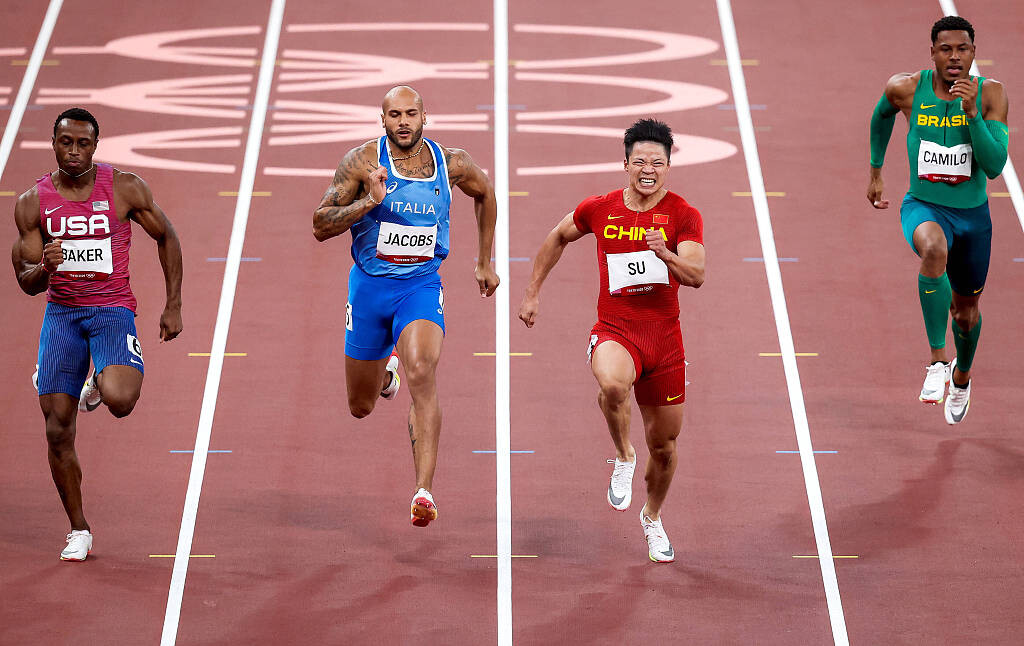
Olympic champions in women's javelin Liu Shiying and Lyu Huihui are also sure to attract attention.
However, event host the U.S. are almost sure to dominate, having won 170 gold medals since the first championship in 1983 – 110 more than next-best Kenya.
Team USA's 151-strong roster features nine defending champions and 20 medalists from last year's Tokyo Olympics and, for a 10th and final time, superstar Allyson Felix, aged 36.
Missing the event this year is Olympic and world 400 meters champion Bahamian Steven Gardiner, who will not defend his World Championship title due to UTE tendon inflammation.
In the United States for the first time, the 18th edition of the World Championships has seen a handful of late withdrawals, including Olympic women's marathon champion Kenyan Peres Jepchirchir, who will miss out with a right hip injury.
Olympic gold medalist Lamont Marcell Jacobs returns to the 100m big stage after muscle injuries ruled him out of several Diamond League meets.
Team USA have high hopes of making it three in a row after the disappointment at the Tokyo Olympics, where the Italian team took a shock gold.
Tokyo silver medalist Fred Kerley has been in fabulous form this season and could well be part of a home podium sweep alongside defending champion Christian Coleman and Trayvon Bromell.
(07/12/2022) ⚡AMPWorld Athletics Championships Budapest23
Budapest is a true capital of sports, which is one of the reasons why the World Athletics Championships Budapest 2023 is in the right place here. Here are some of the most important world athletics events and venues where we have witnessed moments of sporting history. Throughout the 125-year history of Hungarian athletics, the country and Budapest have hosted numerous...
more...Inspired by his dream of competing in the Boston Marathon, Bob Anderson started Distance Running News In 1966
Bob Anderson (publisher of My Best Runs) started Distance Running News in 1966, while he was still a high school student. Retitled Runner’s World in 1970, the magazine played a pivotal role in establishing running’s credentials as a legitimate sport.
Feature articles on training, diet, race tactics, and hotly contested reviews of running shoes delivered Runner’s World an audience in the millions, before the company was sold in 1984. Nearly 40 years later, Bob is still an exercise evangelist and a serial entrepreneur. Just don’t call him a jogger, he was only interested in racing!

ANDERSON HAS COMPETED IN NEARLY 1000 RACES
1. Why do you love running so much?
I love running simply because it gives me a lot of self-confidence. Plus you can run anyplace, anywhere, anytime — all you need is a good pair of shoes! It’s just you and your body in the fresh air. I also love that feeling when your heart’s pumping, things are clicking and you’re running as fast as you can. It’s an adrenaline rush. I’m 74 years old and I still run about 30 miles a week and walk another 30 miles. My little dog Daisy joins me for about half of this.
2. That is an amazing effort. Back in the early 70s, running wasn’t considered a sport in the way that football or baseball is, was it? How would you describe it?
Well, my dad, when he was in his 40s, wouldn’t have been caught dead in a pair of running shorts outside, it was just way too weird! I grew up in Kansas and ran cross-country and track in high school. But once the season ended, there was nothing, and college running was really only for superstars. People just didn’t run for fun and fitness. There were a few pockets of hardcore runners (like in San Franciso), and the Boston Marathon was around, but only a few hundred people entered races in those early years.

A STACK OF HISTORY
3. A lot of things conspired to create the jogging boom in the late 1970s. How did the marathon become a phenomenon?
I have to say one thing about jogging — I’ve never jogged a mile in my life! I run, and I run races! Anyway, what really helped put running on the map was when Dr. Kenneth Cooper came out with the book Aerobics. A few years earlier, President John F. Kennedy started the 50-mile hike challenge. Those two events really jumpstarted the running scene in America.
In January 1966, I published the first issue of Distance Running News. Even though I only printed a thousand copies, lots of people wanted to read it. The next thing I knew, people started sending in subscription money. New Balance was one of my first advertisers. I think they paid $10 for a little ad.
4. Bargain!
It started with two issues a year, then we went from four to six, then monthly. We went from black and white photos to colour. I started with a hundred bucks, and by the time I sold the magazine in 1984, we had 2,500,000 readers! We changed the name to Runner’s World in 1970, and the magazine became the Bible of running.
5. Did you have a grand plan for the business?
Not really. I was still in high school at the time! I was interested in running the Boston Marathon but had no idea how to train or go about it. I was reading every single word I could find about running, which wasn’t much. On the way to a cross-country meet one day I said to my best friend (Dave Zimmerman), "I want to start a magazine about running. We’ll call it Distance Running News!" He said great!
A YOUNG BOB BESIDE HIS HANDY WORK
6. It sounds like the magazine fostered a great sense of community.
Absolutely. You’re right, it was all about bringing people together, which is exactly what social media does for people today. A kid living in Cheyenne, Wyoming, who absolutely loved running, but was into it by himself, was suddenly able to find out what was happening in the world of running by reading the magazine.
We covered all sorts of topics, including articles on how to break through the pain barrier when you hit the wall at 20 miles, training information, dietary advice, running after 40, and women’s running. When I started Runner’s World, a woman was not allowed to run more than a half-mile.
7. Whoa! I have never heard that before.
I mean, it’s hard to believe that was the case, but a lot of people thought the female body was just not made to run beyond a half-mile. As far as I was concerned, people are people, and it didn’t matter if you were a man or a woman. I didn’t care if you were 10 years old or 75 years old — or even 100 years old! — the fact of the matter is running should be for everyone. I remember Kathy Switzer was thrown out of the Boston Marathon in 1967. It was crazy, but women were not allowed to run 26 miles at that time. That rule didn’t change until 1972. Anyway, those are the sorts of things we were dealing with in those early days, and we covered it all.
8. The athletic brands were also in their infancy during this period. Did you have any inkling how big brands like New Balance would become?
I wish I could say I did. [laughs] At the time, the sneaker companies were really small firms. New Balance was based up in the North East of the USA and other brands were dotted around America. To put things into perspective, back in those days, a best-selling running shoe maybe sold a thousand pairs. That’s how small the business of running was.
In 1968 I asked some experienced runners if 10,000 subscribers was possible. They told me that figure was just unbelievable and that I’d never reach it. Those people I talked to clearly thought I was just a kid with crazy dreams, but I didn’t start Runner’s World to make money — I just wanted to help the sport! In my mind that was a much bigger goal.
9. Well, I’d say you had the last laugh. Do you remember when your first running shoe edition was printed?
Oh yeah, our first shoe issue came out in 1967, and we reported on all the brands. As the years went on we did it annually, and it became the biggest issue of the year by far, with close to four million readers. We hired Peter Kavanaugh at Penn State University — who we paid $25,000 for equipment — and sent him all the shoes to test. We included feedback from readers in the results too. We would end up ranking the shoes starting with the number one running shoe of that year.
10. Sounds like a recipe for drama and intrigue.
Yeah, it was. [laughs] Because we rated a shoe number one, the controversy was never far away. Some brands felt we had too much power and … actually one company thought that we were being ‘influenced’ and decided to pull out of the shoe issue, thinking that their second place ranking should have been higher. Funnily enough, we sold more copies of that October shoe issue than we ever had because the controversy made the national news. We were fully investigated and cleared, of course, because we were doing nothing wrong. We just presented the facts as we saw them.
11. What are your memories of working with Jim Davis, president of New Balance?
First of all, Jim was very personable and he didn’t need to be in the limelight. He seemed like a really hardworking guy who really cared about running shoes and making the very best product that he could. I was very impressed, and you just got the feeling he was gonna make his brand work. He made and sold shoes in different width sizes, and he was willing to roll the dice on that. And here we are today, New Balance is a huge company. It’s a very impressive story.
(Jim Davis bought a small Boston Shoemaker in 1972 and turned it into a $3.6 billion New Balance company. Jim is the chairman of New Balance and his wife Anna joined the company in 1977 and is the vice chairman. Jim and Anna's net worth is estamated to be 4.6 billion dollars.)
12. You sold Runner’s World in 1984, by which time you had 300 employees…
We had 350 employees actually. [laughs] I was going through a divorce at that time and needed to sell the company. It’s funny, I started the magazine because I wanted to run the Boston Marathon, but I literally became a weekend runner only because my day was pretty full from six in the morning until eight at night. However, I was still able to run sub-six-minute miles in races on the weekend.
13. That’s quite ironic, isn’t it?
Yeah, it is. I wish I had followed my own advice. As I’ve gotten older, when I look back, my whole life was Runner’s World before the age of 35. Instead of taking off for an afternoon run, I just worked really hard. Luckily I’m still running 30 to 35 miles every week. I finally ran the Boston Marathon in 2013. It only took me 45 years to be on the starting line.
14. And was it as amazing as you thought it would be?
Oh my gosh, I’ve run close to a thousand races in my life but the Boston Marathon is number one. It was just an incredible experience and I was thrilled my wife and son Michael were with me that day. At the same time, that was also the year of the terrible bombing. Luckily I finished about a half hour before that happened. I ran 3:32:17 that day at age 65. I was proud of my time but it only gave me like 9th in my age division.
15. I didn’t connect that tragic year with the Boston race. That should have been a great day for you and a lot of other people.
Yeah, it was great, right up until the point the bomb went off. The experience of finally running through Boston and seeing the crowds was just beyond words. That doesn’t overshadow the victims and all the other people whose lives were destroyed that day, but the Boston Marathon is still an incredible race. What a tragic contrast to the joy that running brings.
16. One last question. You just can't stay away from being part of the running world!
I just love running and it will be part of my life until the end. I am the editor/publisher of our website My Best Runs. As of 2022 we have nearly one million unique readers annually. In 2010 I started a new sport called Double Racing and we established the Double Road Race Federation. The double is a two stage race. Our most popular disance is the Double 15k. We run 10K and then a 5k one hour and 45 minutes after the start of the 10k. Times are added together for scoring. In 2012 I ran 50 races over the course of a year covering 350.8 miles averaging 6:59/mile. A movie A Long Run the movie covers the event.
I also started the Kenyan Athletics Training Academy (KATA) in Thika Kenya (one hour outside of Nairobi) and officially opened it Sept 4, 2021. We currently have 13 Kenyan runners living and training there. We do a monthly 10K time Trial and we have had four of our runners already break 30 minutes. We have a lot of plans and have just started. I am working with an amazing team there who takes care of the day to day. Many have already told us we have one of the nicest if not the nicest "camp" in all of Kenya.
I love running and I love turning on as many people as I can to this amazing sport...Running and Racing!
(07/11/2022) ⚡AMPby Woody (Sneaker Freakers)
Michael Bergeron runs 34:47 10k while juggling a world record
Michael Bergeron of Cavendish, P.E.I. Canada, has broken the 10K joggling world record he has been chasing for the last four years. Bergeron covered 10K in 34 minutes and 47 seconds while juggling three balls around 25 laps of the University of Prince Edward Island Athletics Track.
He previously attempted the 10K record in 2018, but his time was not ratified by Guinness World Records since it was done on an uncertified course. The previous record is held by Toronto’s Michal Kapral in a time of 36:27.
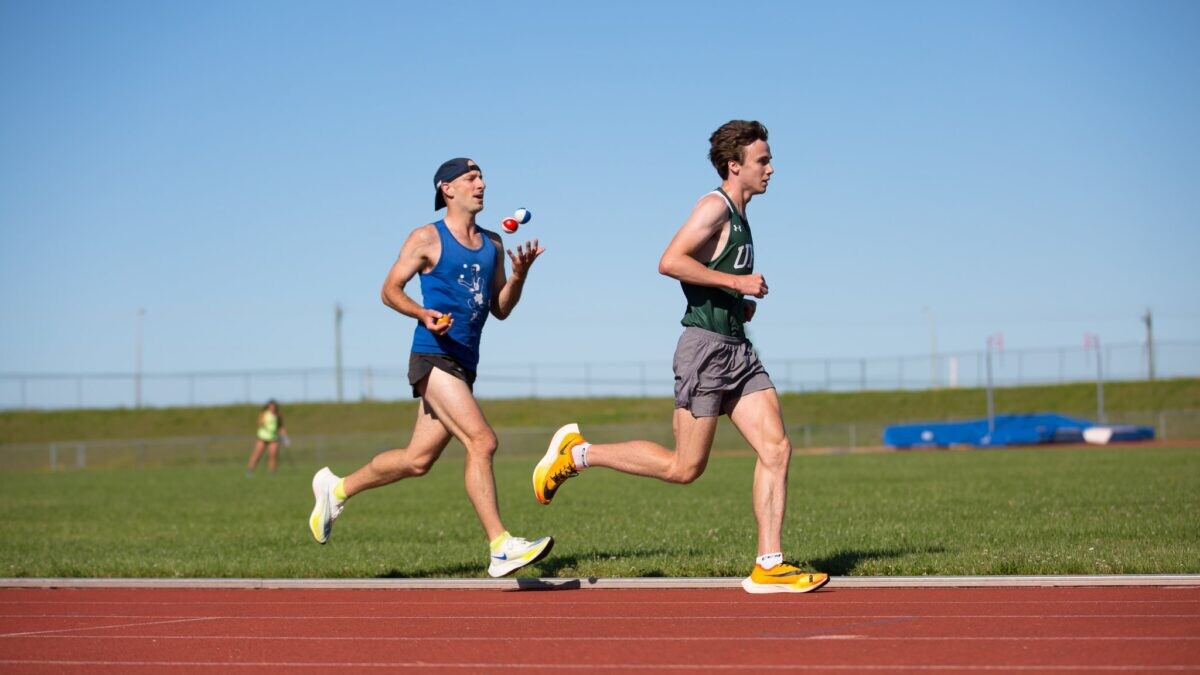
A Guinness World Record doesn’t happen by accident. In order to verify the event, there must be video evidence and two witness statements. Bergeron had several pacers in the race, while his friend Amber MacLeod recorded the race from the infield and his wife Jennie called splits for every 400m lap. “I am ecstatic about this record,” Bergeron says. “Breaking this record kept me motivated to train during the pandemic.”
This record isn’t Bergeron’s first; he currently holds the Guinness World Record for the fastest half marathon while juggling, 1:17:09 at the 2018 Toronto Waterfront Half Marathon.
Bergeron began running track when he was 13 and learned to juggle in high school. He brought his two hobbies together as a dare by a friend in university. He did his first juggling race in 2014 at a local 5K.
(07/11/2022) ⚡AMPby Running Magazine (Marley Dickinson)
World Athletics Championships Oregon22 preview: marathon
Kenya’s Geoffrey Kamworor, whose career was traumatized in June 2020 when he was hit by a motorbike during a training run and required surgery on a broken tibia, is due to contest his first major championship marathon in Eugene on July 17.
The 29-year-old from Nyen was named on the Kenyan team for the World Athletics Championships Oregon22 along with 33-year-old Lawrence Cherono – who missed a medal by one place in the marathon at last year’s Olympics – and 35-year-old Barnabas Kiptum.
Kamworor, confident and outgoing, was flying high when he had his accident.
Although he had performed to high levels on the track, where he earned 10,000m silver at the 2015 World Championships in Beijing, it was on grass and roads that he had excelled, winning the world cross-country senior titles in 2015 and 2017, and world half marathon titles in 2014, 2016 and 2018.

In his first competitive marathon in 2012 he finished third in Berlin in 2:06:12, and he was a consistent presence on the podium at World Majors Marathons thereafter, particularly in New York, where he finished second in 2015, first in 2017, third in 2018 and first again in 2019.
Kamworor ran his first race since the accident in January 2021, winning the Kenyan Police Cross Country Championships before going on to secure a place on Kenya’s Olympic 10,000m team after winning the national trials, only to have to pull out with an ankle injury.
But at the Valencia Marathon last December he was able to perform to the peak of his ability once more as he set a personal best of 2:05:23 in finishing fourth.
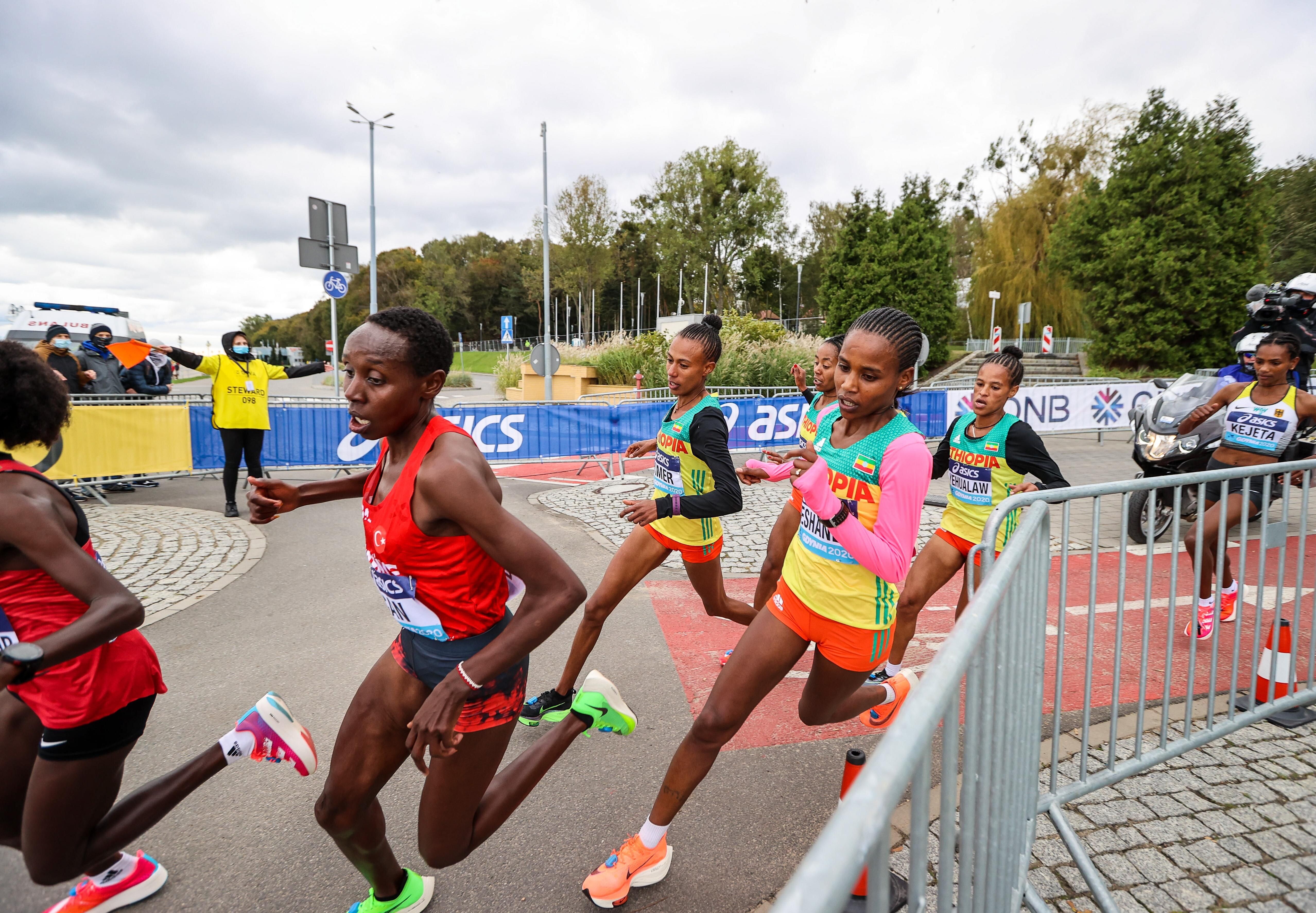
At the previous year’s running in Valencia, Cherono was second in a personal best of 2:03:04, putting him eighth on the world all-time list, having made his World Marathon Majors breakthrough in 2019 when he won in Boston in 2:07:57 and then Chicago in 2:05:45.
Like Kamworor, Kiptum also set a personal best last year as he clocked 2:04:17 in placing third at the Milan Marathon and he has a solid top-three record in virtually every race he has contested.
Such is the depth of Kenyan talent that they can name 2017 world champion Geoffrey Kirui as a reserve.
Meanwhile Kenya’s perennial rivals Ethiopia will be looking to their current world champion Lelisa Desisa, who found the way to win in the steamy heat of Doha three years ago, to make the most of his wild card entry to this year’s competition.
Desisa had early track success, winning the African U20 10,000m title in 2009, and he has since become a highly consistent performer at the highest level, achieving podium finishes four times in New York, including victory in 2018, and four times in Boston, where he won in 2013 and 2015.
He also has championship pedigree, having earned world silver in 2013 six years before his Doha gold, and has a personal best from 2013 of 2:04:45.
The formidable talent Ethiopia can call upon was made clear when it was confirmed that Desisa will have as teammates Tamirat Tola, Mosinet Geremew and Seifa Tura.
Tola earned Olympic 10,000m bronze in 2016 and world marathon silver in 2017. He set his personal best of 2:03:38 last year.
Geremew took silver behind Desisa at the 2019 World Championships, having finished second at that year’s London Marathon in 2:02:55, the third-fastest time in history.
Tura set his personal best of 2:04:29 last year in Milan before going on to win the Chicago Marathon in 2:06:12.
Uganda, the rising nation in distance running, earned this title in 2013 thanks to their 2012 Olympic champion Stephen Kiprotich. But the 33-year-old hasn’t been selected for Oregon, nor have Stephen Kissa, who ran a national record of 2:04:48 in Hamburg earlier this year, and Victor Kiplangat who was third in the second-fastest time ever by a Ugandan, 2:05:09.
Instead, Filex Chemonges, Fred Musobo and Jackson Kiprop will run the World Championships marathon, according to the Uganda Athletics Federation. So Kiprop, who helped Kiprotich to win the 2013 world title, is back at the World Championships for the first time since 2015.
Kissa, meanwhile, is due to be in Oregon in the 10,000m, where he will run with fellow Ugandan Joshua Cheptegei, the world 5000m and 10,000m record-holder, while Kiplangat is reported to be running the Commonwealth Games marathon.
Abdi Nageeye of the Netherlands and Belgium’s Bashir Abdi earned surprise silver and bronze medals respectively at the Olympics last year, but went on to confirm that their performance in Sapporo was anything but a fluke. Abdi set a European record of 2:03:36 to win the Rotterdam Marathon just two months later, while Nageeye was victorious at the Rotterdam Marathon earlier this year in a Dutch record of 2:04:56, finishing ahead of Abdi.
Both men will line up for the marathon in Oregon, only this time it will be less of a surprise if they reach the podium.
The United States will be looking to the highly consistent figure of Galen Rupp. After taking Olympic 10,000m silver in 2012, Rupp moved to the roads and earned Olympic bronze in 2016.
In 2017 he became the first US man to win the Chicago Marathon since 2002 and finished second at the Boston Marathon. He qualified for Oregon by finishing eighth at last year’s Olympics.
The championships will be in Rupp’s home state, in the same city where he made his first Olympic team in 2008 while he was a student at the University of Oregon.
The other US selections are Elkanah Kibet and Colin Mickow. Kibet, who is with the US military, finished 16th at the 2017 World Championships and set a personal best of 2:11:15 in finishing fourth at last year’s New York marathon.
Mickow is a 32-year-old full-time financial analyst for an organic and natural foods distributor who took up road running six years after finishing his college track career. He qualified for his first international vest after being the top US man home at last year’s Chicago Marathon, where he was sixth in 2:13:31.
Japan’s trio of male runners will be headed by Kengo Suzuki, who set a national record of 2:04:56 in February 2021 at the Lake Biwa marathon in Otsu. Daniel Do Nascimento of Brazil has run a 2:04:51 personal best this year and is another one to watch.
The three-loop World Athletics Championships marathon course only varies by about seven meters between its high and low points and the weather is likely to be considerably cooler than it was in Sapporo or Doha, where the men's marathon had to be held at midnight and the start time temperature was 29C/84F with 51% humidity.
Women's marathon
Ruth Chepngetich will defend her marathon title at the World Athletics Championships Oregon22 on July 18 by virtue of a wild card.
Chepngetich claimed the first gold medal of the 2019 World Championships, clocking 2:32:43 in the steamy heat to gain her first major gold.
She went on to finish third at the 2020 London Marathon before a roller coaster 2021, when she set a world record of 1:04:02 at the Istanbul Half Marathon, failed to finish the Tokyo 2020 Marathon in Sapporo but then won the Chicago Marathon.
At this year’s Nagoya Women's Marathon she won in 2:17:18, just 10 seconds off her personal best and the second-fastest ever women-only marathon.
She will be joined on the Kenyan team in Oregon by Judith Jeptum and Angela Tanui. Jeptum set a French all-comers’ record of 2:19:48 to win the Paris Marathon this year, while Tanui won the 2021 Amsterdam Marathon in 2:17:57.
Ethiopia will be represented by Gotytom Gebreslase, who won the 2021 Berlin Marathon on her debut and finished third in this year’s Tokyo Marathon in 2:18:18, Ababel Yeshaneh, second at the 2019 Chicago Marathon in a personal best of 2:20:51, and Ashete Bekere, third in last year’s London Marathon in 2:18:18, who has run 2:17:58 this year.
USA’s Keira D’Amato, who broke the North American record when winning January’s Houston Marathon in 2:19:12 – taking 24 seconds off the mark set by Deena Kastor in 2006 – has answered a late call to join the host nation’s team following the withdrawal of Olympic bronze medalist Molly Seidel.
Seidel has been suffering from a hip injury that forced her to drop out of the Boston Marathon in April and withdrew from the team after being unable to resolve her issue, giving the 37-year-old D’Amato, who only began serious marathon running in 2017, three weeks to prepare, but she is reported to be in “great shape”.
Her teammates will be Emma Bates, runner-up at last year’s Chicago Marathon, and Sara Hall, who finished second at the 2020 London Marathon and third at last year’s Chicago Marathon.
Japan has named Mizuki Matsuda, who has a personal best of 2:20:52, Mao Ichiyama, who has run 2:21:02, and Hitomi Niiya, who has a best of 2:21:17.
Britain will be represented by Rose Harvey, Olympian Jess Piasecki and Charlotte Purdue, who ran a personal best of 2:23:26 in finishing 10th at last year’s London Marathon.
Other names to watch out for are Bahrain’s Eunice Chumba, who ran 2:20:02 in Seoul in April this year, and Israel’s European 10,000m champion Lonah Salpeter, who won the 2020 Tokyo Marathon in 2:17:45 and was going well in the lead group at last year’s Olympic marathon before dropping down to 66th place in the closing stages.
After also dropping out of the 2019 World Championships marathon, Salpeter will be seeking to make the global impact her talent warrants.
Meanwhile Eritrea’s Nazret Weldu, who has run a personal best of 2:21:56 this year, is another one to watch.
(07/11/2022) ⚡AMPby World Athletics
World Athletics Championships Budapest23
Budapest is a true capital of sports, which is one of the reasons why the World Athletics Championships Budapest 2023 is in the right place here. Here are some of the most important world athletics events and venues where we have witnessed moments of sporting history. Throughout the 125-year history of Hungarian athletics, the country and Budapest have hosted numerous...
more...Jemal Yimer and Rosemary Wanjiru take wins at Utica Boilermaker
Jemal Yimer Mekonnen of Ethiopia won the 45th running of the Boilermaker 15K Road Race presented by Excellus BlueCross Blue Shield, smashing a 12-year-old course record by 8 seconds in the race's return to its traditional first Sunday in July. Rosemary Wanjiru of Kenya took home the women's crown and a $10,000 Super Bonus as part of the Professional Road Racing (PRRO) 25th Championship.
Mekonnen won the 9.3 mile race with a time of 42:38, overtaking Edwin Kimutai of Kenya in the final mile and taking the win by 2 seconds. Mekonnen took home $7000 for winning the Boilermaker and a $2500 bonus for winning the PRRO Championship. He was not eligible for the PRRO Super Bonus, which requires a win in a previous series race.
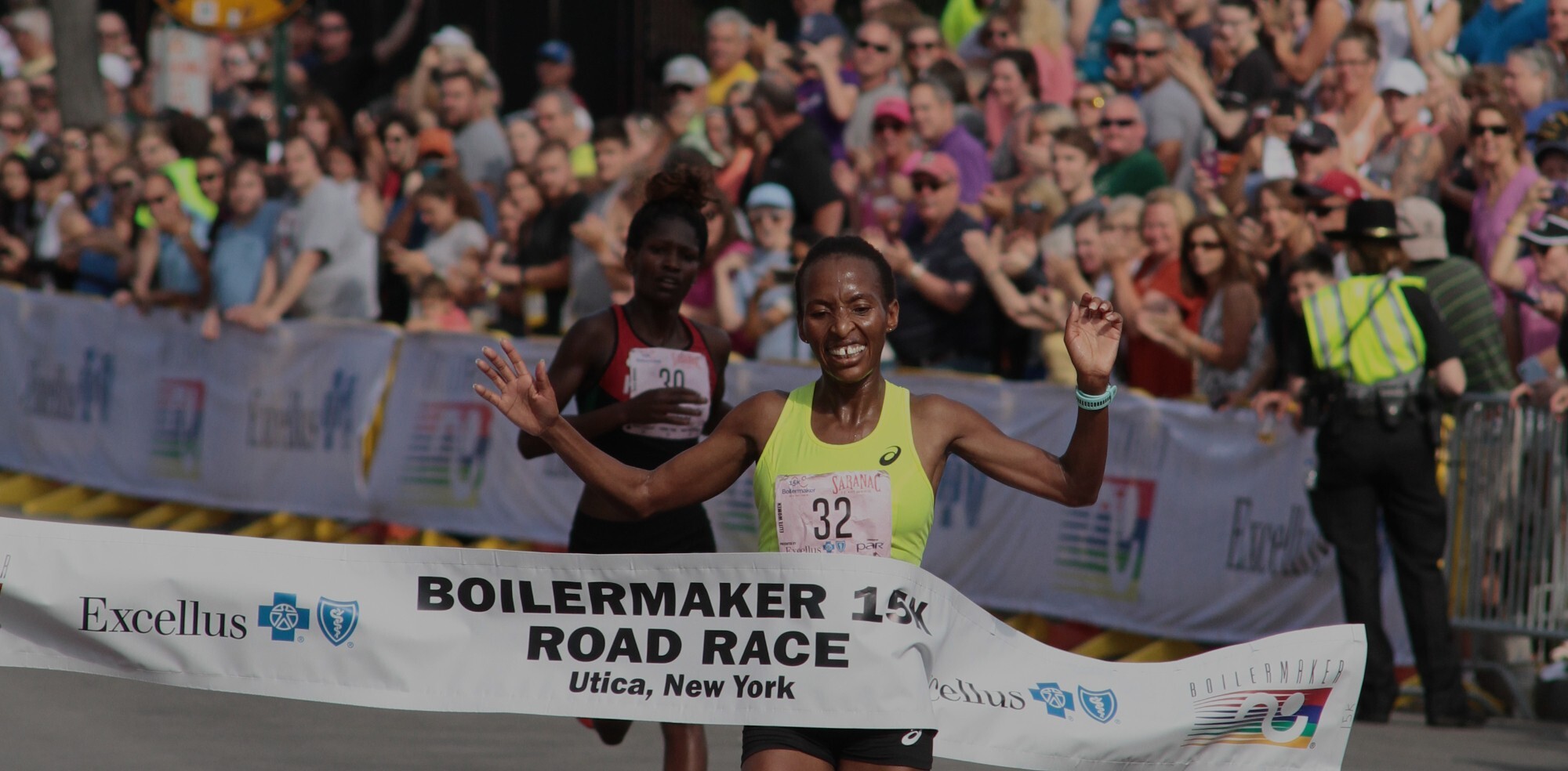
Mekonnen bested the Men's Open record of 42:46 set by Lelisa Desisa of Ethiopia in 2010.
Wanjiru, who previously won the Bloomsday Run in 2019, bested fellow-Kenyan Veronica Nyaru Wanj by nearly 20 seconds, finishing the race in 48:54. The women's course record is held by Edna Kiplagat of Kenya, who won the 2010 race with a time of 47:57.

Wanjiru leaves the race as the PRRO Series Champion, winning $7000 from the Boilermaker in addition to the super bonus prize money from PRRO.
Sam Chelanga of Columbia, SC, the top American male, finished third overall with a time of 43:09, while the top American woman was Carrie Verdon of Boulder, CO. Verdon was the fifth overall female, finishing in 49:37.
As part of the PRRO Championship, runners who were eligible for the PRRO Super Bonus who finish in positions 2-10 in the men's and women's open divisions receive a $1500 bonus. On the men's side, Kimutai earned the $1500 PRRO bonus for his second-place finish in the men's open division, in addition to $4000 from the Boilermaker. On the women's side, Birukayit Degafa earned the $1500 PRRO bonus, in addition to $1500 for her fourth-place Boilermaker finish, while Susanna Sullivan takes home the $1500 PRRO bonus to go along with the $1000 she won for finishing sixth.
Last year's men's open winner, Syracuse native Stephen Rathbun, who now lives in Springfield, NJ, finished 23rd with a time of 47:15. Interestingly, Rathbun's finishing time was 17 seconds faster than his winning time from the October 2021 race. New Hartford native Savannah Boucher of San Antonio, TX, who won the women's open race in 2021 with a time of 56:24 was 14th in the women's open division with a time of 54:40.
Daniel S. Romanchuk of Champaign, IL, the world's top ranked wheelchair athlete, won the Boilermaker Men's 15K Wheelchair Race presented by Sitrin and NBT Bank with a time of 31:33, besting his own course record, set in 2018, by one second. Local favorite Hermin Garic of Utica finished second in the men's wheelchair division with a time of 35:25.
Jenna Fesemyer of Champaign, IL, won the women's race with a time of 43:01. Emily Sweeney of Montrose, NY successfully completed the Sitrin Wheelchair Challenge, finishing in 1:14:15, earning a custom-made racing wheelchair.
The race returned to its traditional second Sunday in July for the first time since 2019. A total of 5848 runners finished the 15K presented by Excellus BlueCross BlueShield, while 2848 finished the 5K presented by Utica National.
Michael Hennelly of Suffern, NY won the men's 5K with a time of 16:04, while Tricia Longo of Waterford, NY won the women's race in 17:49.
(07/11/2022) ⚡AMPby Glen Andrews
Boilermaker 15k
The Boilermaker 15K is the premier event of Boilermaker Weekend. This world krenowned race is often referred to as the country's best 15K. The Boilermaker 15K is recognized for its entertaining yet challenging course and racing's best post-race party, hosted by the F.X. Matt Brewing Company, featuring Saranac beer and a live concert! With 3 ice and water stops every...
more...These two downhill workouts will make you stronger
The warmer months are the perfect time to try some new terrain, whether that means signing up for a trail race or trying out a hilly road route. While you might remember to add uphill workouts into your routine, maximizing speed and skill on the downhill is often neglected. Here are two workouts to incorporate into your regular training that will prep you to tackle those downhills. You can run these sessions on trails, or make them work on city paths or sidewalks.
As you run downhill, try to land with your feet underneath you, and imagine that your arms and core are a source of stability. Running downhill takes some practice, so make sure to always maintain a pace that feels safe to you. Practice landing your feet gently and smoothly.
Downhill fartlek

Fartlek is a Swedish word meaning speed play. A fartlek training session involves running continuously, while increasing and decreasing speed and intensity.
Take this workout to a path or sidewalk that has some hills, along with some flatter sections.

Warm up with 15 minutes of easy running.
Turn the rest of your run into a fartlek by increasing your speed to race pace on each downhill. After you reach flatter ground, recover with easy running as necessary. Repeat on 4-10 hills throughout the run.
Cool down with 10-15 minutes of easy running.
Leg crushers
For this workout, find a fairly steep hill, but one that you can comfortably run down at a fast pace without losing control.
Warm up with 10-20 minutes of easy running.
Run up the hill at a very easy pace, for one to two minutes (depending on the size of your hill and your experience).
Passive rest (standing) for 30 to 60 seconds.
Run down the hill at a hard you feel comfortable, stopping at the bottom of the hill.
Passive rest for 30 to 60 seconds, repeat 5-10 times. If you’re new to downhill running, start with fewer repeats, and increase by one or two repeats weekly.
Cool down with 10-20 minutes of easy running.
You may be surprised to find that downhill running often will require more recovery time than an uphill workout, and you’ll certainly feel it after trying either of these workouts. Make sure to follow a downhill day with an easy running or rest day.
(07/11/2022) ⚡AMPby Keeley Milne
Peres Jepchirchir, world’s top marathoner, withdraws from world championships
Kenyan Peres Jepchirchir, who in the last year won the Olympics, New York City and Boston marathons, withdrew from next Monday’s world championships marathon due to a right hip injury, her agent confirmed.
Jepchirchir, a 28-year-old mom, began feeling discomfort last week, according to the Daily Nation.
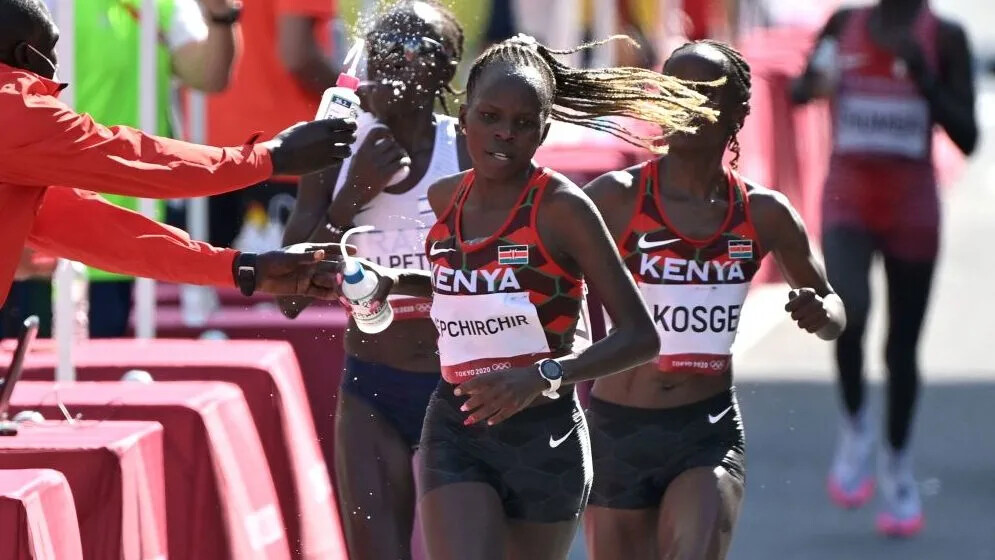
Last year, Jepchirchir became the first person to win the Olympic and New York City Marathons in a career, doing so in a span of three months. She then added a title in Boston on April 18, cementing her status as the world’s top marathoner.
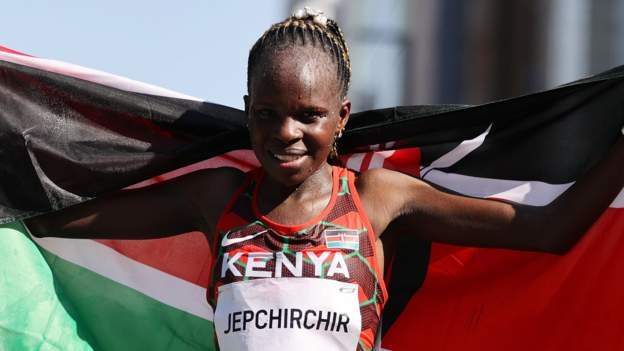
In Jepchirchir’s absence, the marathon field at worlds in Eugene, Oregon, is led by defending champion Ruth Chepngetich of Kenya and Ethiopians Ababel Yeshaneh (second to Jepchirchir in Boston) and Gotytom Gebreslase (Berlin Marathon champion), plus American record holder Keira D’Amato.
D’Amato replaces Olympic bronze medalist Molly Seidel, who withdrew two weeks ago, citing a hip injury, an ongoing process seeking a therapeutic use exemption for ADHD medication and a focus on her mental health.
(07/11/2022) ⚡AMPby Olympic Talk
World Athletics Championships Budapest23
Budapest is a true capital of sports, which is one of the reasons why the World Athletics Championships Budapest 2023 is in the right place here. Here are some of the most important world athletics events and venues where we have witnessed moments of sporting history. Throughout the 125-year history of Hungarian athletics, the country and Budapest have hosted numerous...
more...

